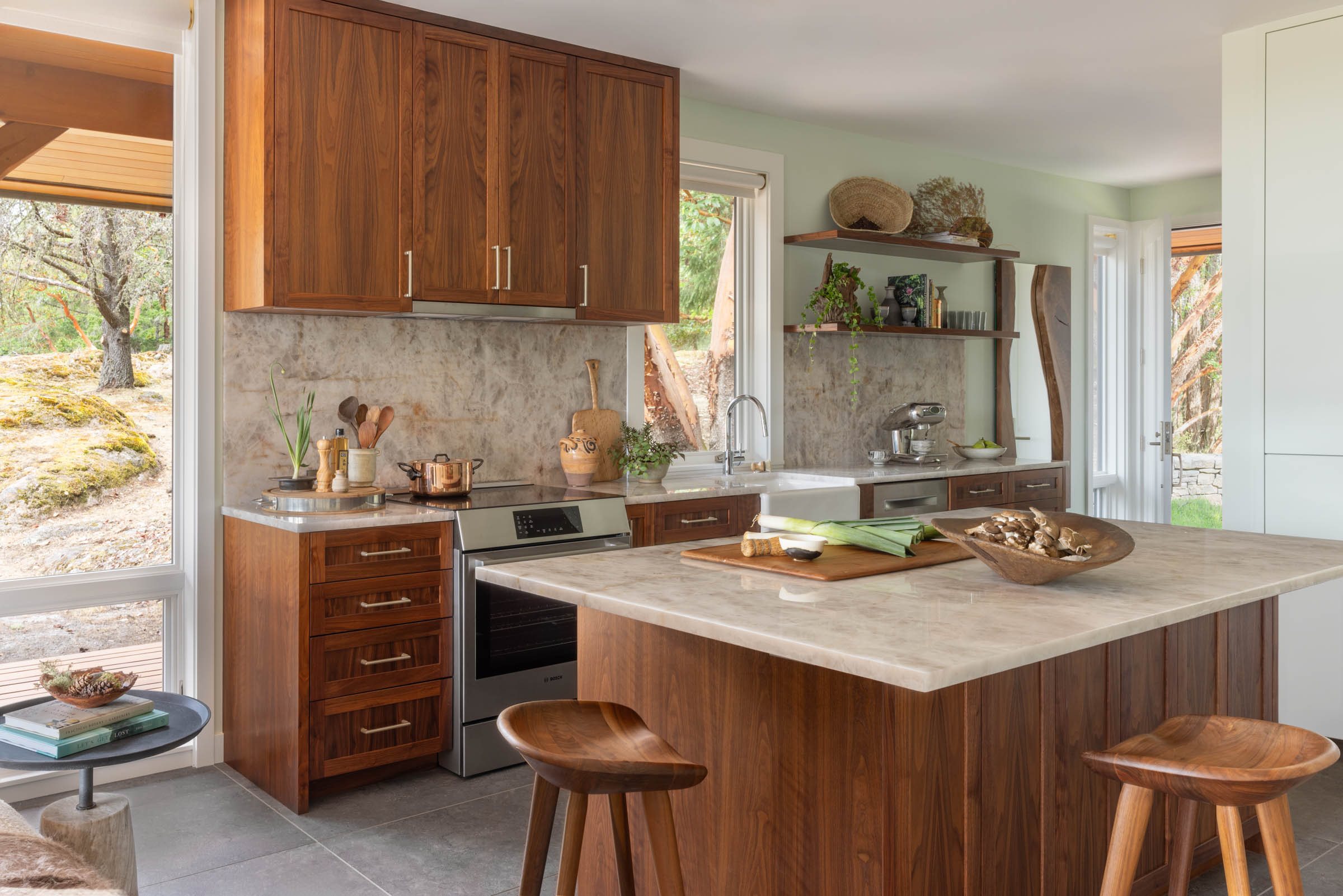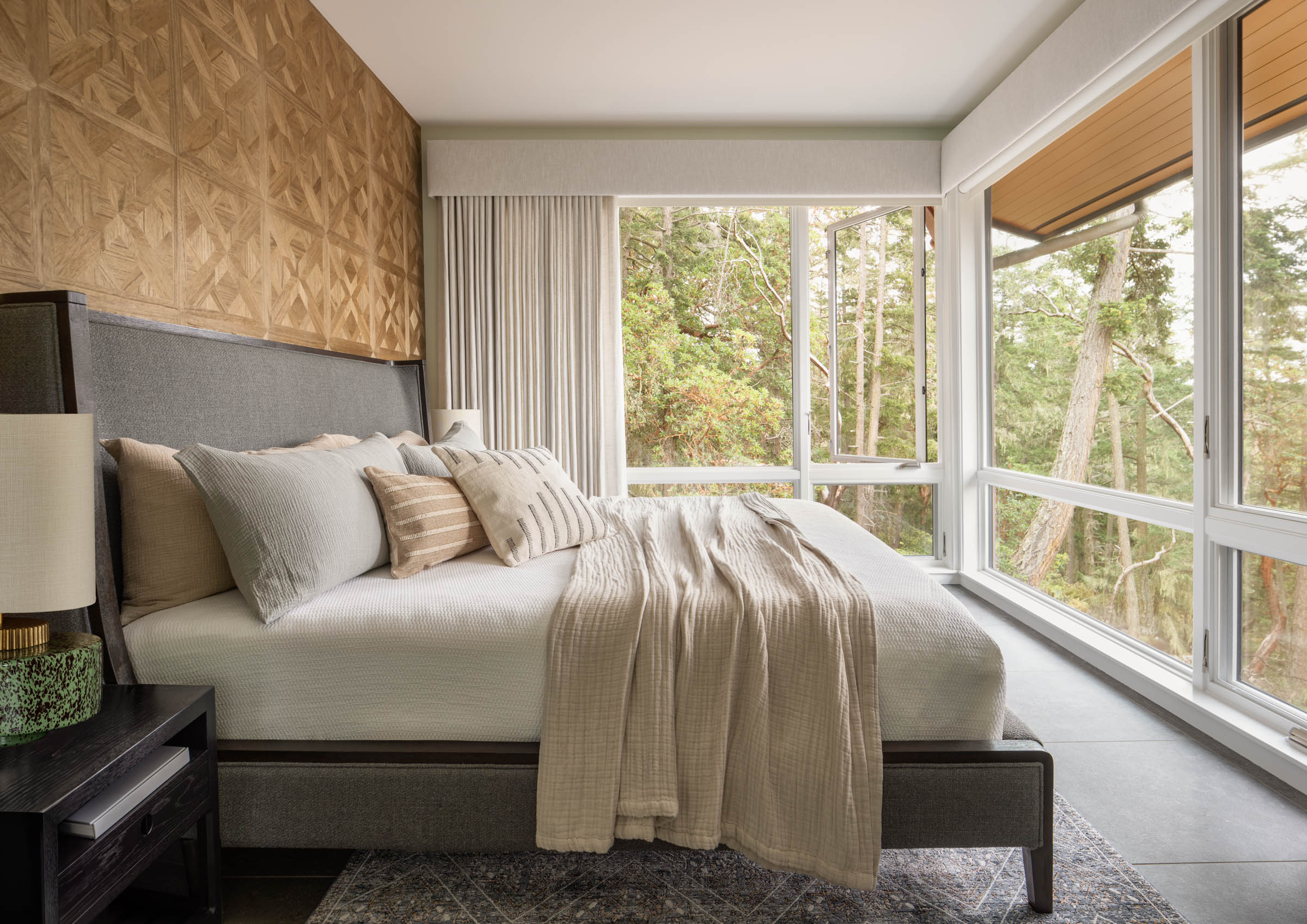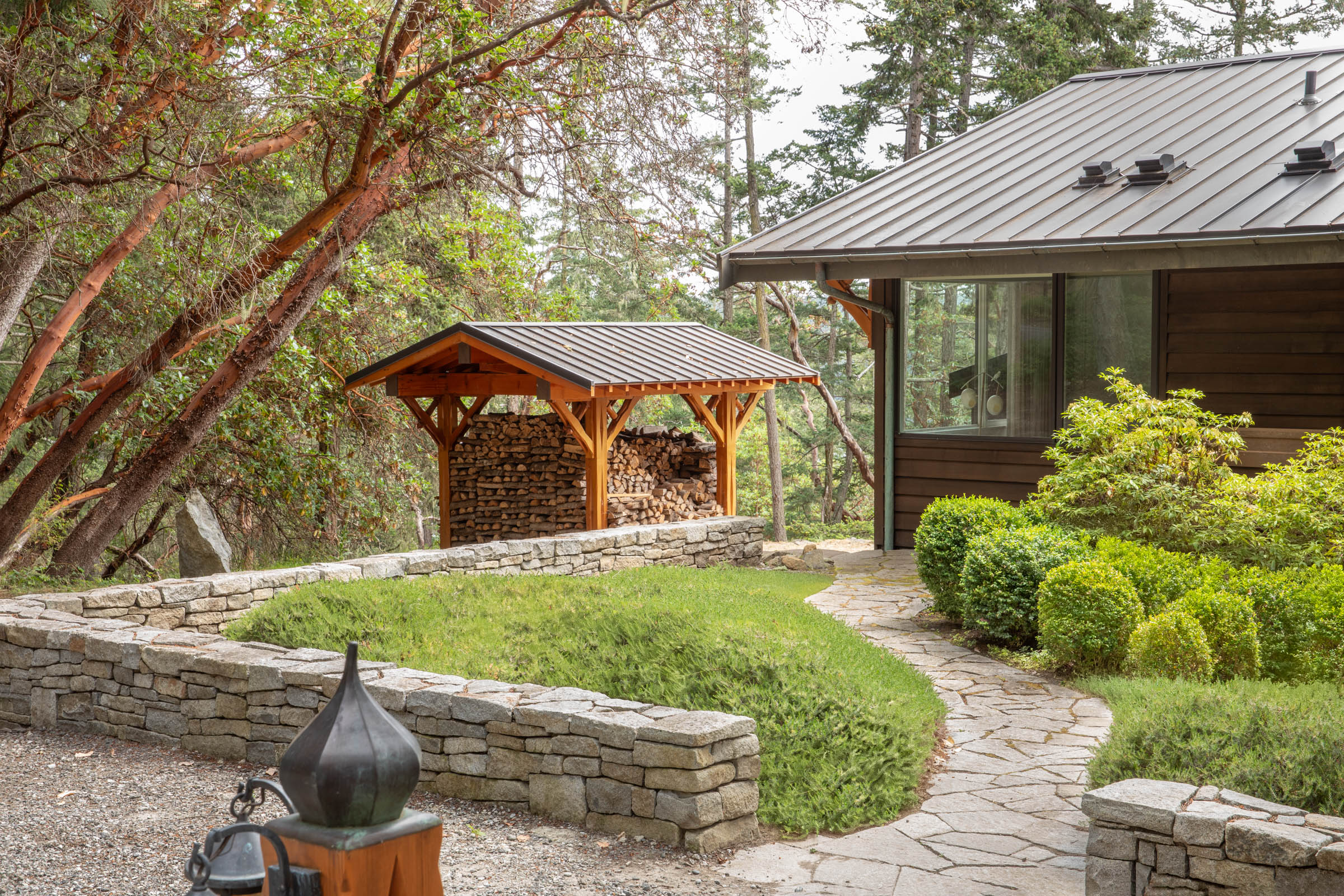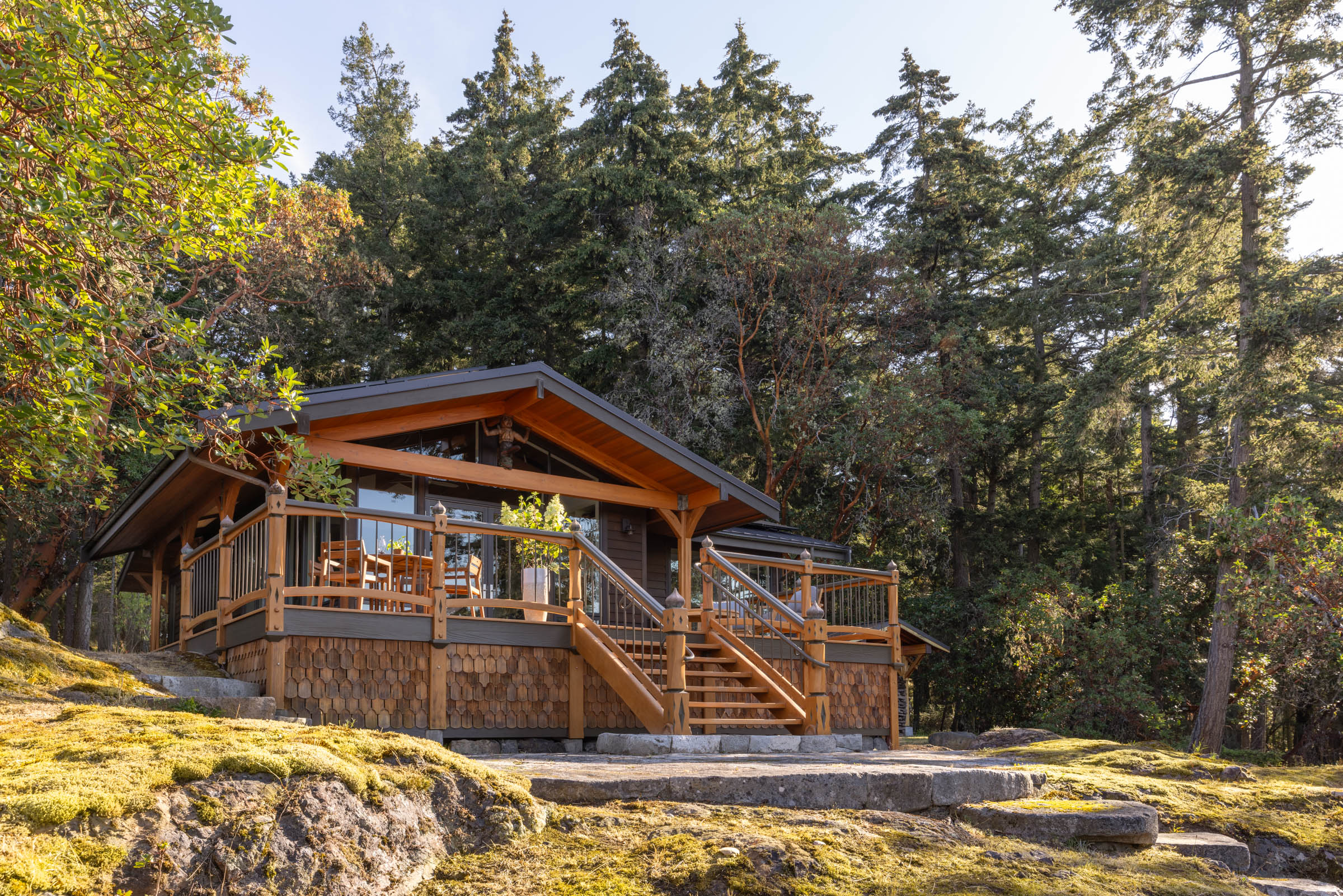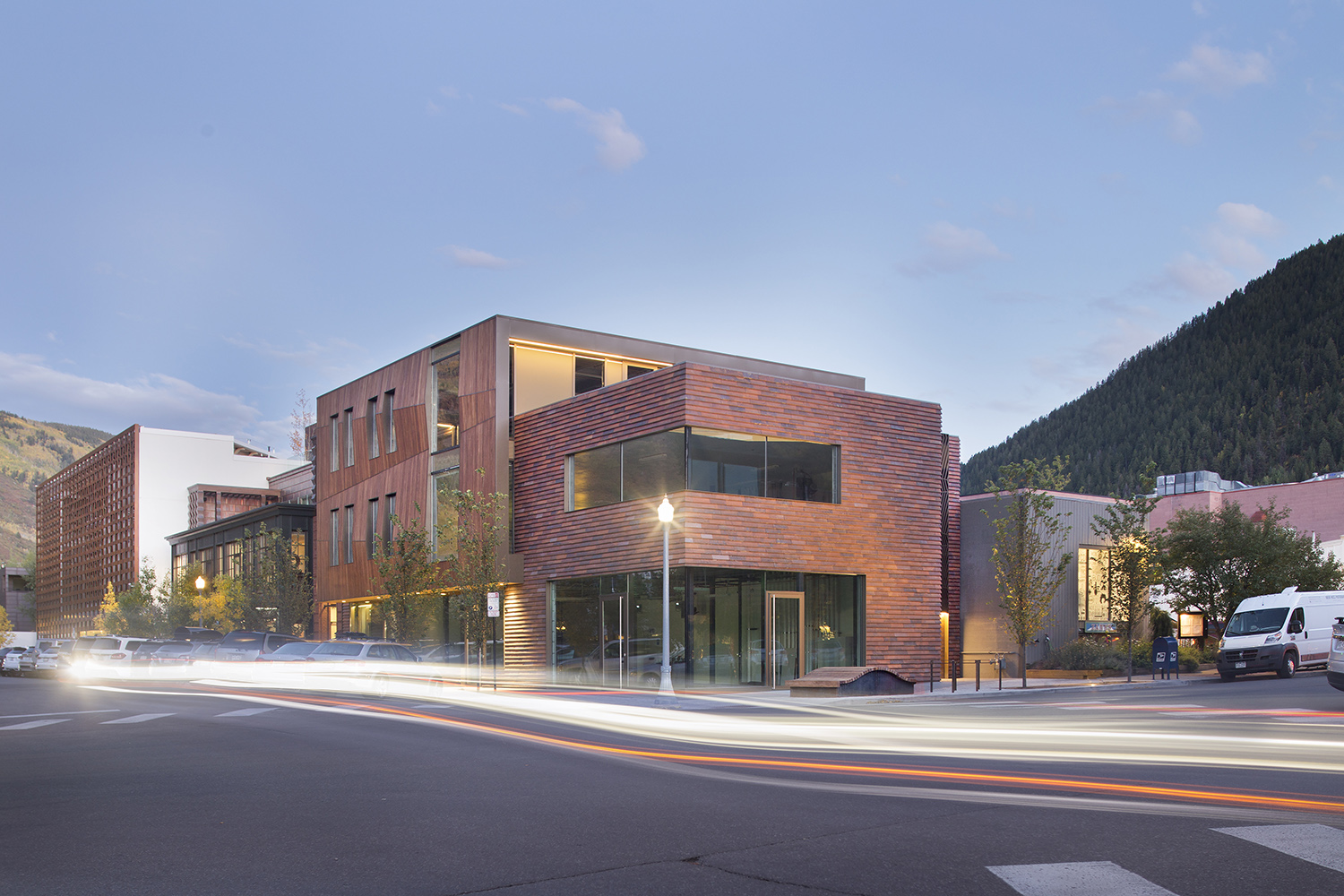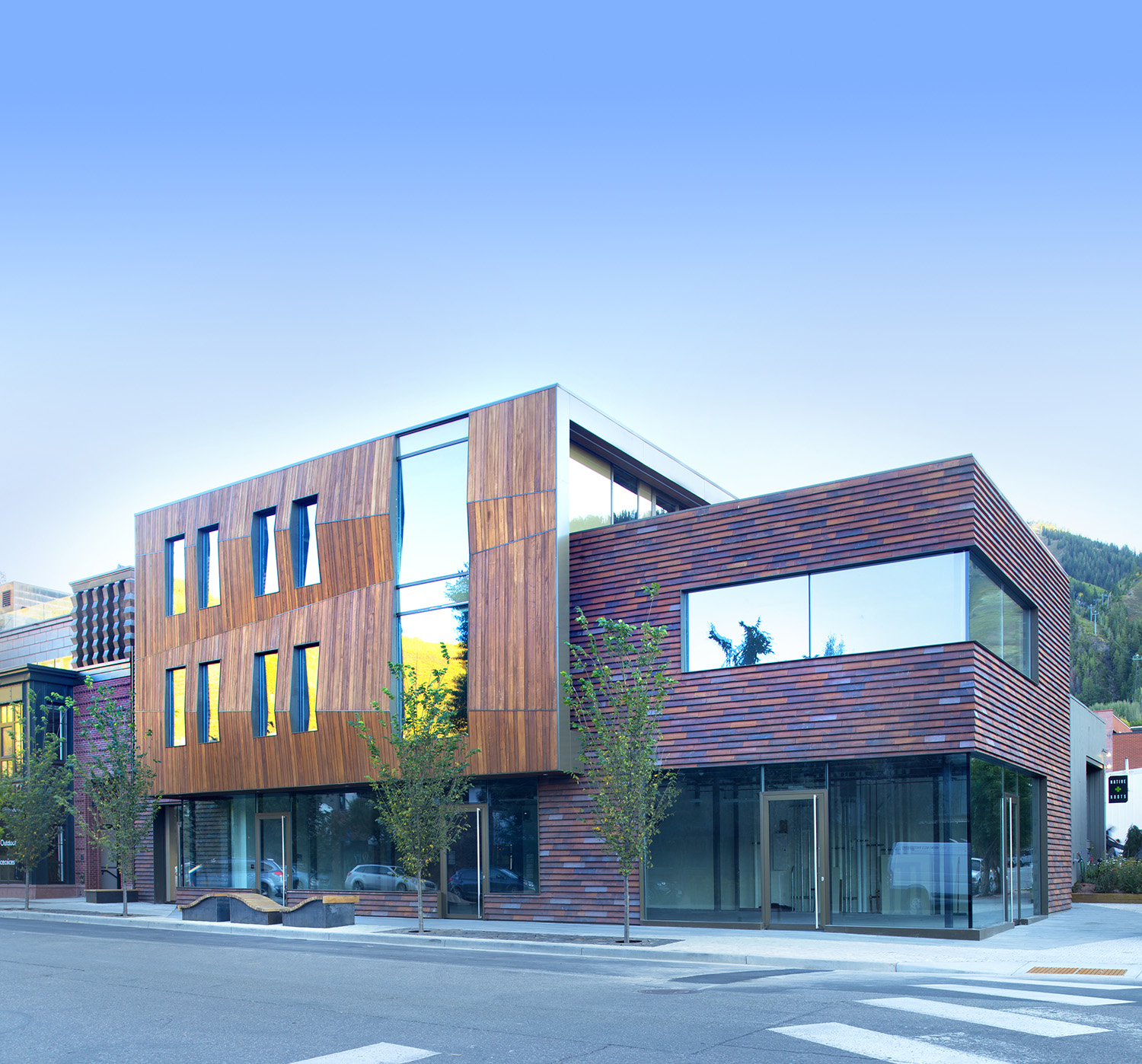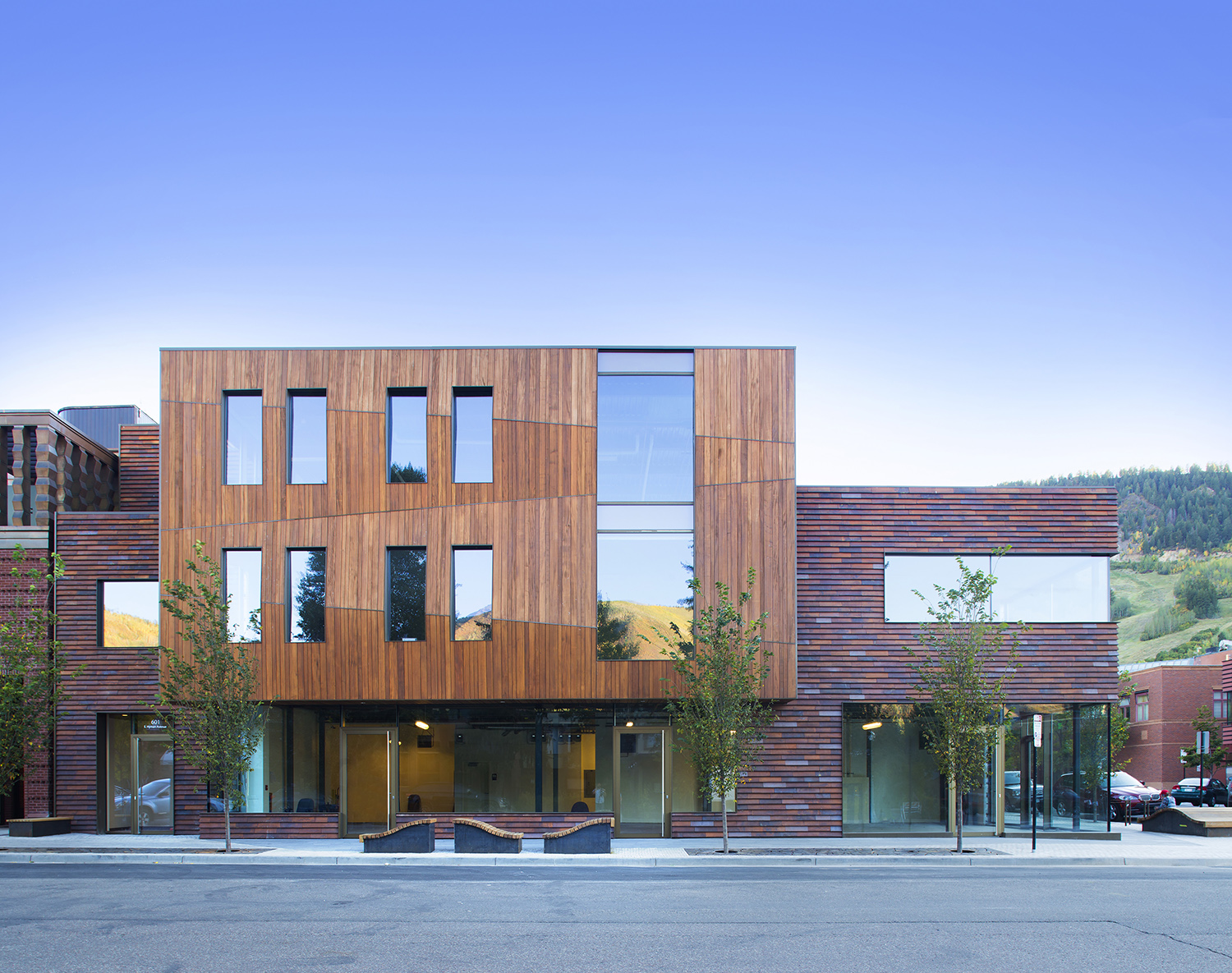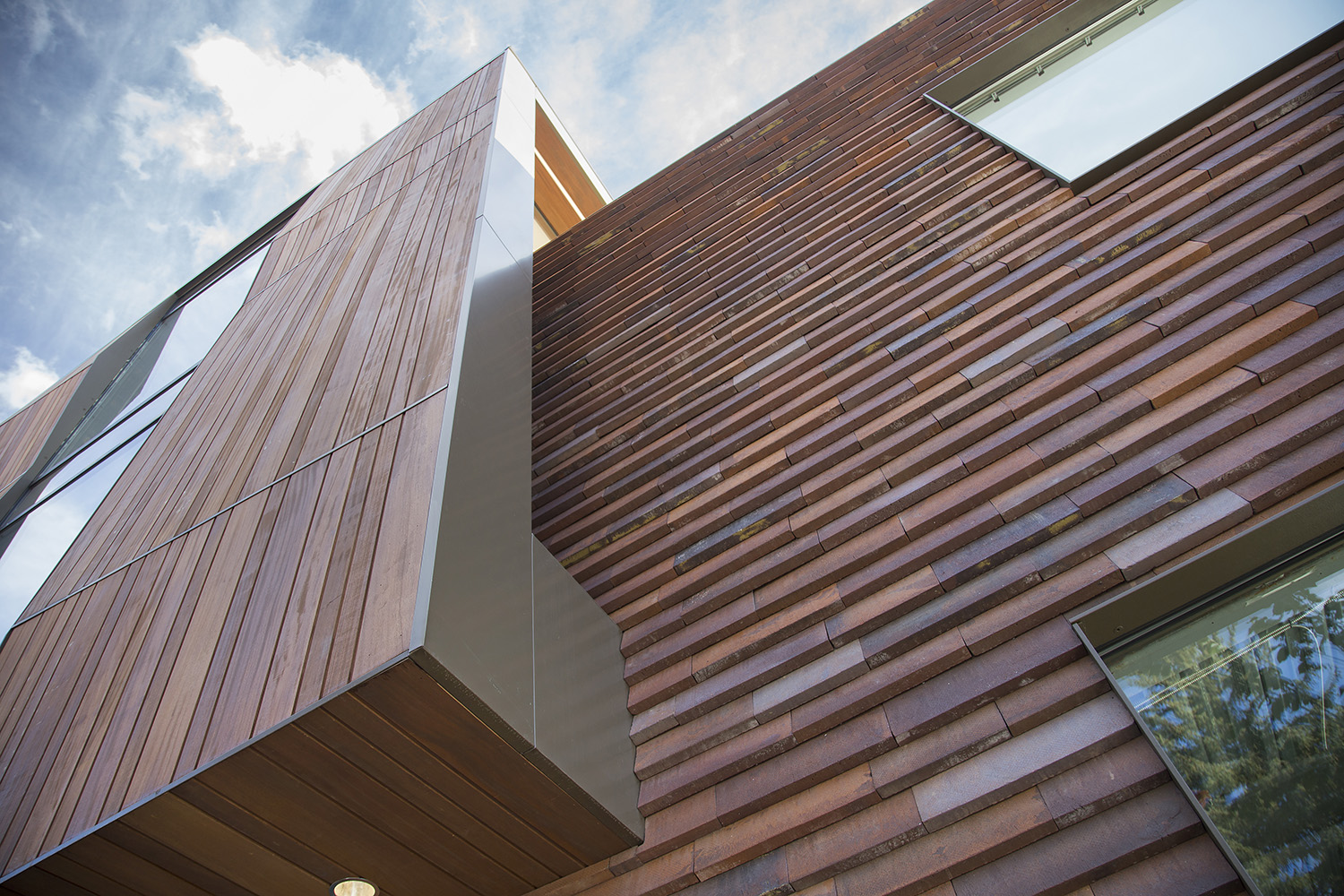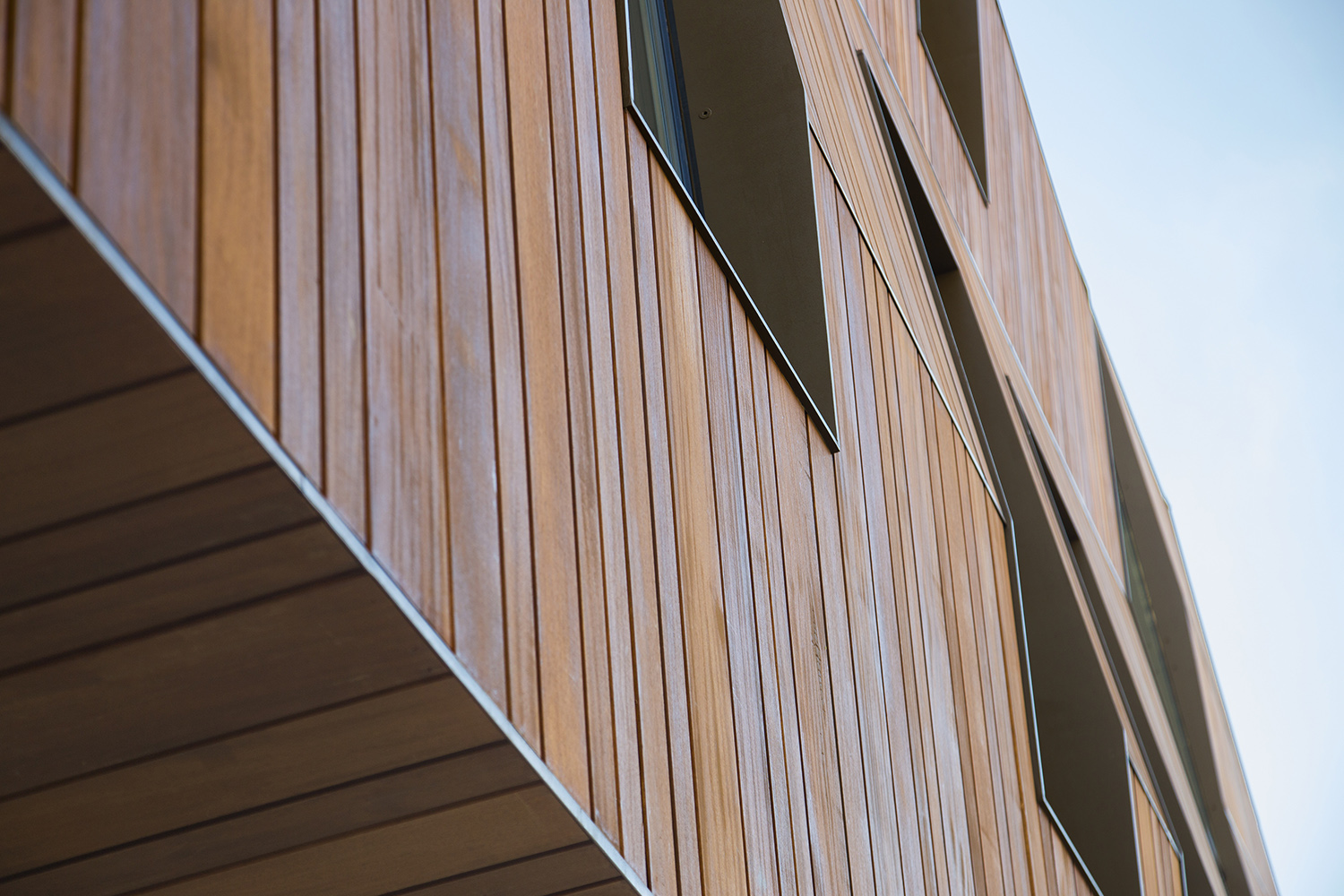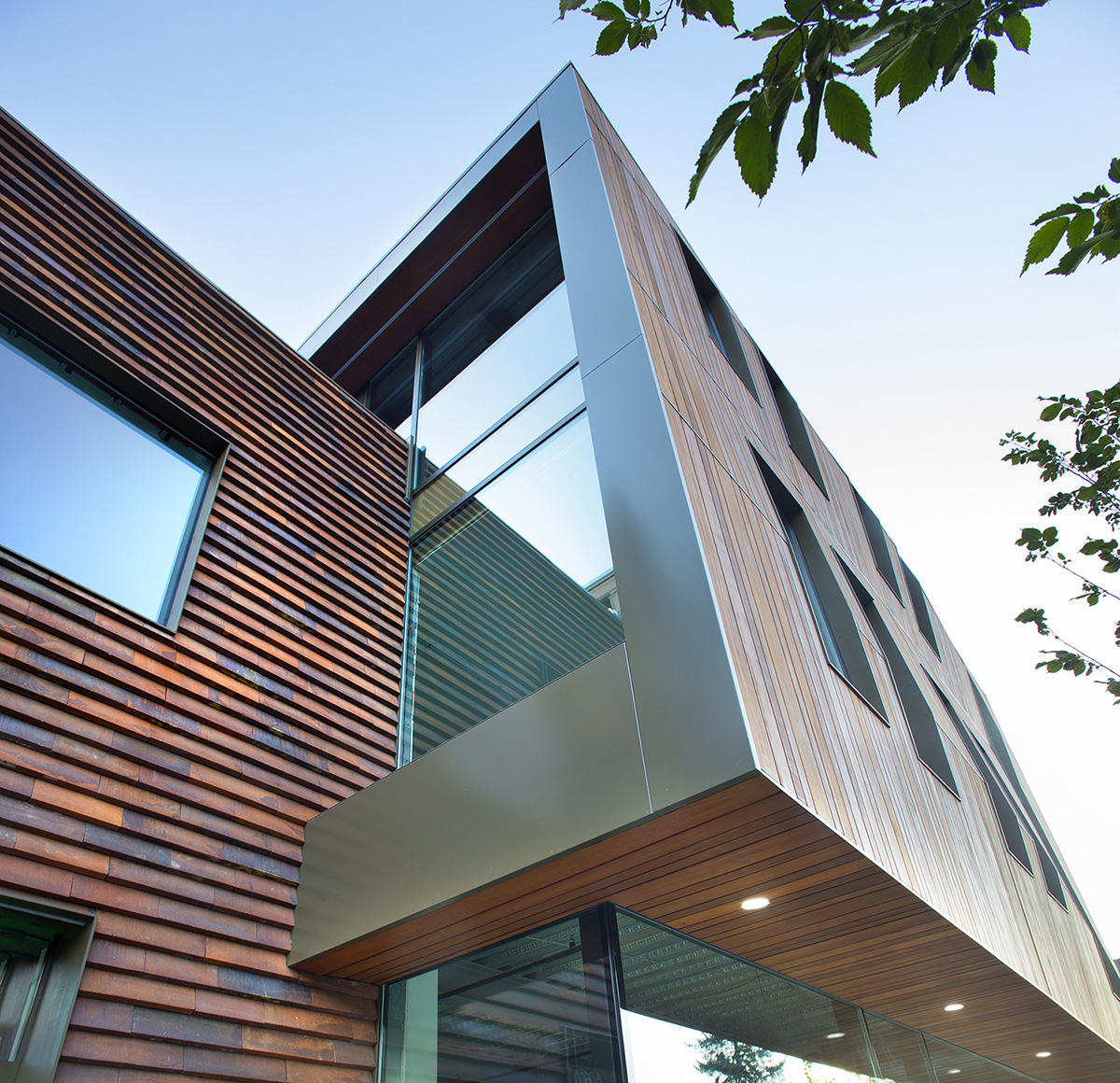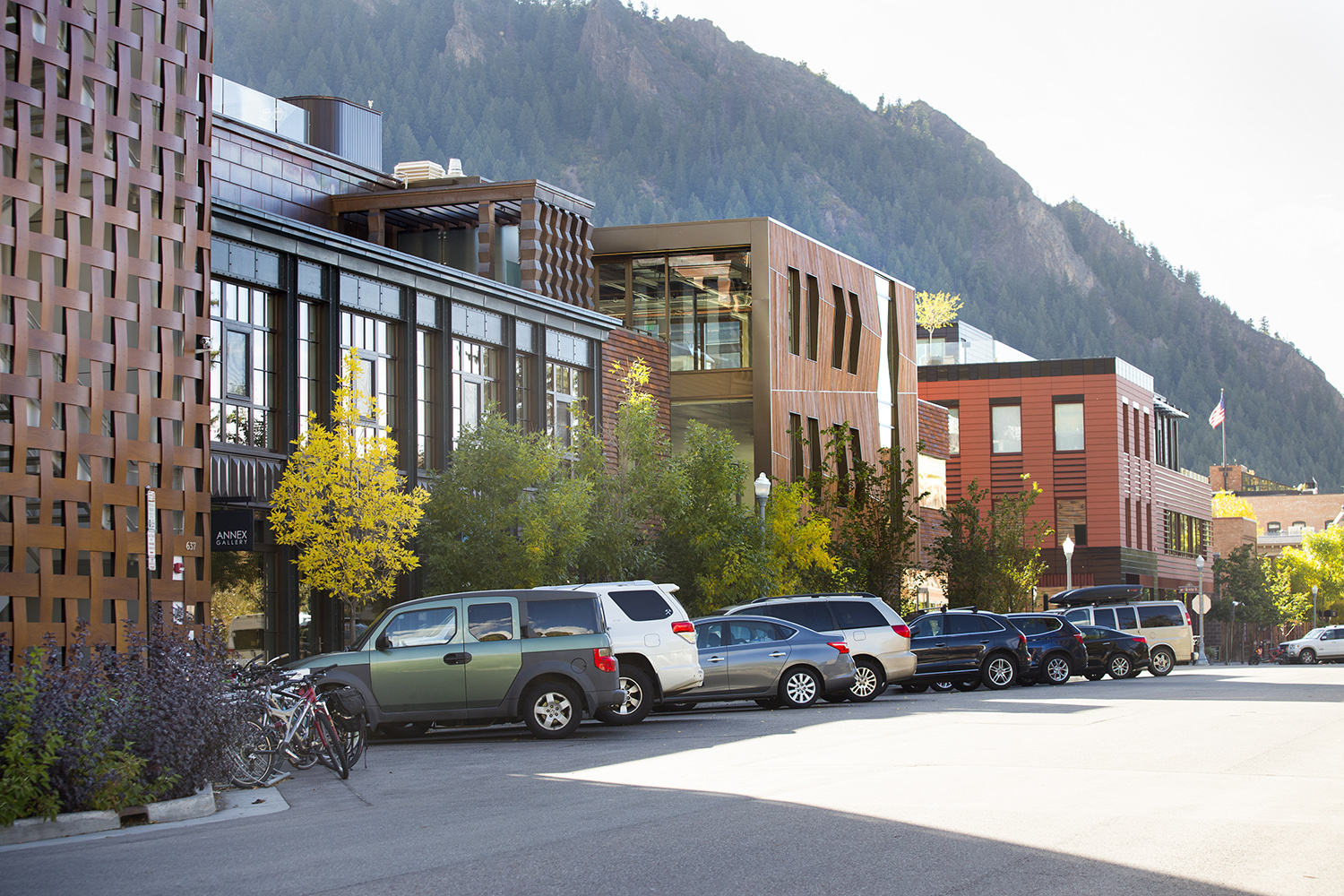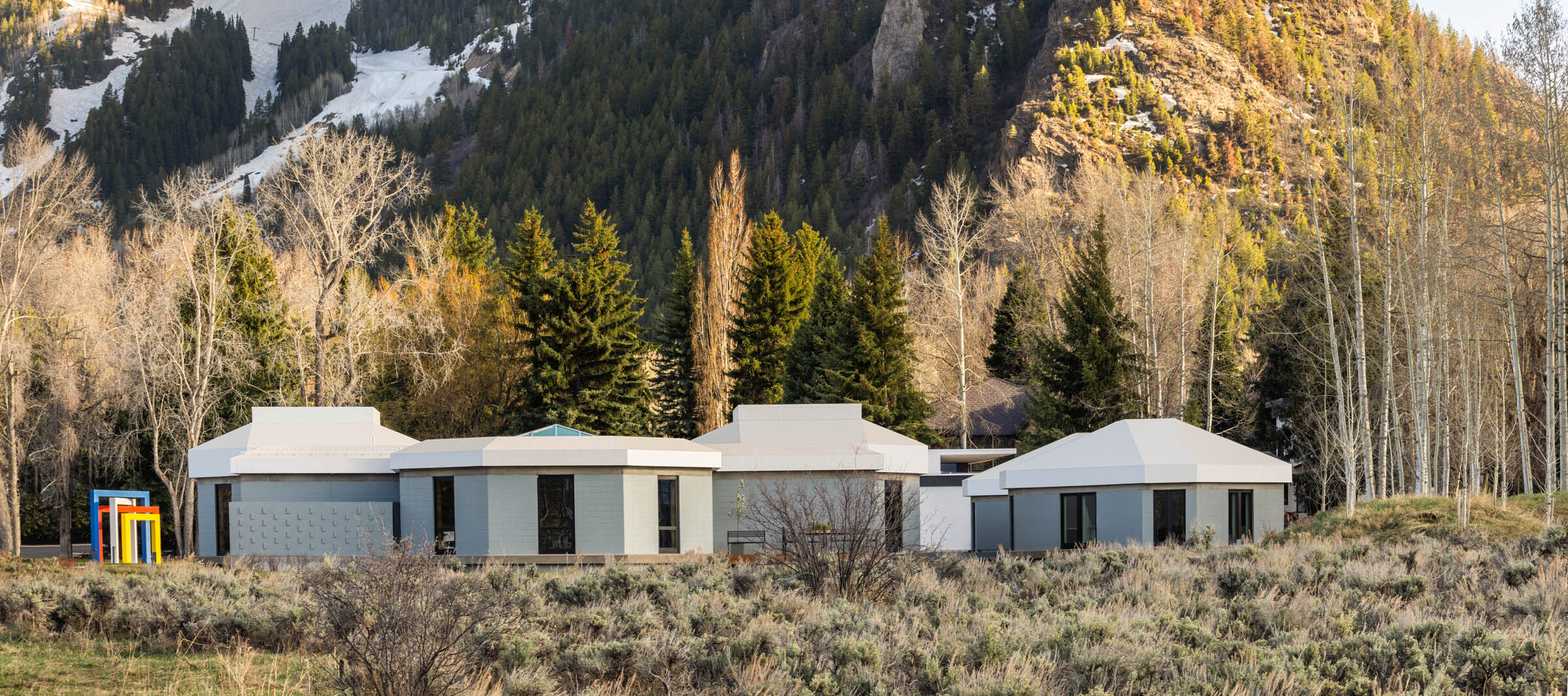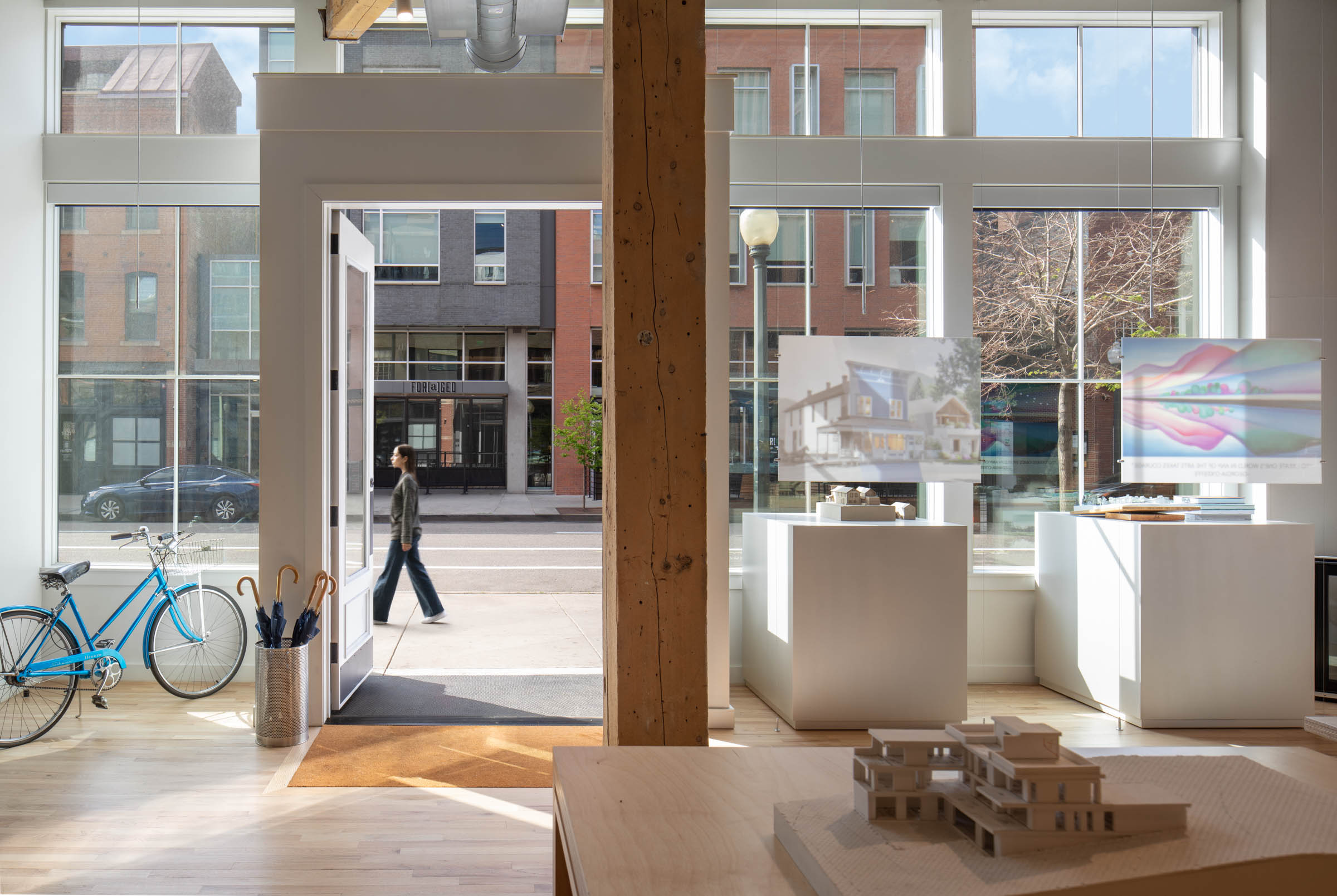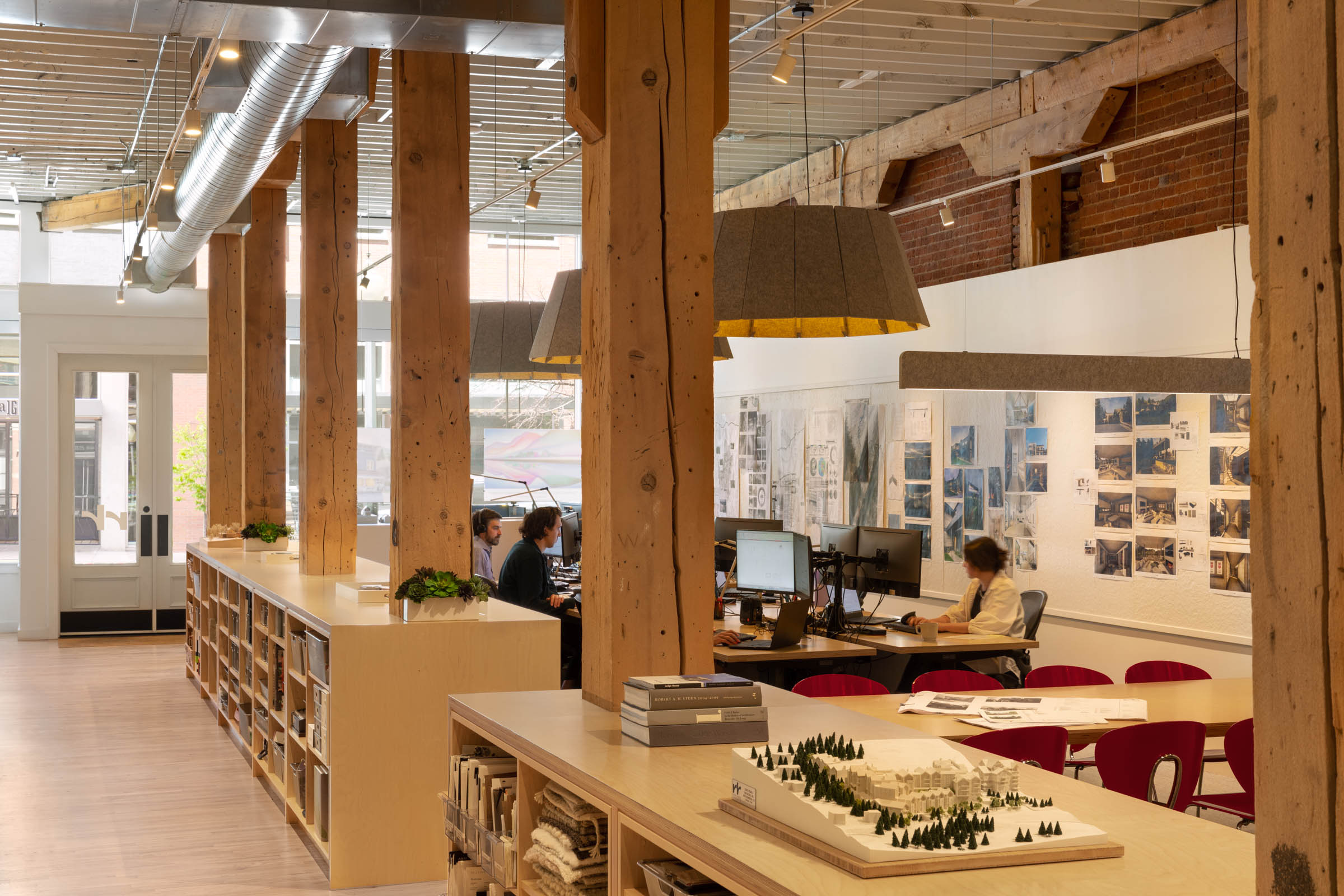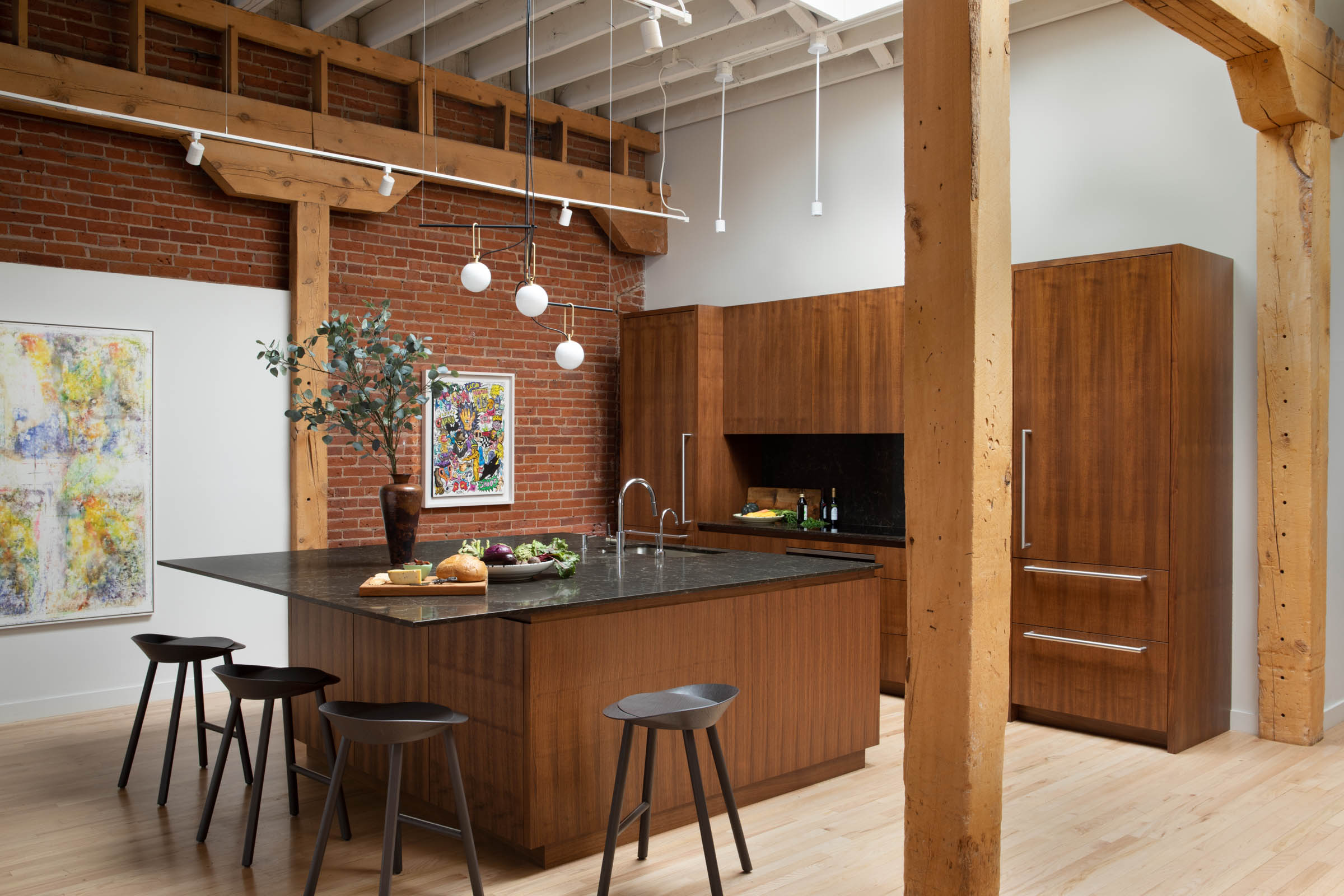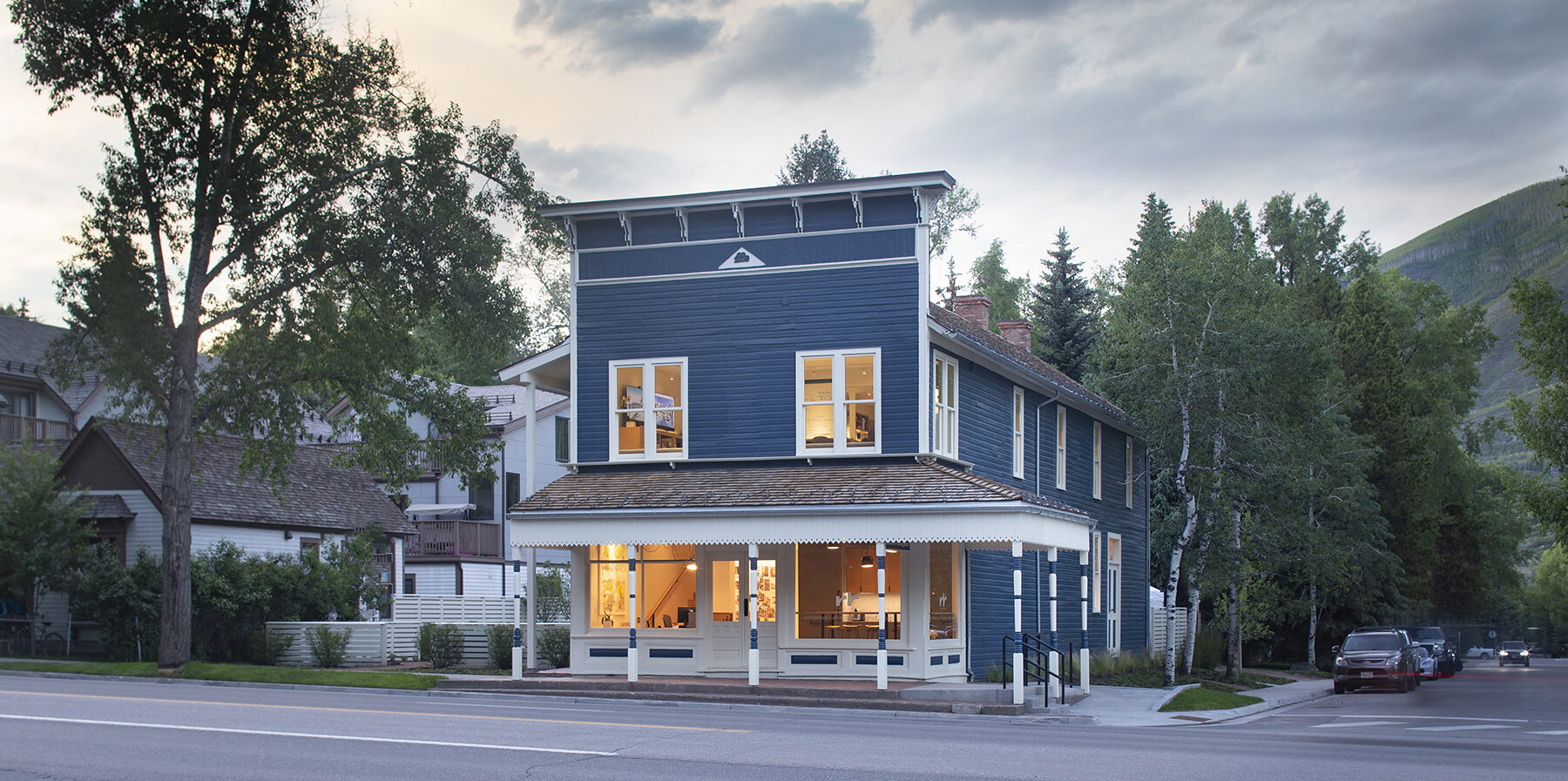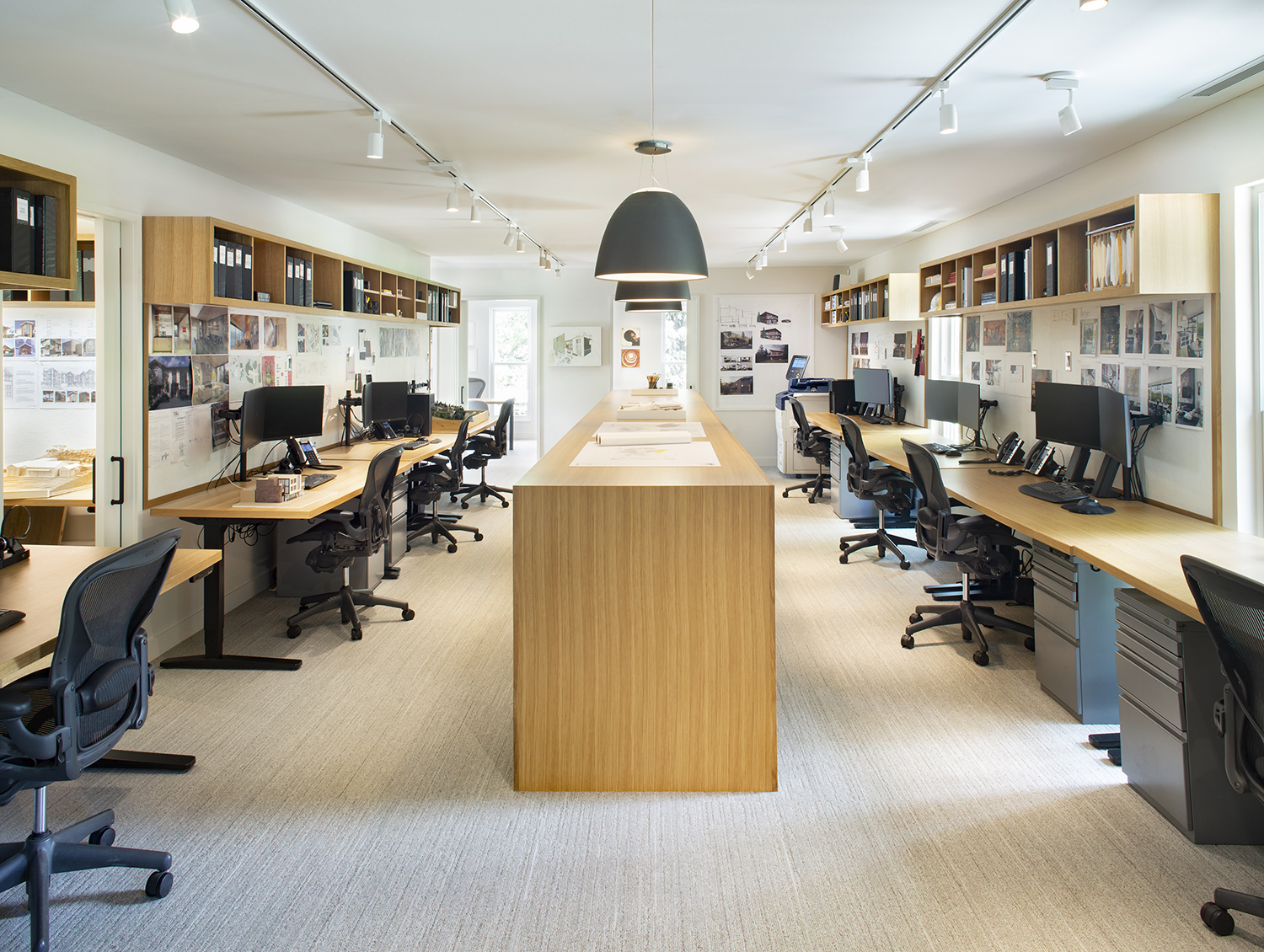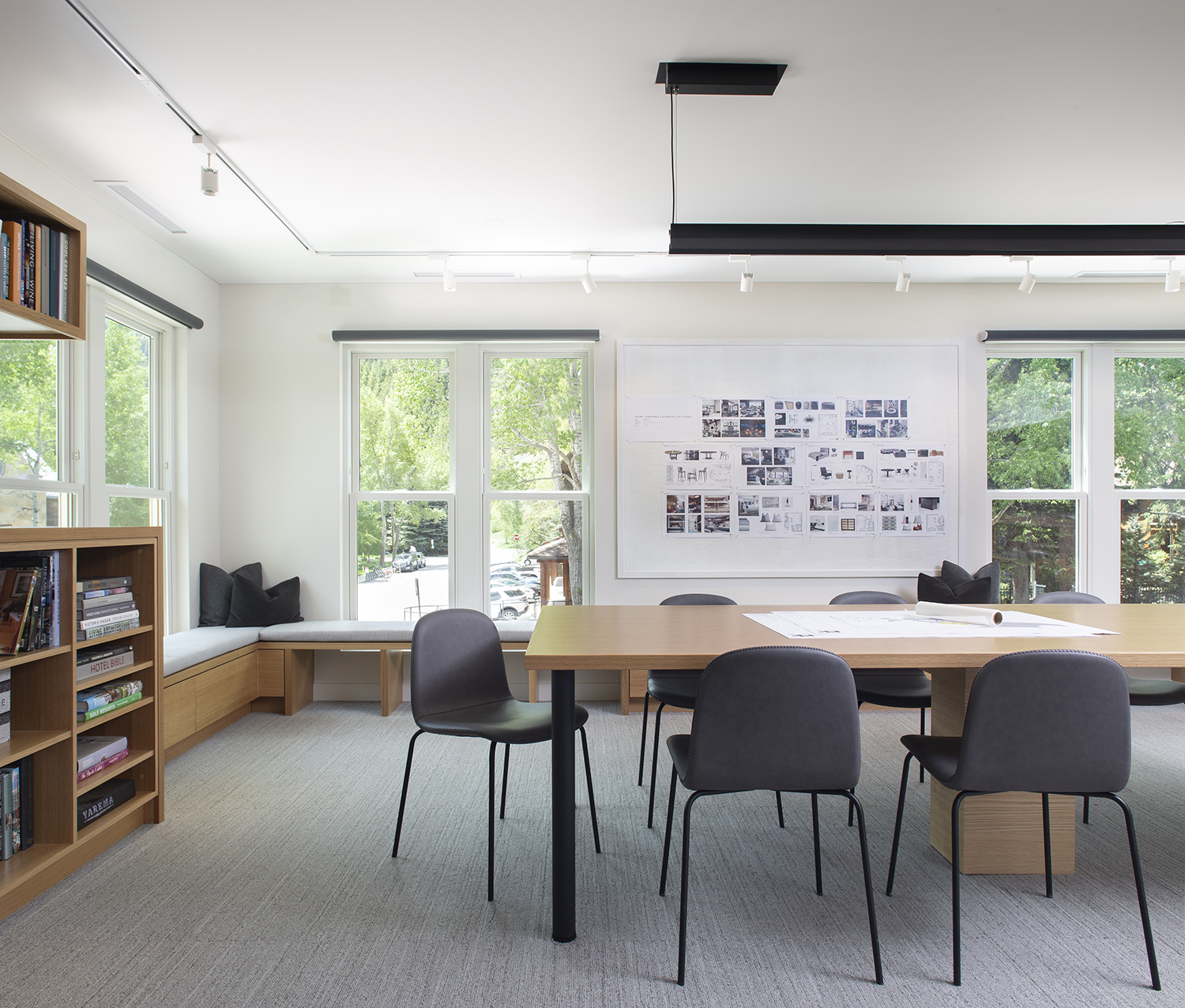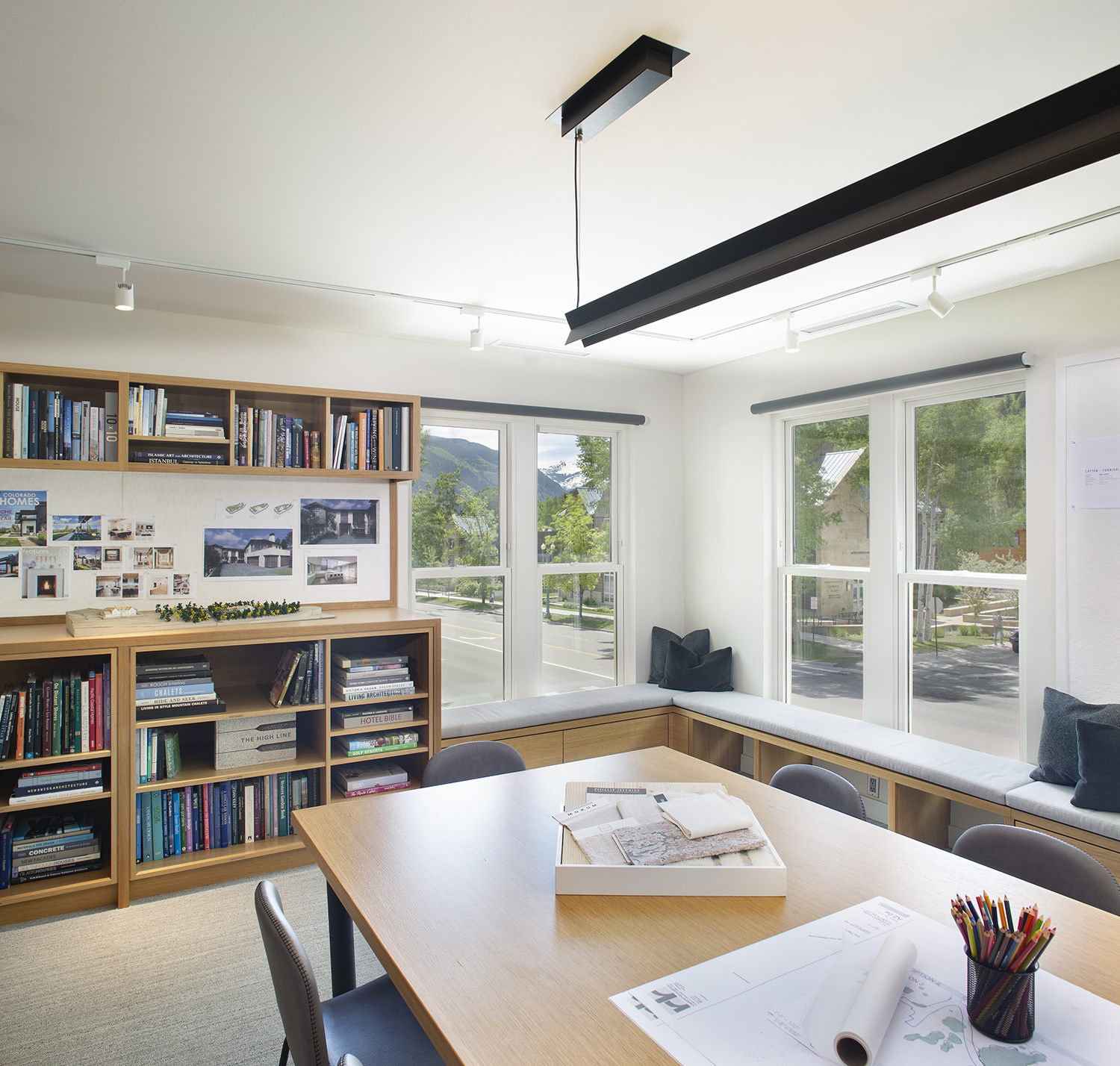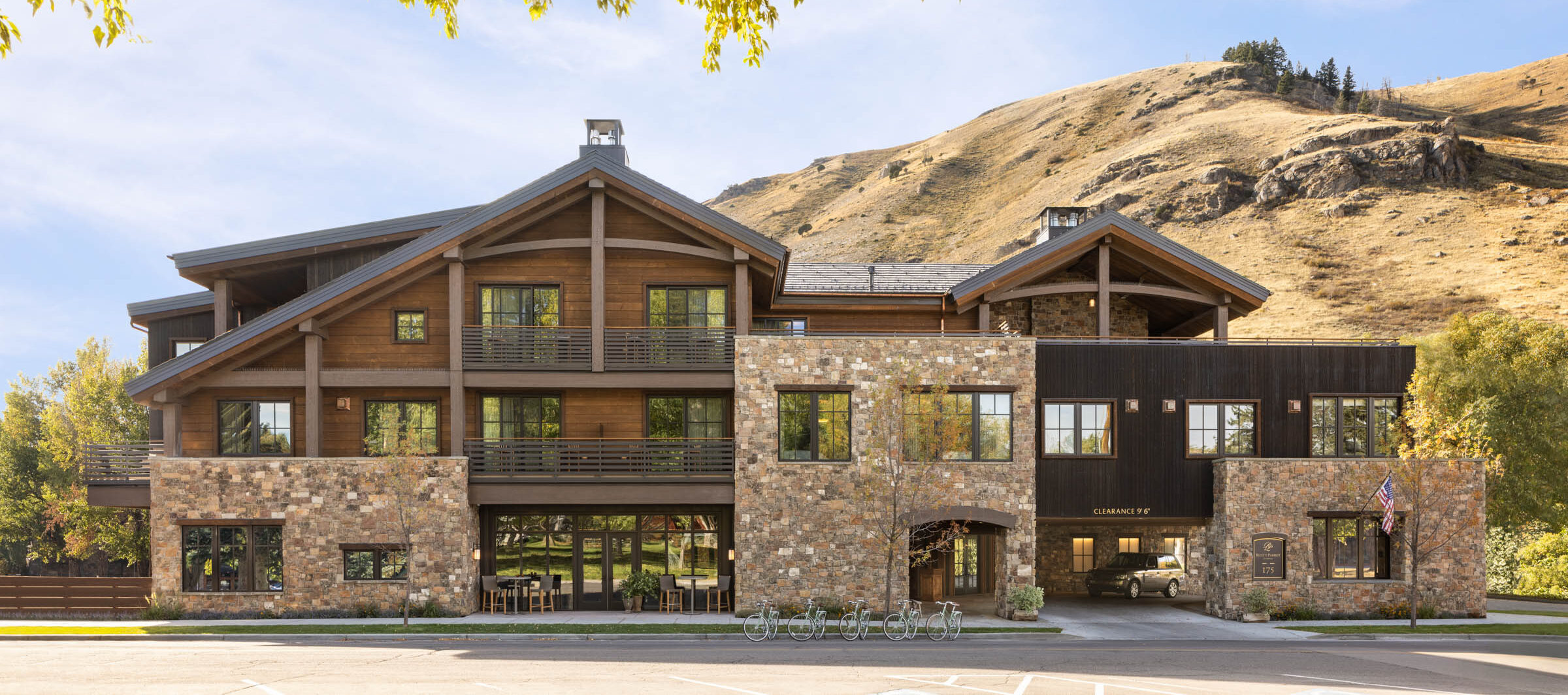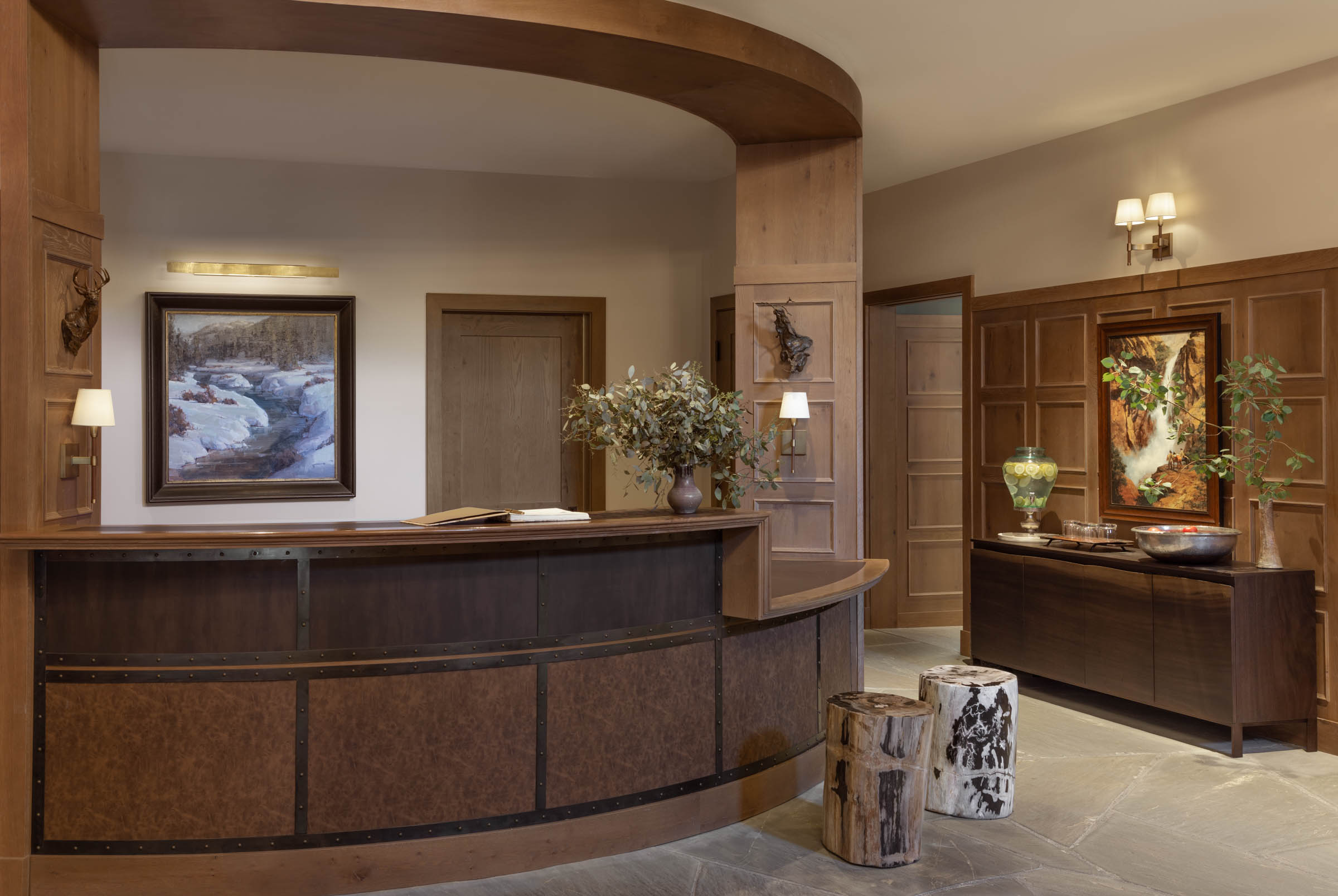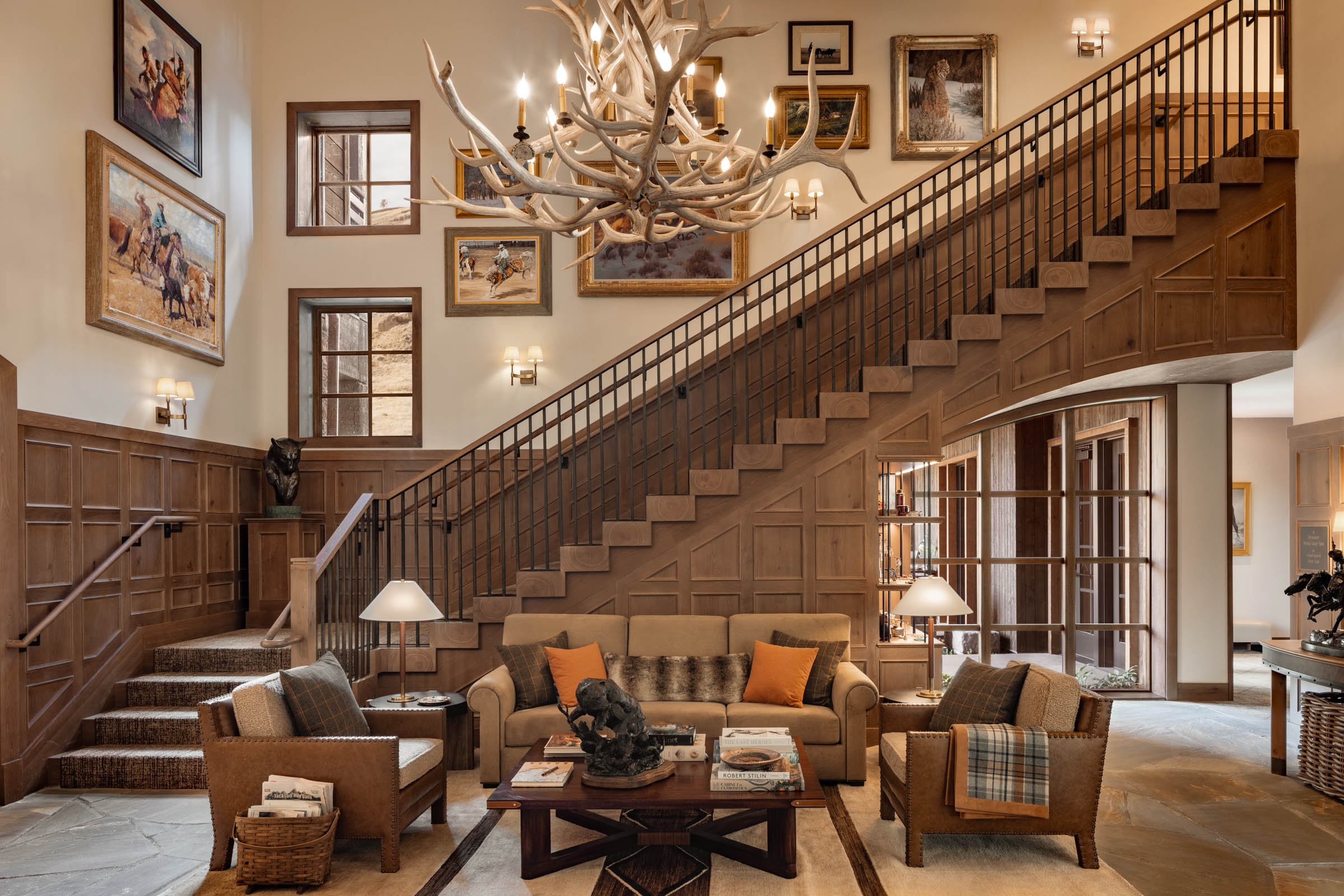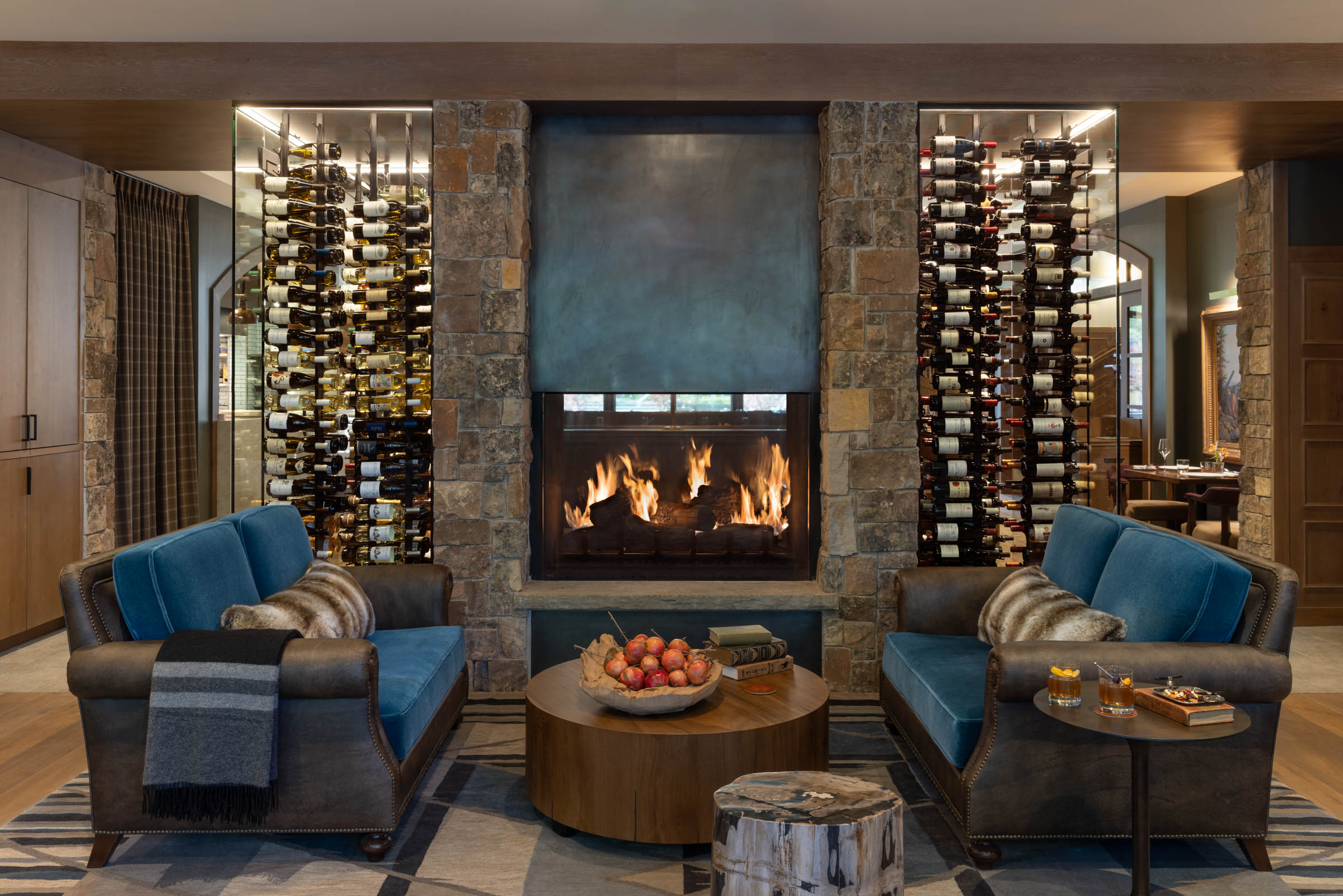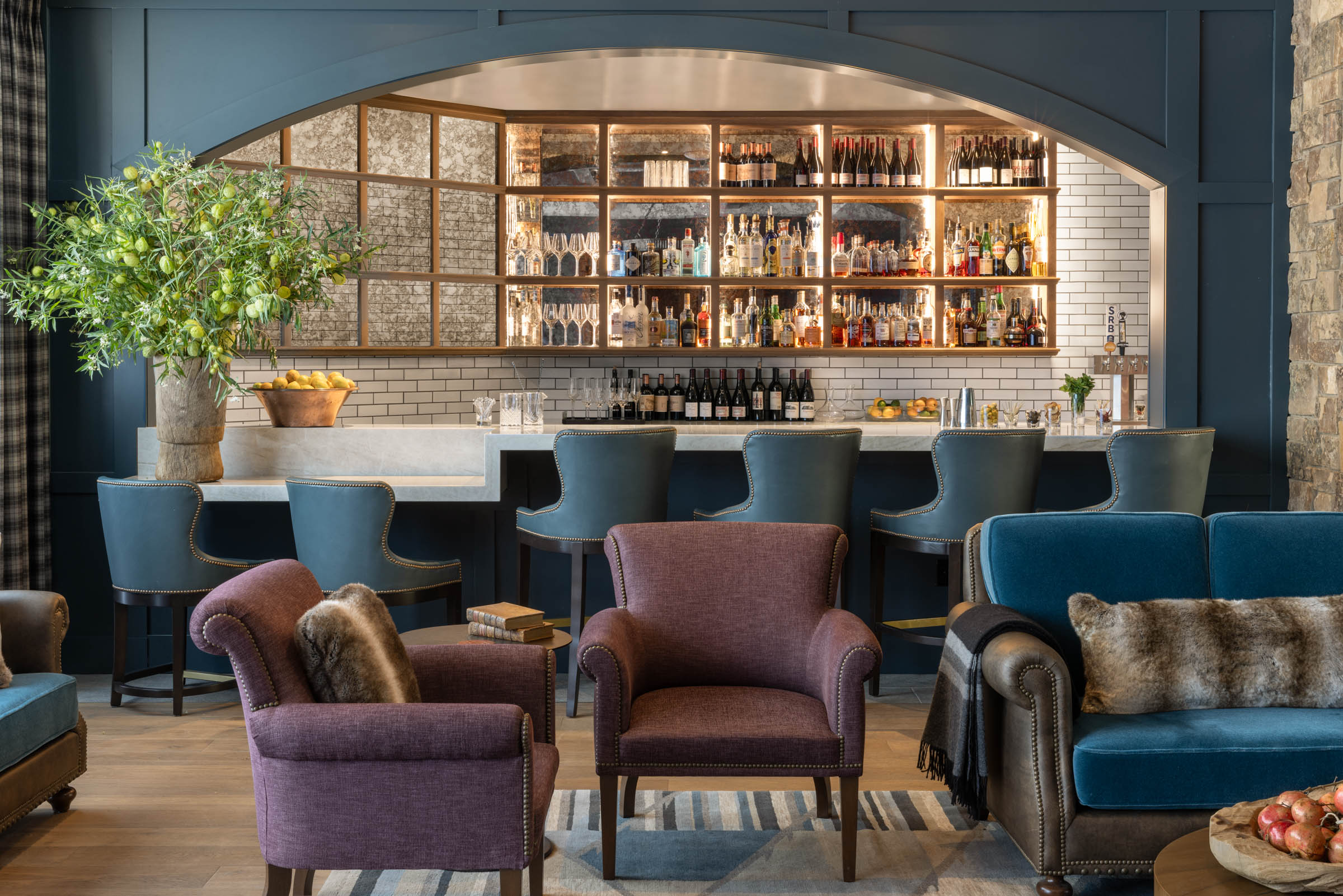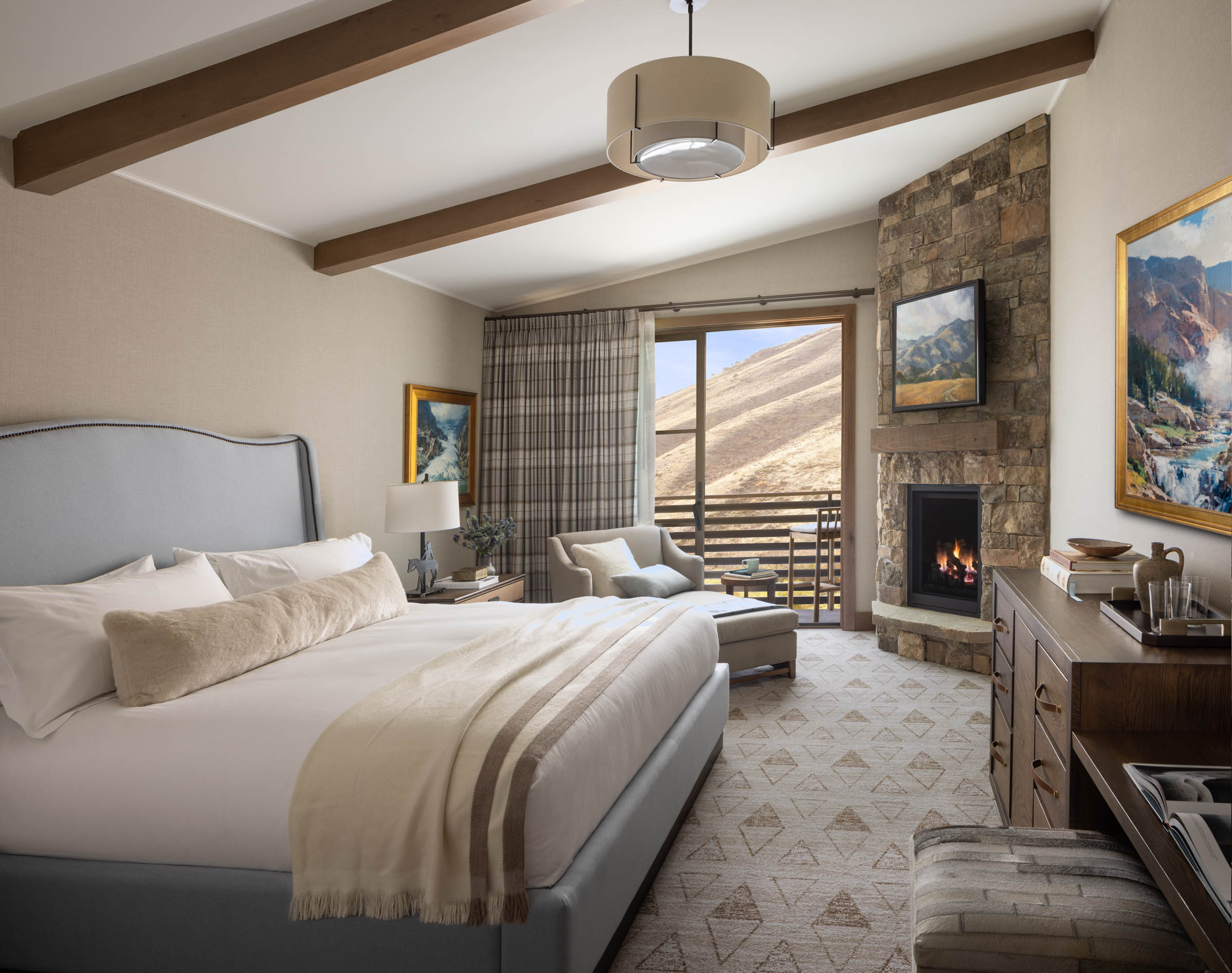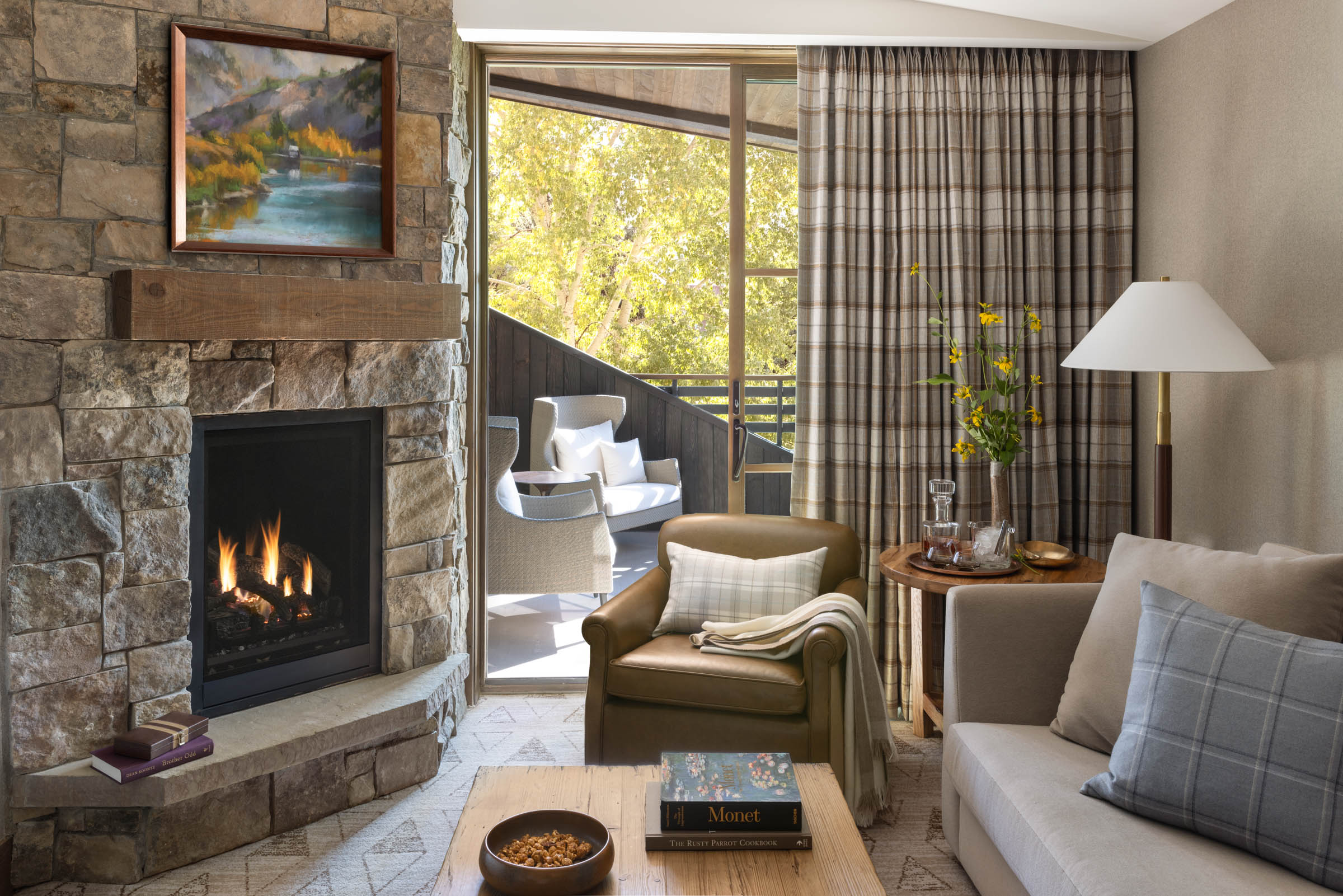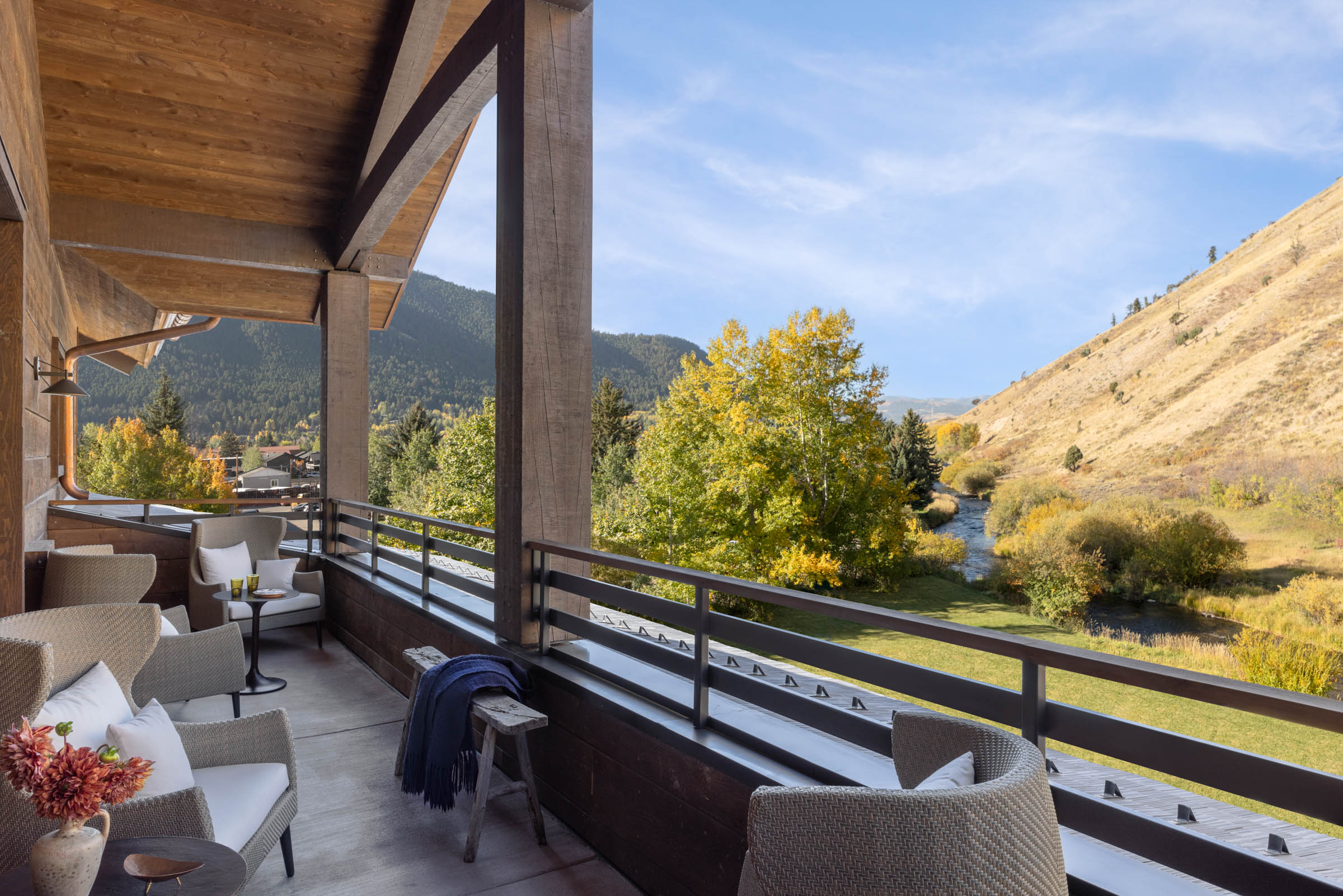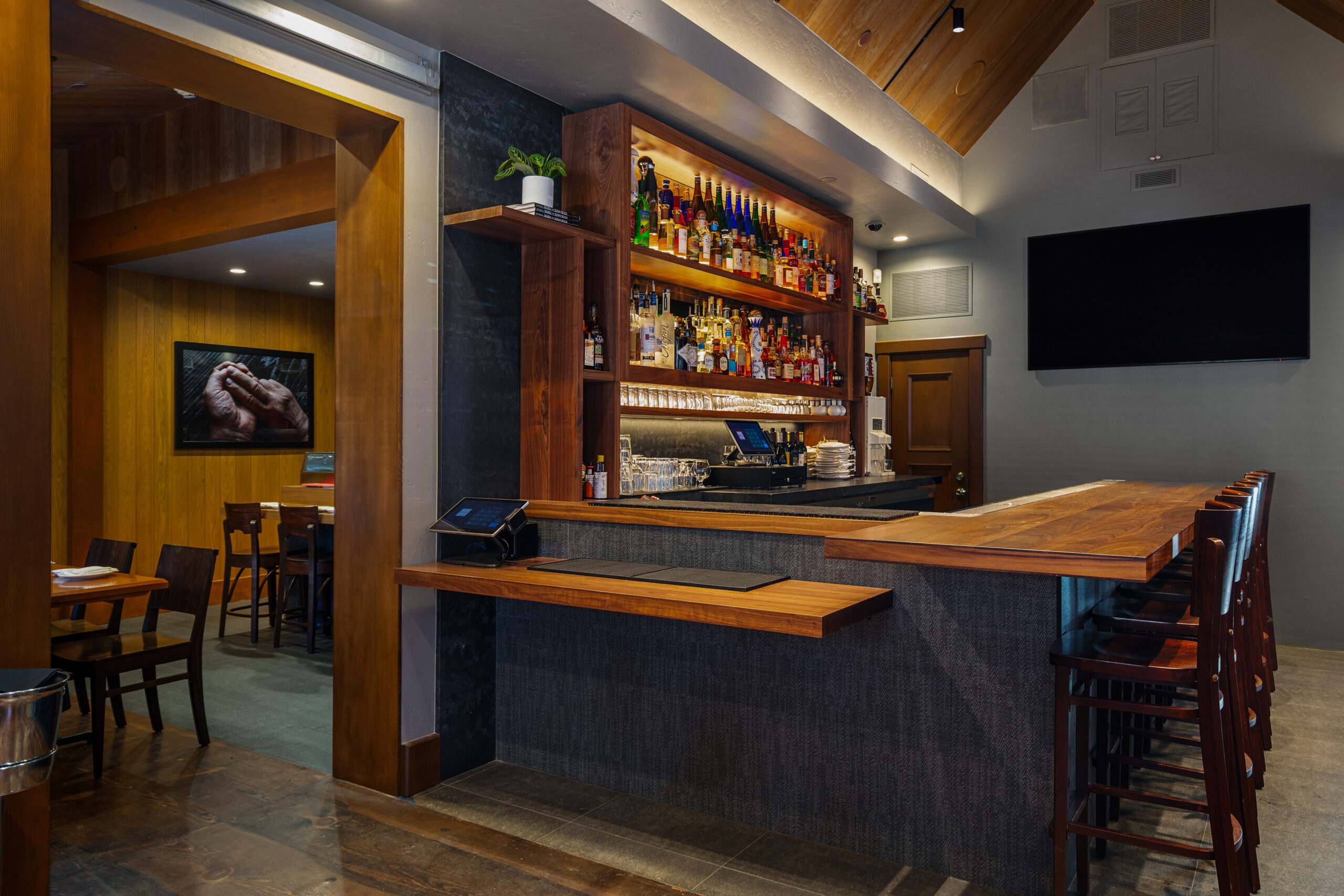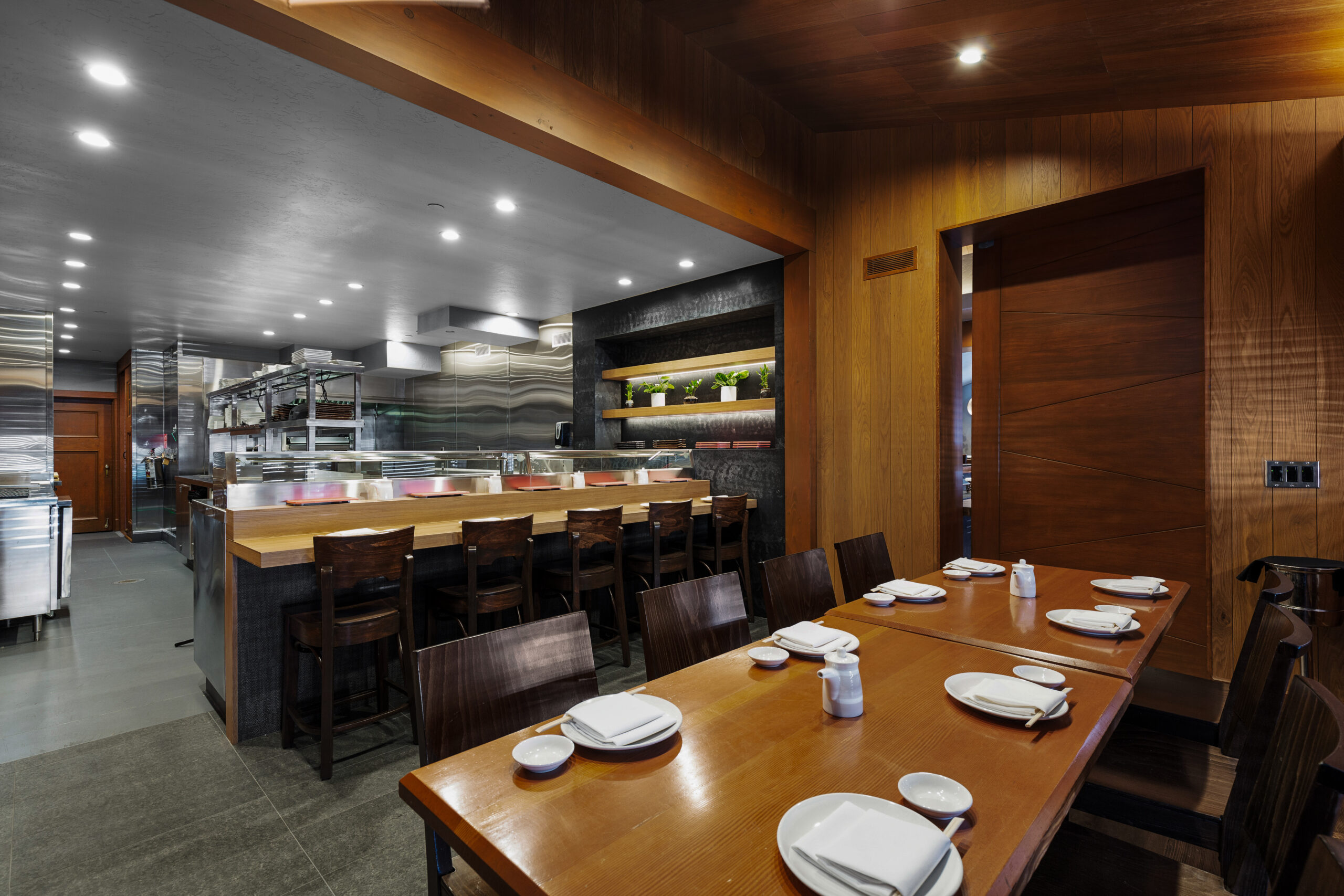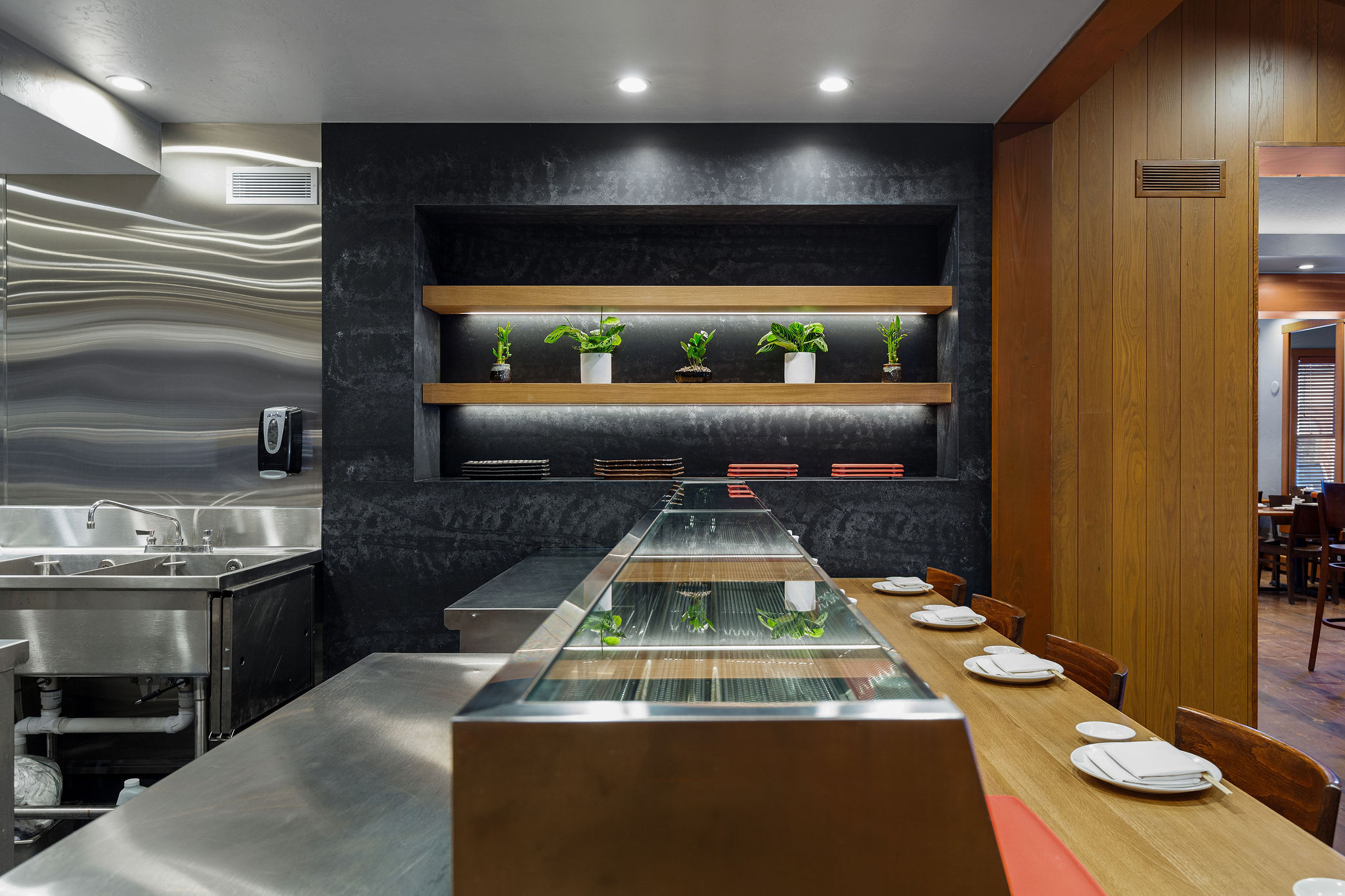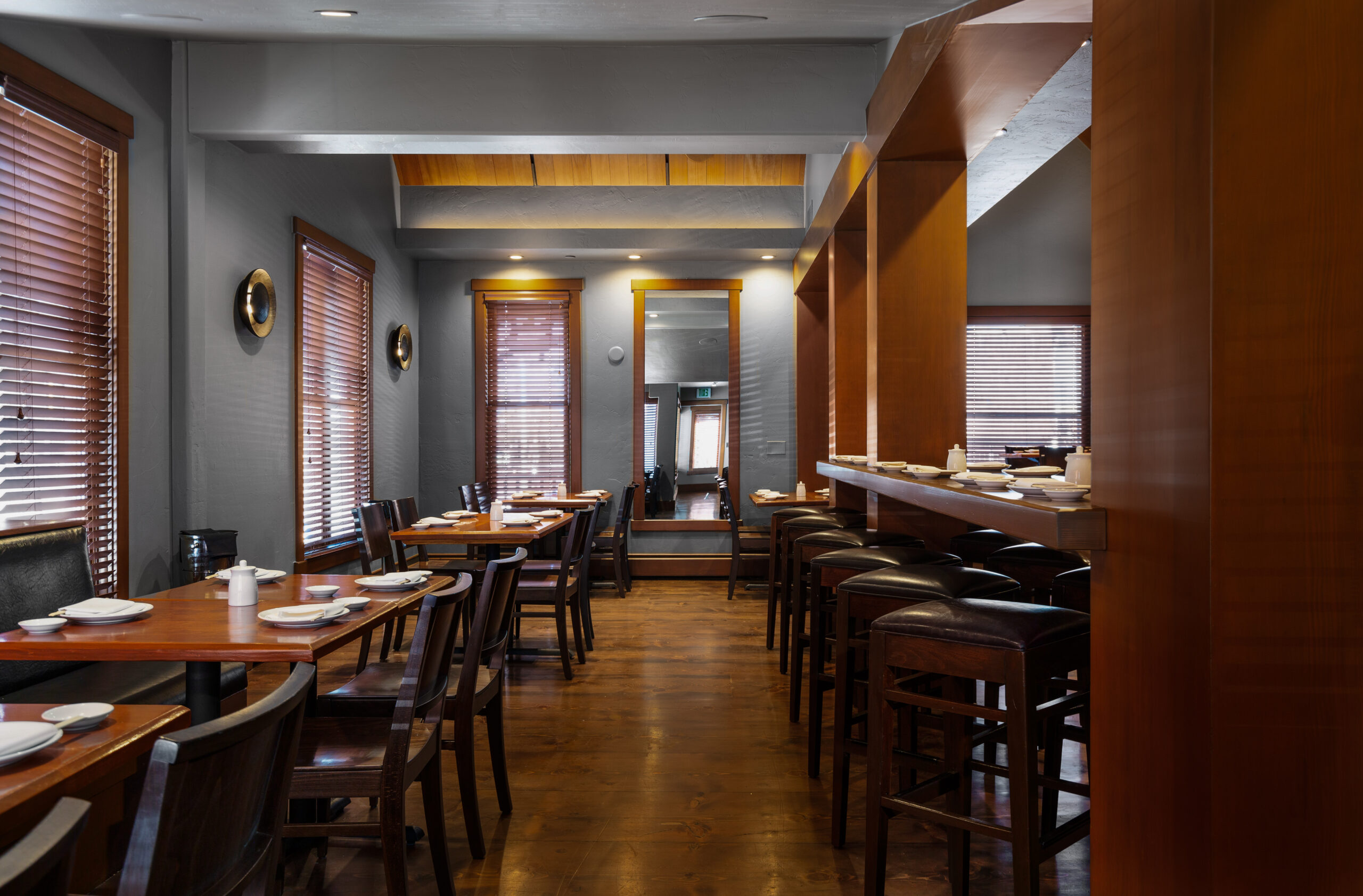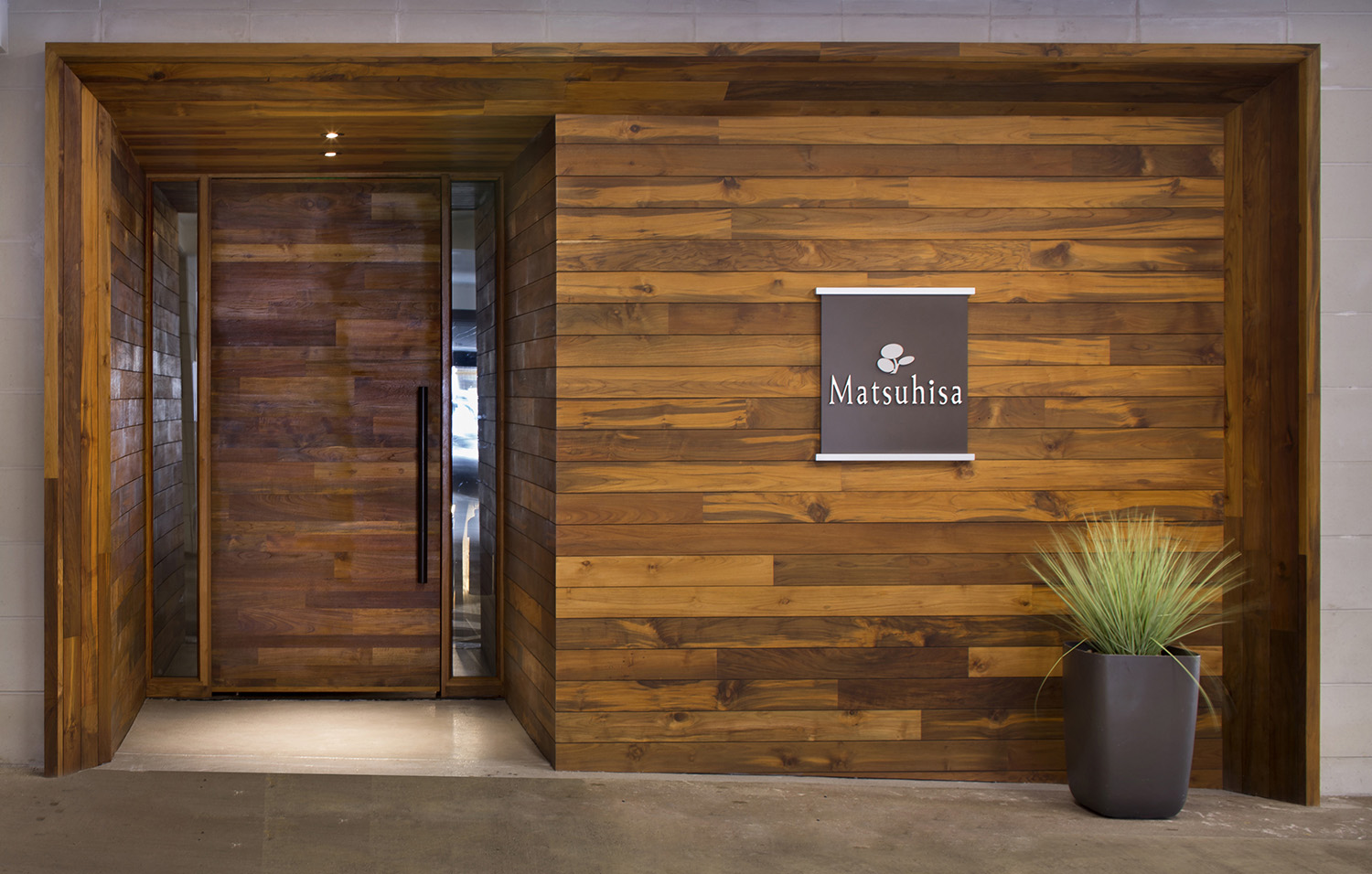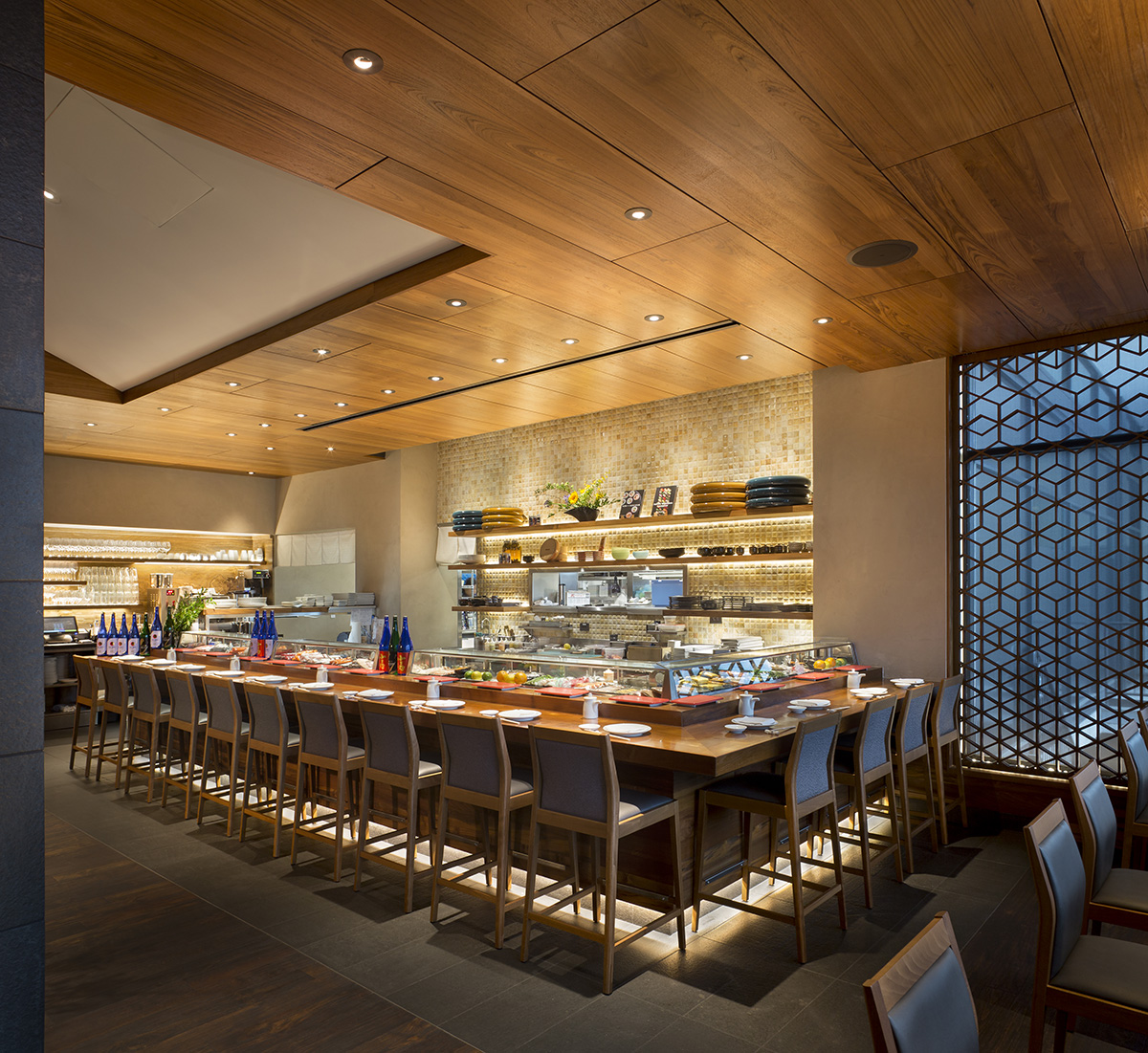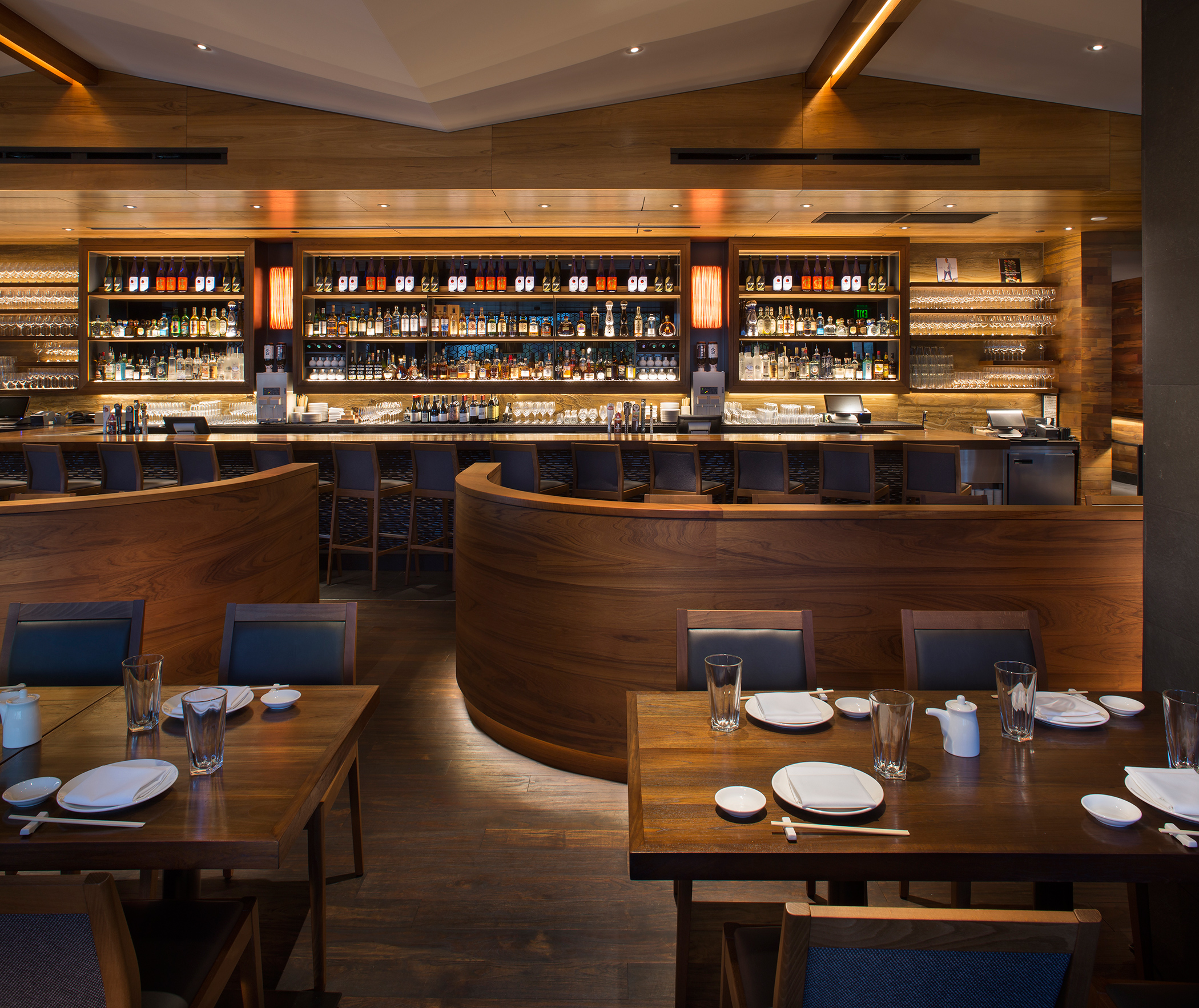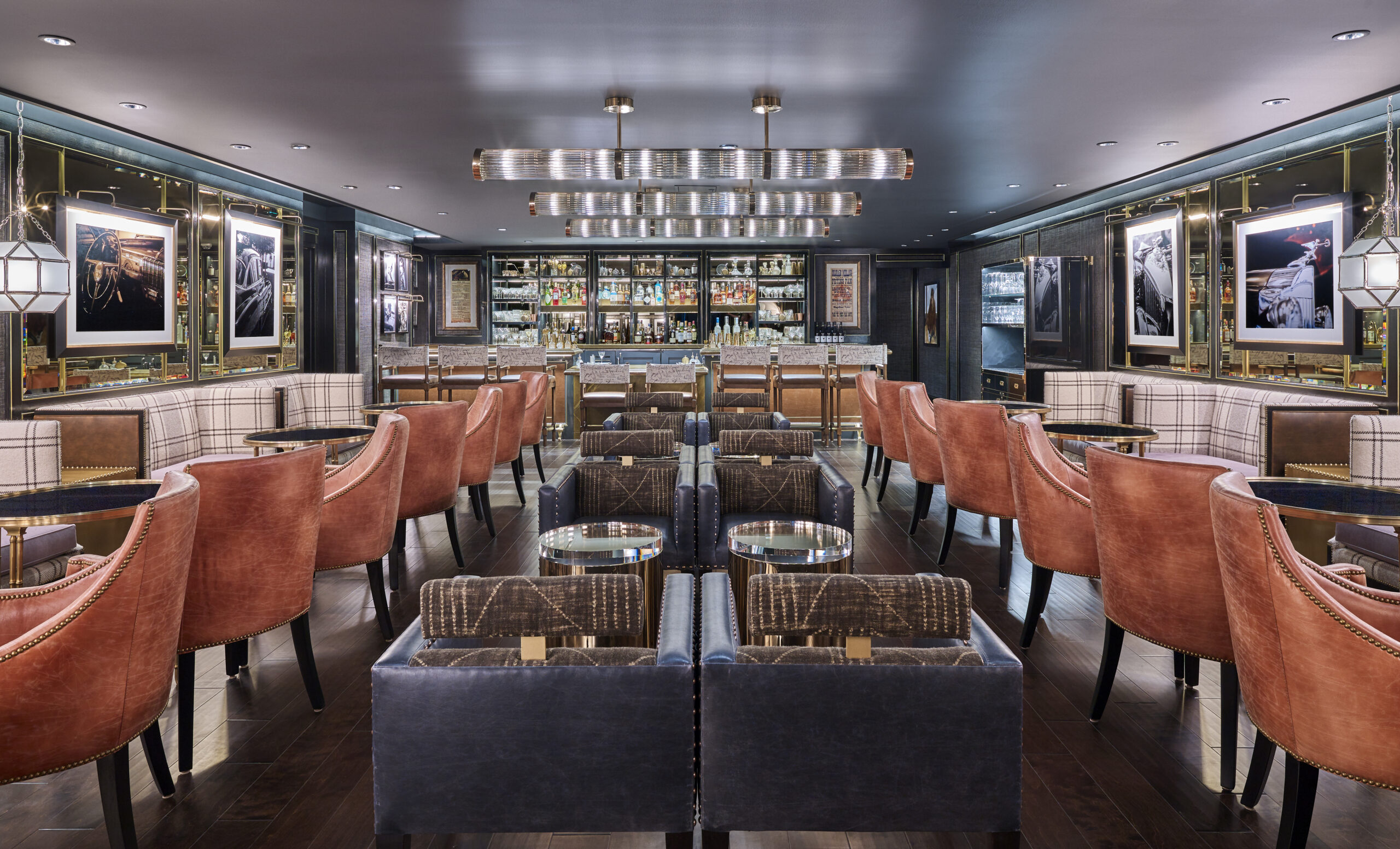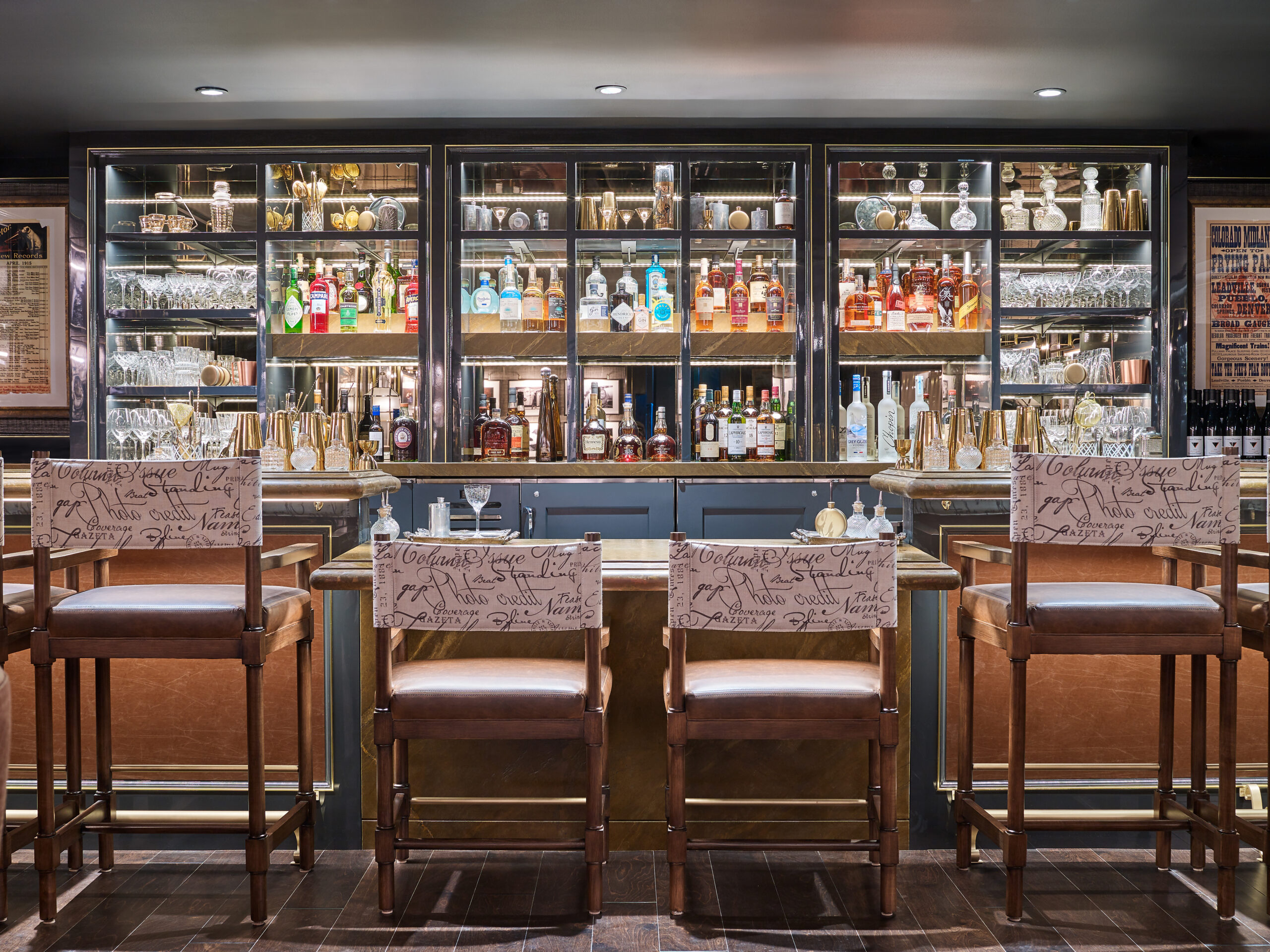status: Complete
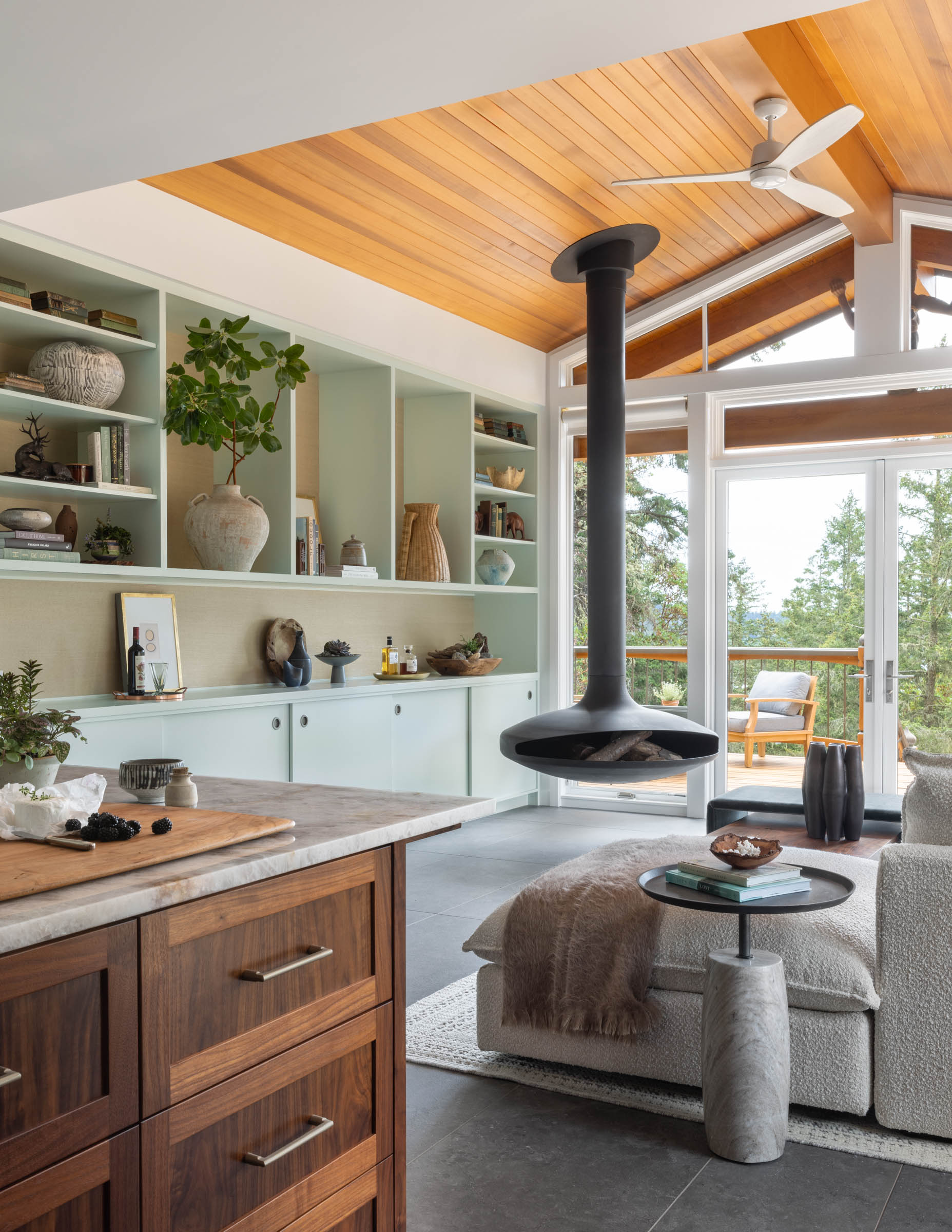


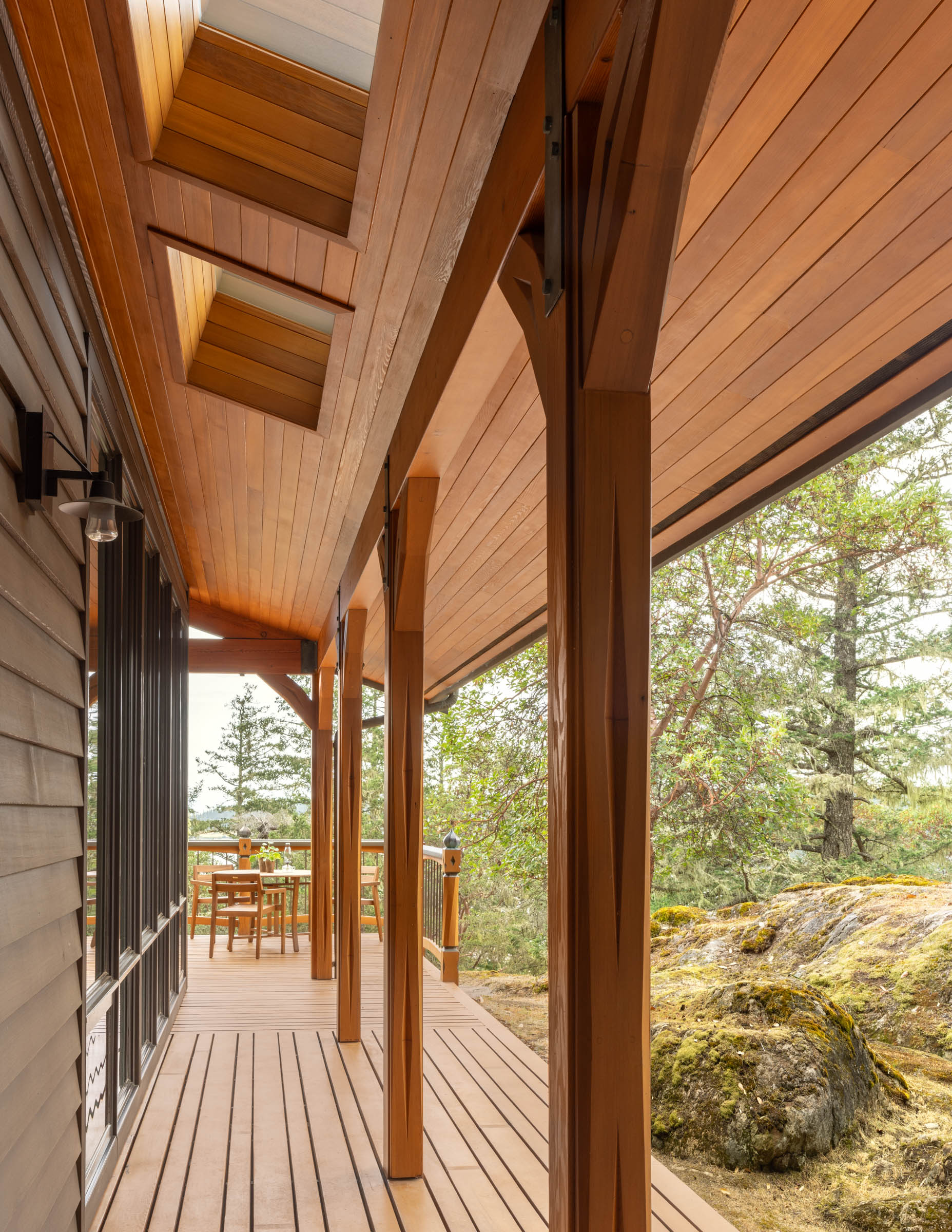
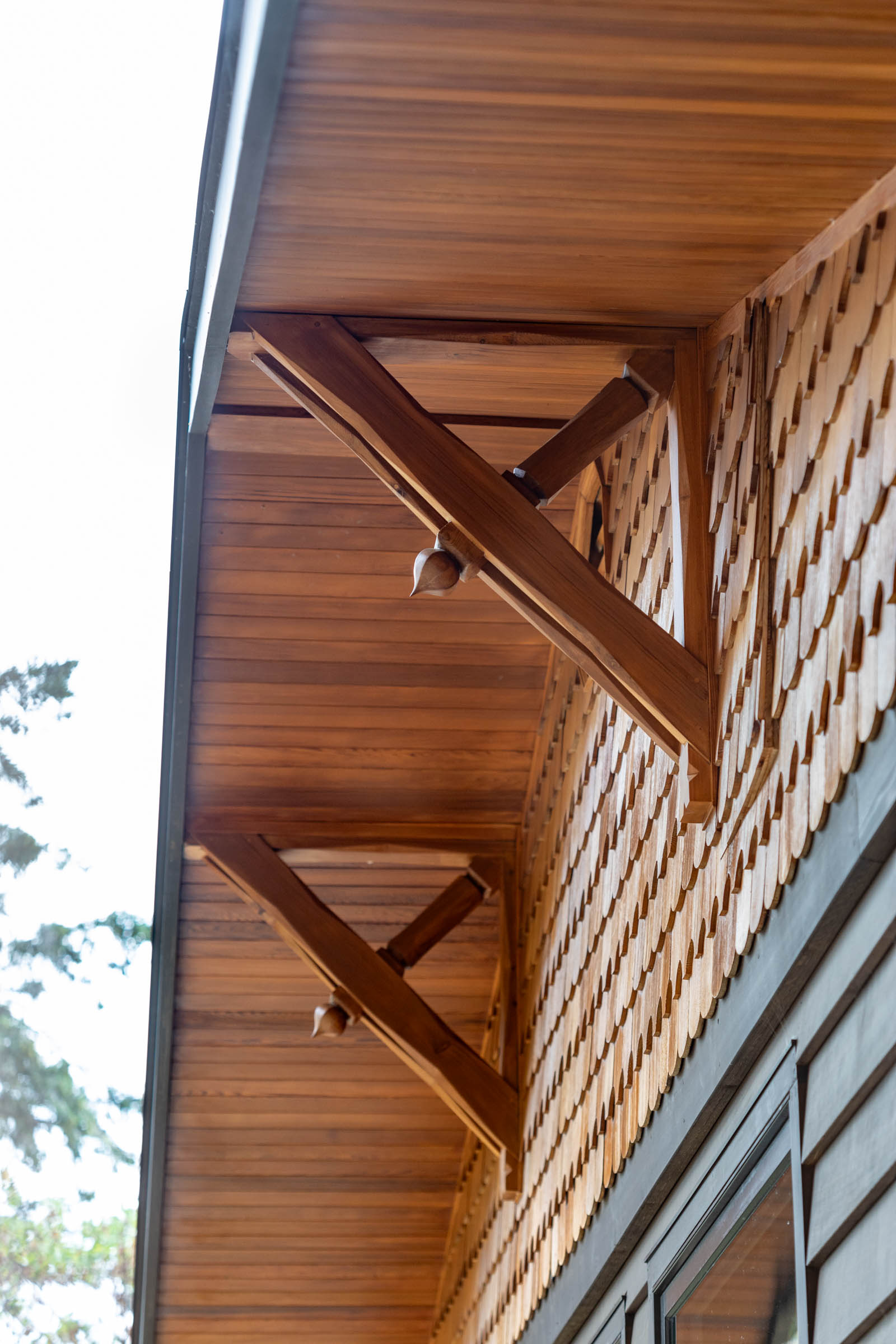
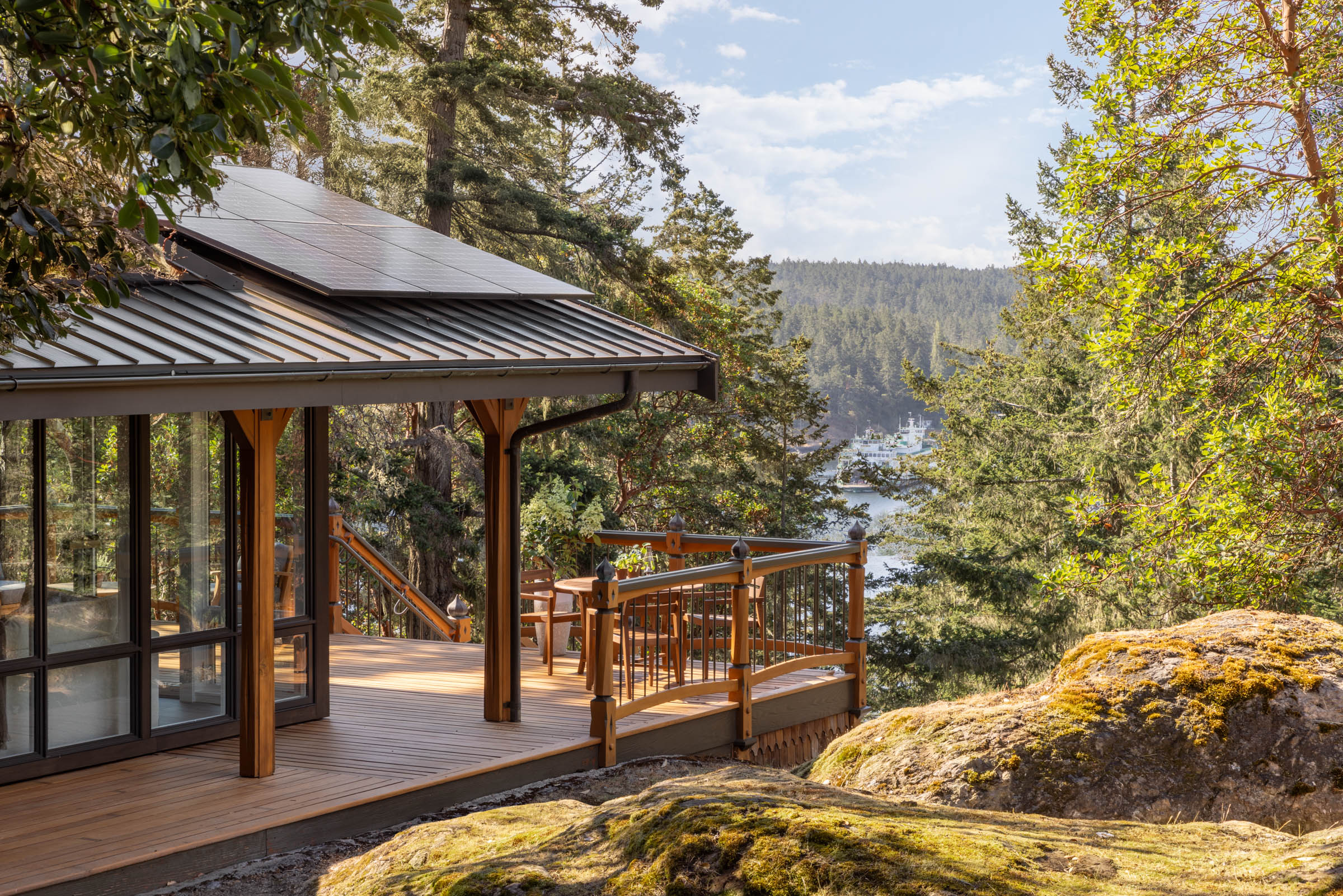
Mossywoods
On Orcas Island, the largest of the San Juan Islands of the Pacific Northwest and colloquially known as “the gem of the San Juans,” this intimate 1,200 square foot “getaway” cottage is set on a forested site within a long-time family farm.
With the challenge of restoring and contemporizing the original structure while preserving its innate charm, the design team repurposed scalloped wood shingles and other exterior wood working details handcrafted by the owner-couple’s family. Multi-color siding was replaced for a more monochromatic aesthetic to draw focus to the natural surroundings.
Inside, a complete remodel is marked by the addition of sidelights flanking the new, repositioned wood front door, a custom live-edge walnut mirror, and a built-in bench with open cubbies. Beyond the centrally located open kitchen, complete with a quartzite topped walnut cabinet system and island, the main living area features extensive storage and library space. Ample seating offers plenty of room for settling in with a book and warming by the modern suspended fireplace.
Flooring throughout is durable large format porcelain tile, selected to withstand muddy Pacific Northwest dog paws and the area’s variable weather. Existing exterior cedar was repurposed/refinished and new matching cedar was specified for the living area ceiling and exterior soffits. Additional rooms include the main bedroom suite and a flexible guest suite.
Project Completion
2024
Project Size
2,200 SF
Publications
Sunset Magazine, 2025
R+B Services
-
Architecture
-
Interior Design
-
Furniture Selection/Procurement
-
Renderings
Collaborators
-
Structural Engineer: Eclipse Engineering
-
Electrical Engineer: Friday Harbor Electric
-
Photographer: Lisa Romerein
-
Contractor: Lorne Paulson Construction
-
Contractor: Dovetail General Contractors
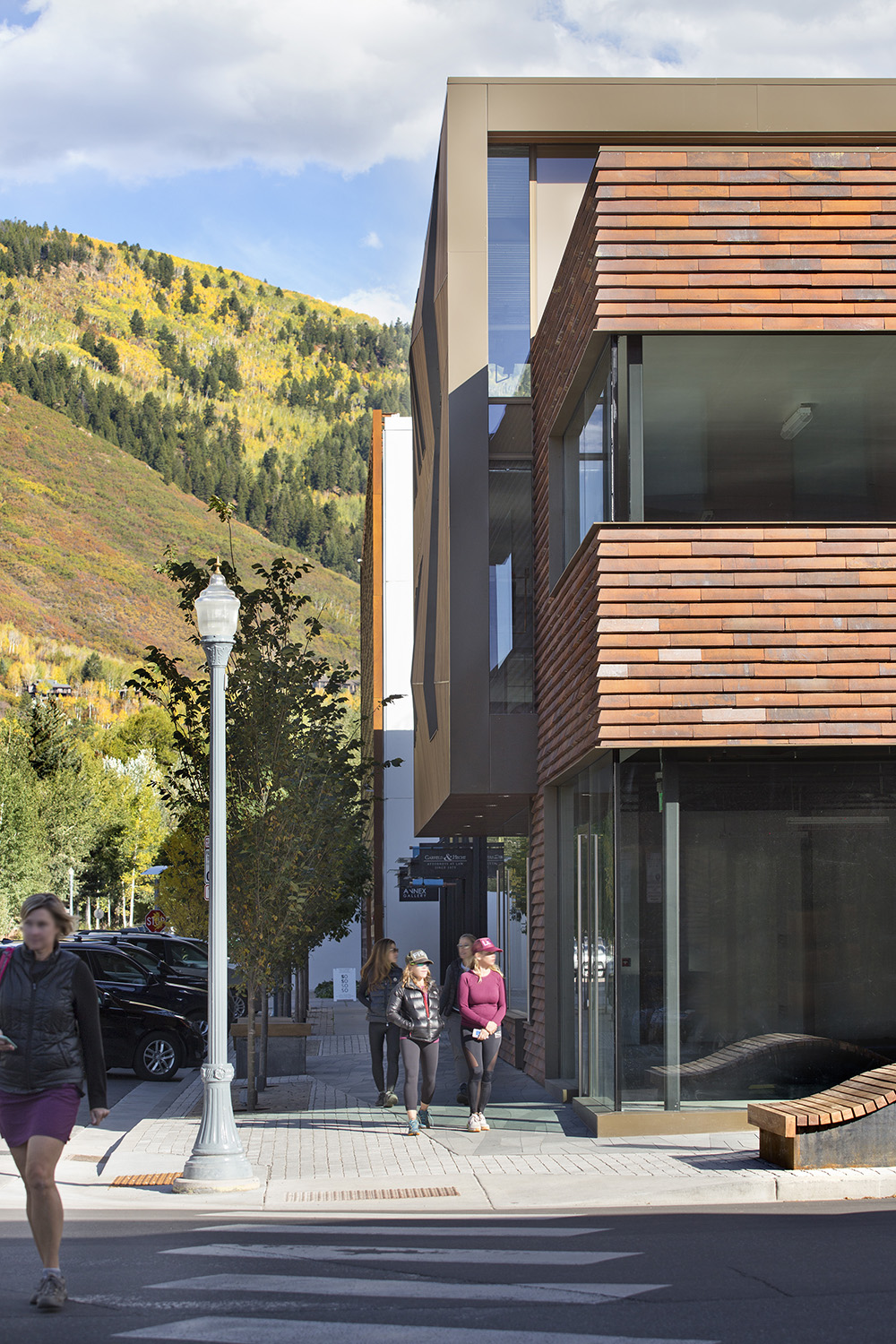


Victorian Square
The concept for Victorian Square is inspired by a nearby backcountry skiing haunt referred to by locals as “The Pillow Factory”. The highlight of this area is the countless snow-covered rock outcroppings (pillows) that gently step down the slope with skiers playfully bouncing down the terrain from one pillow to the next. We sought to abstract the inherent qualities of a typical pillow where the snow is softly suspended over the mass of the rock, revealing the stratified lines of past snow falls.
Peterson Cover Brick from Denmark represents the stationary mass of the rock outcropping. These handmade bricks are detailed using a lapped siding technique with hidden fasteners, which recalls the many wood sided buildings that once were prevalent throughout downtown Aspen during the early mining years. African Mahogany represents the snow pillow and is detailed with an undulating façade to indicate the stratified lines of past snowstorms and is cantilevered over the masonry façade. This wood pillow also has another layer of significance in that of the old false storefront façades prevalent in mining towns during the turn of the century. However, unlike those historical applications where billboard and signage indicated the use or merchandise of those buildings, the snow pillow’s silent message is that Aspen is now an international destination for skiing and sells dreams of abundant snow fall.
The design by Rowland+Broughton Architecture will speak the architectural language of Aspen for decades to come. It is rich in form and detail that builds on what went on before in Aspen architecture to extend the trajectory of the vocabulary of the town’s streetscapes into the future. – Client, Victorian Square
Project Completion
2017
Project Size
12,275 SF
Project Awards
2018 AIA Colorado – Best Commercial
Publications
R+B Services
-
Architecture
-
Public Approvals Process
-
Master Planning
Collaborators
-
Landscape Architect: Connect One Design
-
Structural Engineer: KL&A
-
Mechanical Engineer: BG Buildingworks
-
Civil Engineer: Sopris Engineering
-
Photographer: Brent Moss
-
Contractor: GF Woods Construction
Resnick Center
Located adjacent to Herbert Bayer’s historic Boettcher Seminar Building in Aspen, Colorado, the Bayer Center is designed to house the collection of his works for public view, the only of its kind. The museum is the newest addition to Aspen Institute’s campus, with grounds featuring Bayer’s sculptures and landscape along its pathways. The Center is smaller and lower than the Boettcher Building, paying homage to Bayer’s 1975 work.
The compact design accommodates ample gallery, archival, and support space for works of art that span Herbert Bayer’s illustrious career. Rigorous geometries and alignments were critical to the team and vision of a Bauhaus-inspired aesthetic. These parameters wrap the building and govern the dialog between elements which are repeated, mirrored, and proportioned by a greater set of rules.
To uphold the aesthetic goals, the Bayer Center must be an efficient and well-organized system of logic. This ripples through the infrastructure supporting the building. Structure and utilities must work in concert with the spaces without breaking the design purity or interrupting the open flow of the plan. The steel fascia set to the top of the glazing determines the ceiling space, containing the building mechanical, lighting, and thermal envelope suited to Aspen’s climate extremes. The upper roof is similarly thin, tapering to an 8” tall cantilevered eave where structure and insulation are stretched to the extent of their performance. As the geometries meet, construction sequencing must account for streamline form and tight tolerances.
The museum will be a cultural merger between the Aspen Institute and Aspen’s community. Anchoring the campus corner where it touches the city fabric, it welcomes the public to view Bayer’s works and to explore the paths connecting his sculptures to the landscape. The comprehensive body of this Bauhaus master’s works will be culminated in this museum and throughout the grounds, a true tribute to his contribution to one of the most famous art movements in history.
Advanced building technology elevates the Bayer Center beyond current day performance requirements. To balance interior and exterior conditions, the design team and envelope consultant developed a strategy through meticulous product research and detail strategies to support the design, its durability, and its sustainability. Using vacuum-sealed insulation and an aerogel coating on the steel, the building will reduce HVAC demands for a more passively stable environment. Envelope continuity wraps the exterior cladding and insulation within openings. This seamless design requires careful detailing to tie to structure and maintain thermal quality without breaking plane. The museum’s glazing and glass floors draw natural light into the galleries. The team refined the assembly produced by the same steel glazing manufacturer of the Bauhaus building in Dessau to provide a combination of excellent color rendering, solar protection, thermal retention, and slim detailing.
Project Completion
2022
Project Size
7,387 SF
Publications
Aspen Times Weekly
R+B Services
Architecture
Collaborators
-
Design Architect: Jeffrey Berkus Architects
-
Photographer: Brent Moss
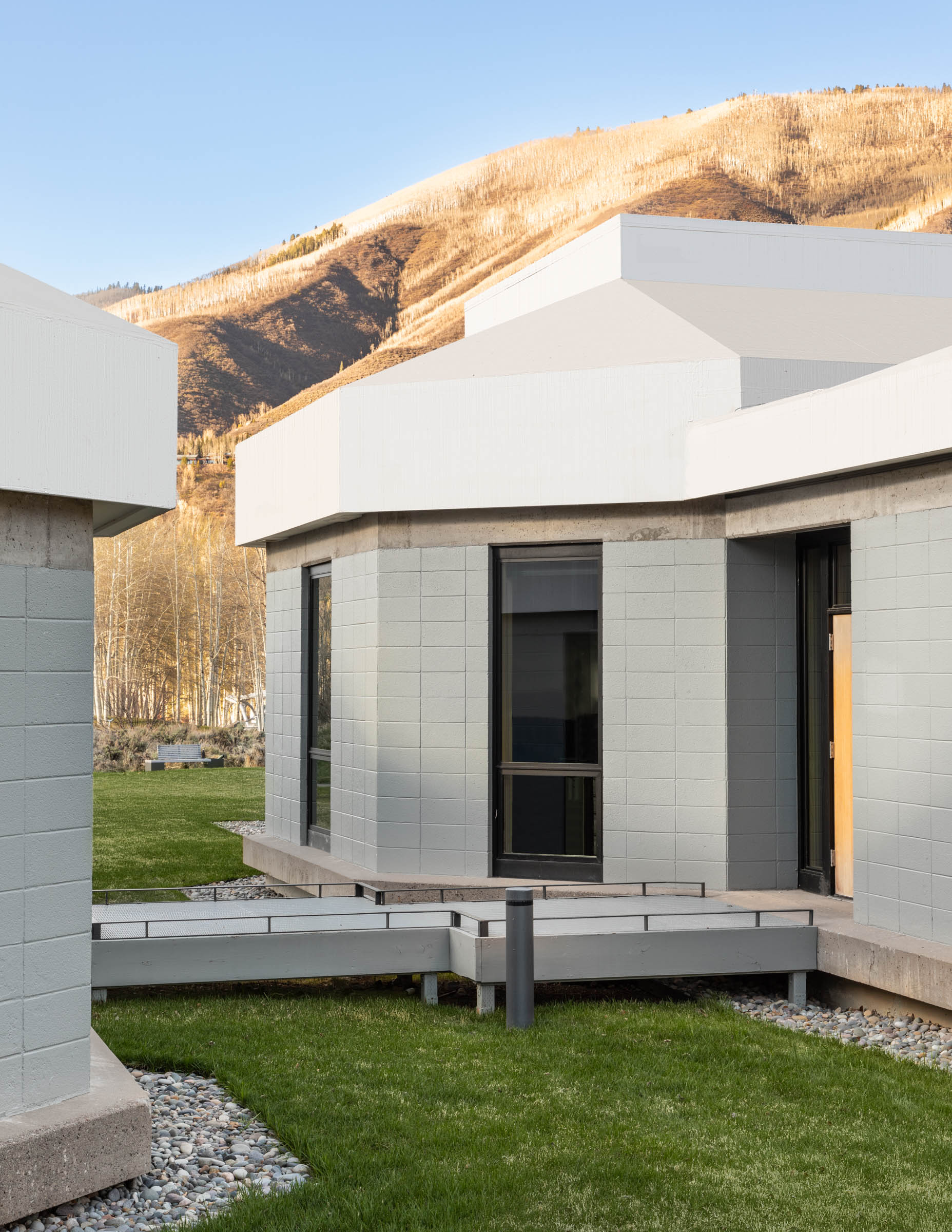
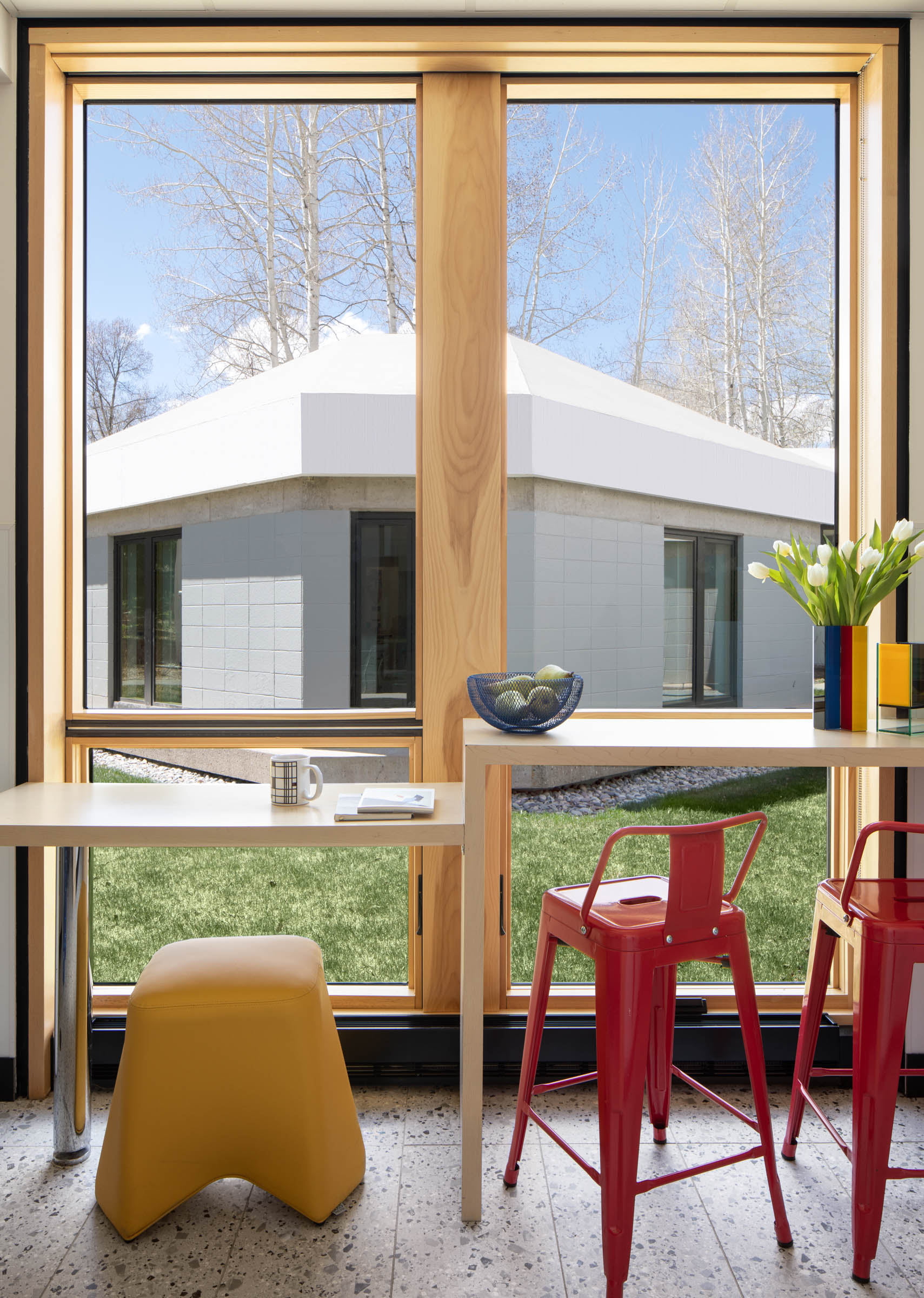
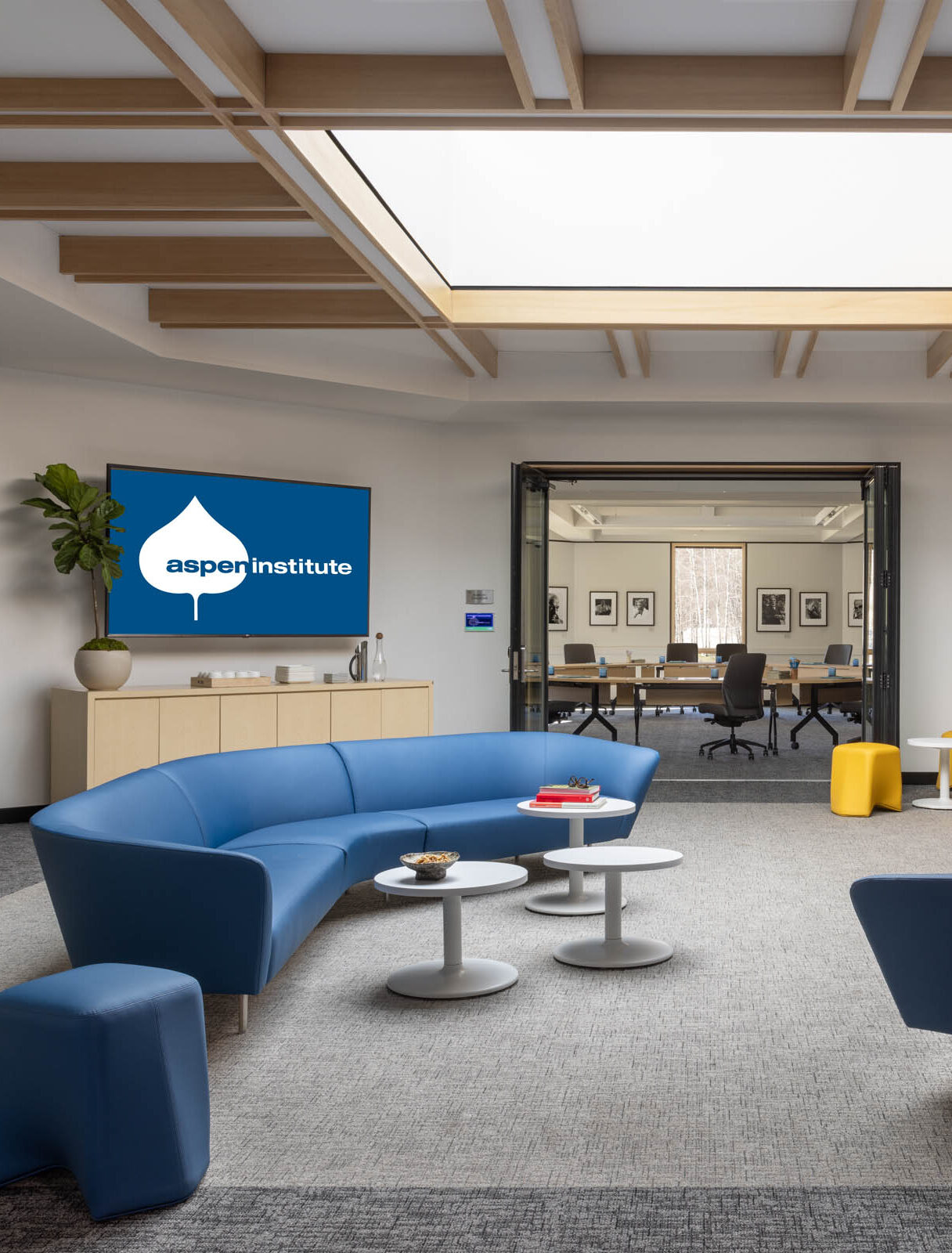
Boettcher Center
1973 saw the construction of the final building in Aspen, Colorado by Bauhaus architect and designer Herbert Bayer. This building, known as the Boettcher Seminar Building, drew on an architectural language Bayer had been developing on the Aspen Institute grounds for over two decades, and was a culmination of sorts of the logic and democratic organization of spaces and experiences central to Bauhaus thought. Sadly, four decades of use took its toll on the interior and exterior and the building no longer lived up to its potential as a space to foster and facilitate ideas and relationships that could change the world.
The rehabilitation of the Boettcher Building design goals began with seeking Landmark Designation to the Aspen Modern Inventory of historic structures. With this designation in mind, the team developed the primary design goal: to honor and respect the legacy of Herbert Bayer with a thoughtful restoration of the exterior and creative renovation of the interior to guide the building through the next four decades, with an emphasis on flexibility and innovation. Crucial to the entire work, the existing open-air central courtyard would need to be enclosed to provide greater year-round functionality and comfort.
Beyond the many technical challenges of preserving and rehabilitating the structure for modern use, the Team faced the challenge of honoring the original design. To do this, new elements needed to share the existing building’s underlying principles and concepts but be distinct from them and of their own time. By carefully studying the existing building, the design team identified these features and tailored the new architecture to emphasize, contribute to, and enhance the existing building.
As a case study of this process, to enclose the central courtyard the team first studied the basic layout of the building. Organized on an 3×3 grid, the key spaces are arranged on two axes, oriented north-south and east-west, with the central courtyard at the intersection. The new roof structure, ceiling design, and pyramidal skylight align and emphasis these axes, creating a volumetric space in the center of the building where the visitor is naturally directed for a creative exchange of ideas. Large doors between the rooms along the north-south axis slide aside to unite the spaces into one, with a new “Creative Lab” anchoring the southern end of the axis, and break-out spaces arranged to the east and west, creating a dynamic flow of people and ideas.
Rounding out the renovation, the building received an extensive upgrade to all building systems. Thermal efficiency is increased by 300% through the addition of high-performance continuous insulation and new windows and doors. Mechanical system efficiency is approximately 70% better than the existing HVAC system. All interior light and plumbing fixtures are high efficiency and finishes are low-VOC and recyclable.
It is an honor to participate in the renovation of this important building and to increase its potential for collaboration, creativity and generation of ideas, all concepts that are fundamental to R+B as well. Moving forward, we anticipate a great working relationship with the Aspen Institute team to bring our mutual vision for the Boettcher Building to life. – Principal Sarah Broughton, AIA, NCIDQ
Project Completion
2021
Project Size
7,609 SF
R+B Services
-
Architecture
-
Interior Design
-
FF+E Selections
-
Renderings
Collaborators
-
Landscape Architect: AHBE Landscape Architects / MIG
-
Lighting Designer: Element Architectural Lighting Design
-
Structural Engineer: KL&A
-
Mechanical Engineer: BG Buildingworks
-
Civil Engineer: SGM
-
IT/AV/LV/Security: BG Buildingworks
-
Photographer: Lisa Romerein
-
Contractor: TIS Construction Services
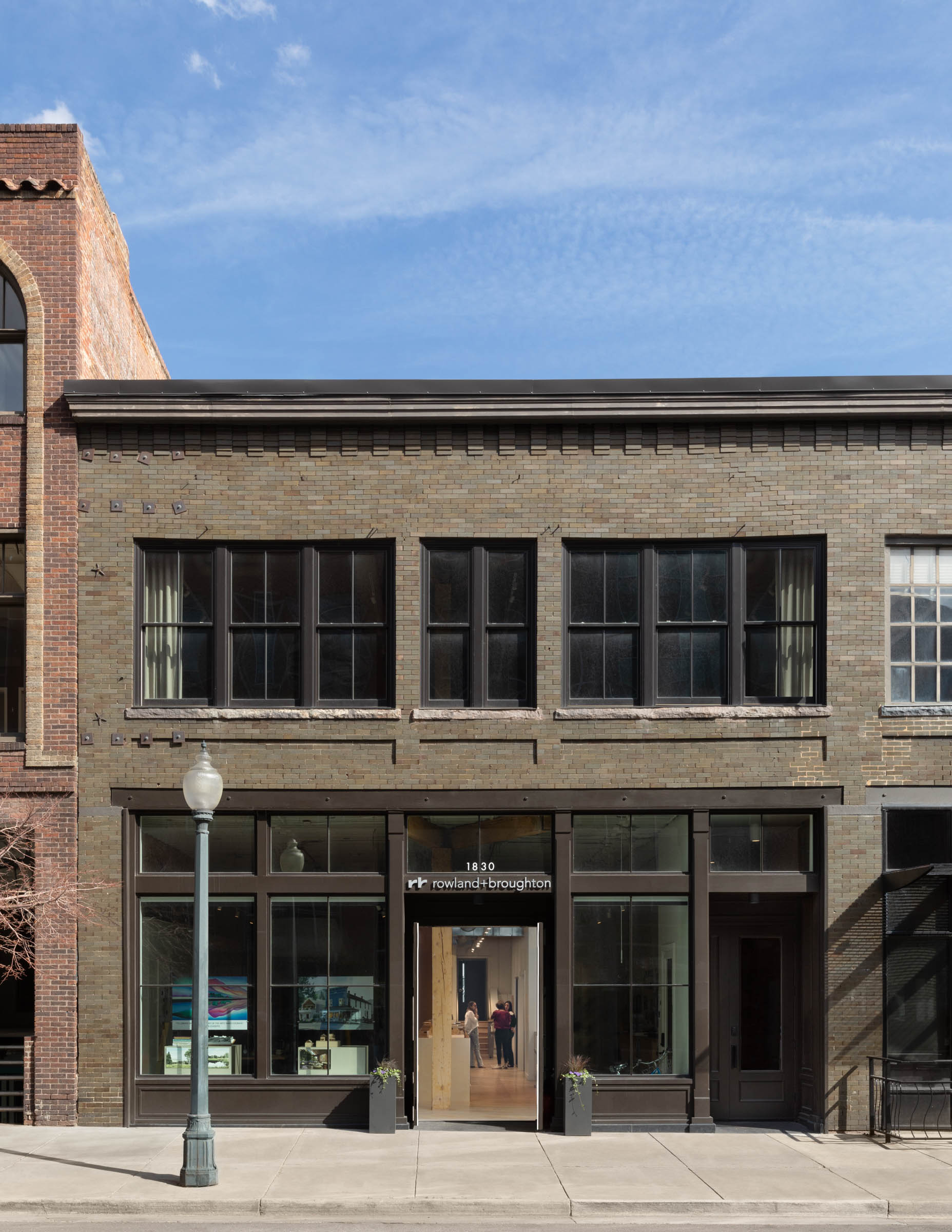
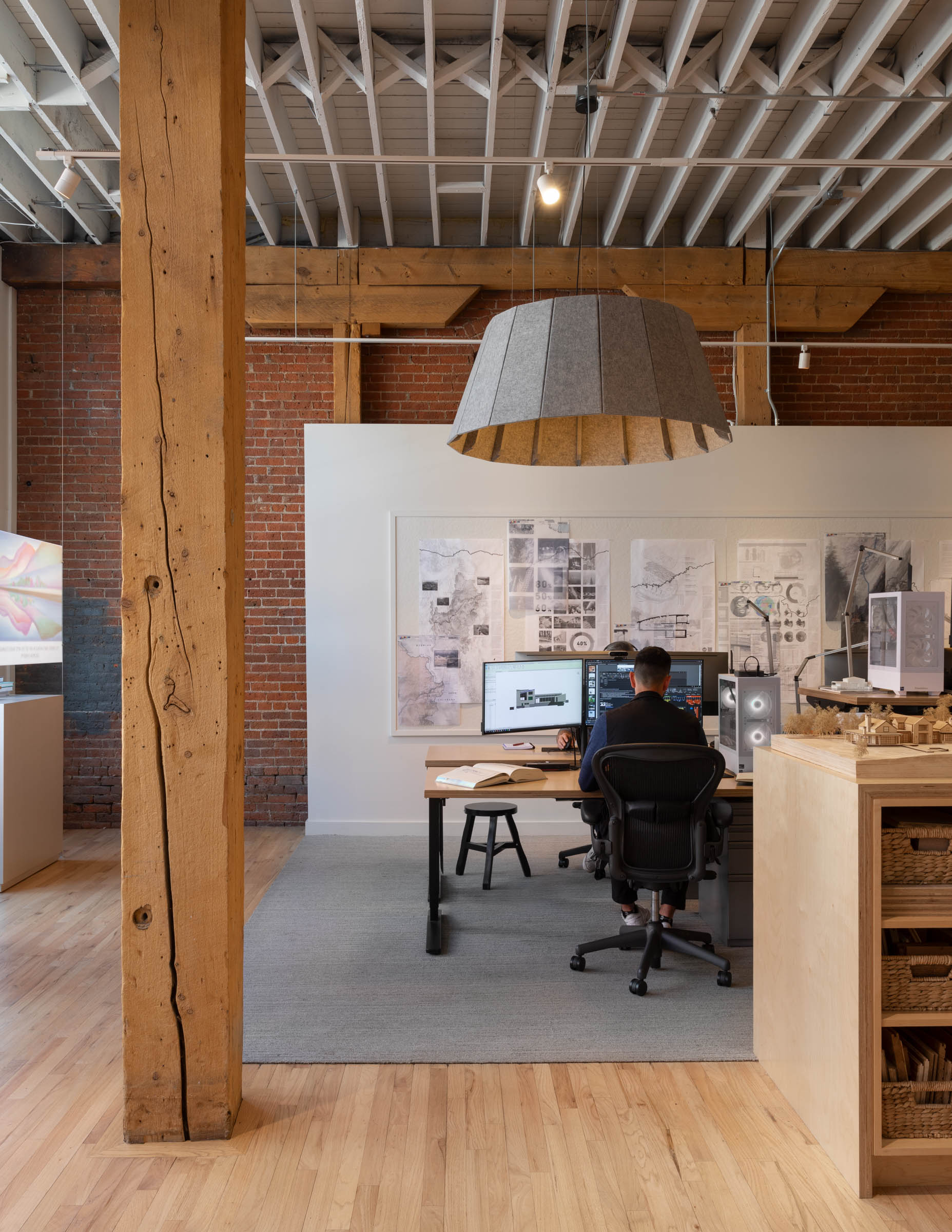
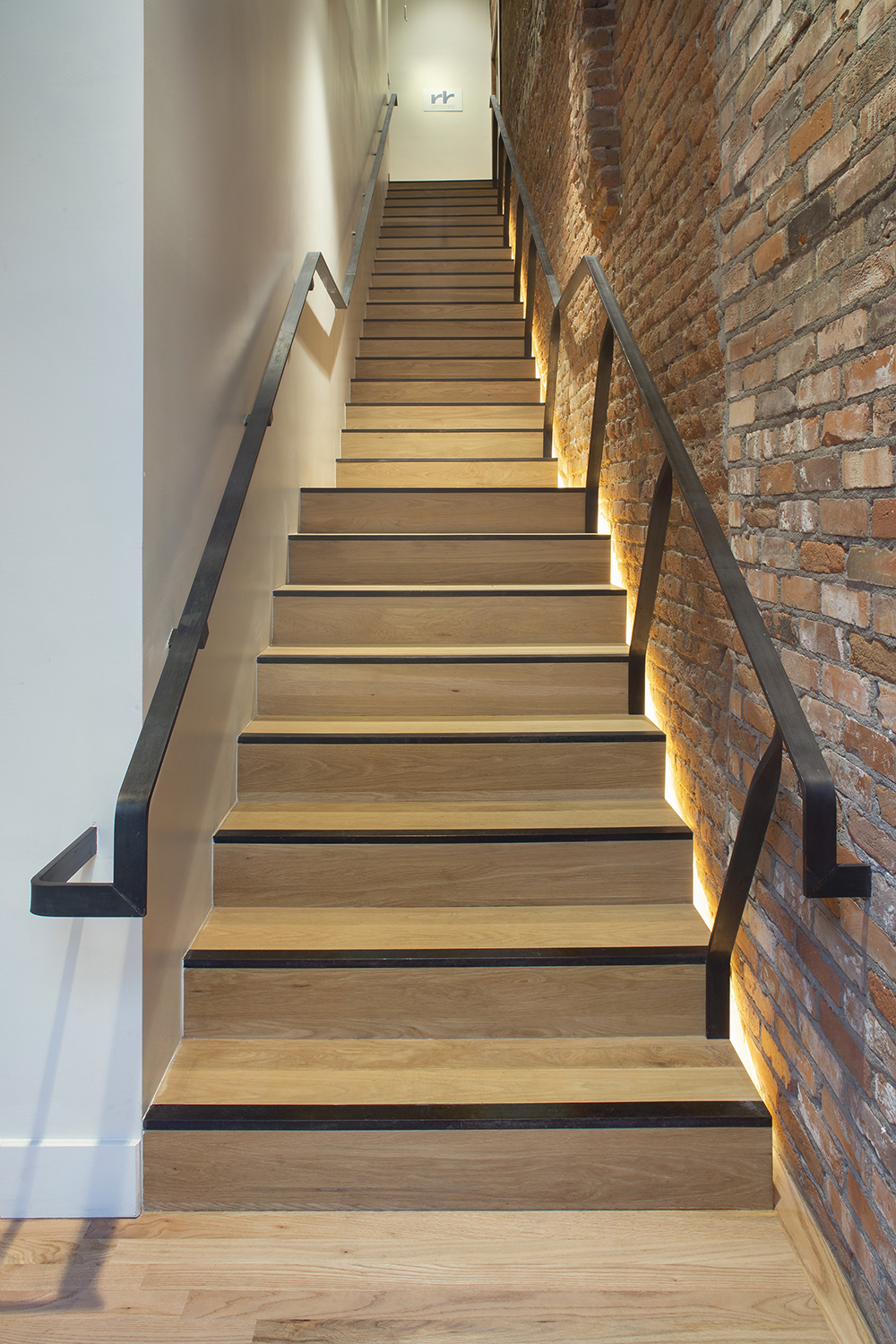
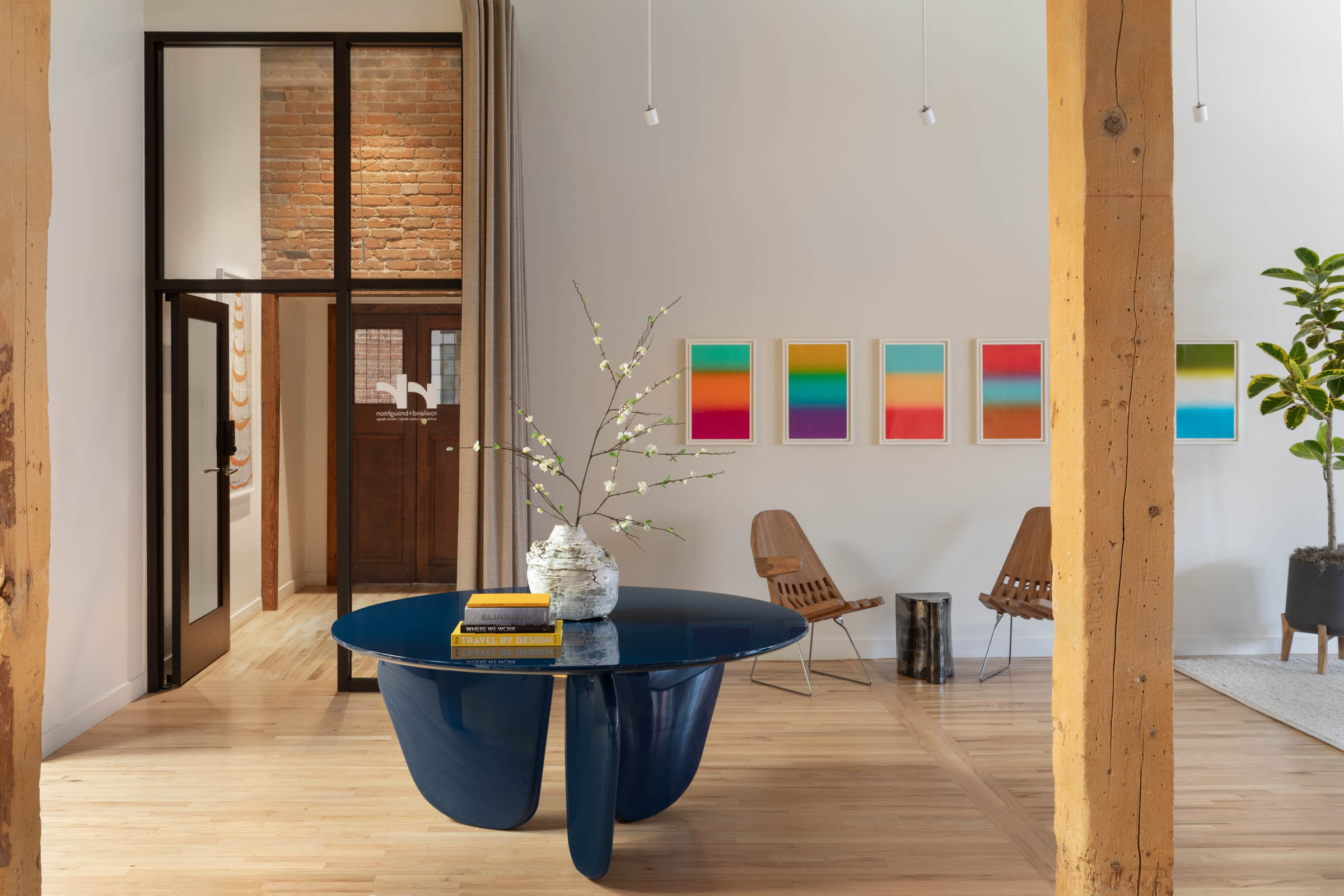
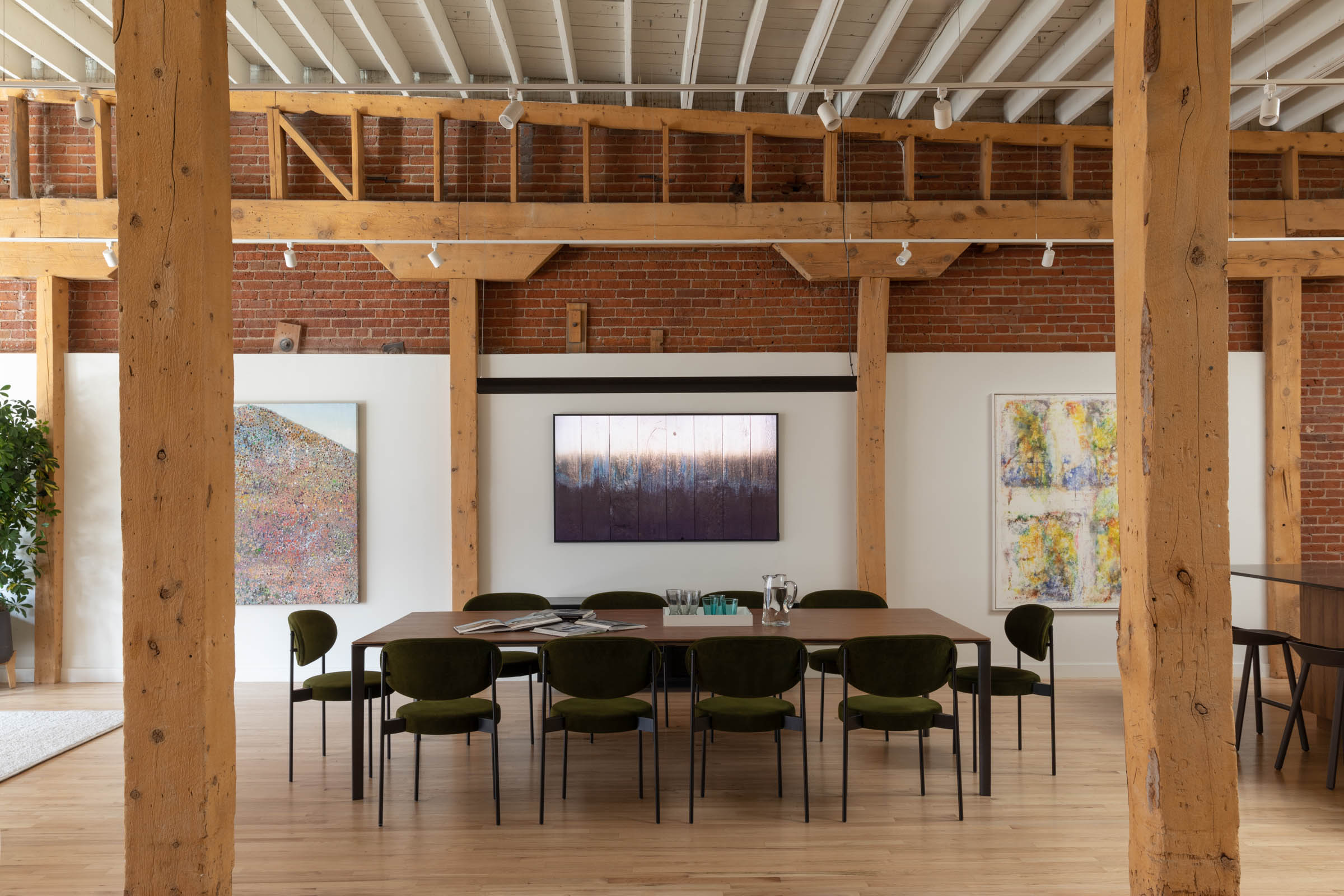
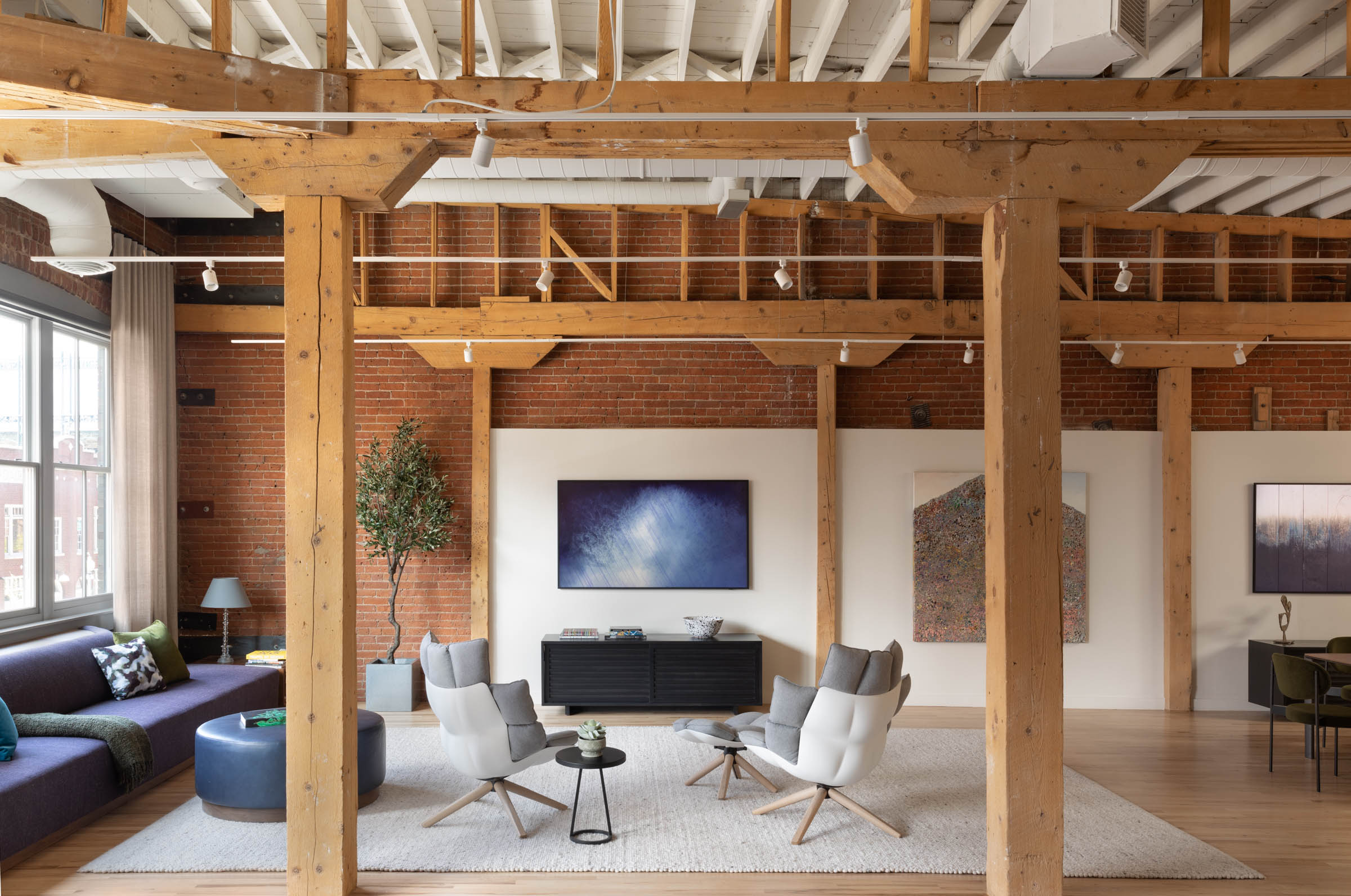
1830 Blake Studio + Salon
Set within the vibrant Lower Downtown Historic District (LoDo), R+B’s meticulously restored Denver location is a comprehensive, full-service studio.
In fall of 2018, a re-imagining of the storefront involved extreme sensitivity to the original character of the structure, which was built in 1892 and has a storied history as the home of the E.B. Millar Coffee Company. Following the guidelines of the Lower Downtown Historic District, the project included introducing a more contemporary aesthetic and neutral material palette. A new wood and glass storefront replaced non-historic windows and doors, and the entry was relocated to its original location at the center of the storefront. The work improved the building’s accessibility, increased visibility into the interior and lent an improved sense of symmetry to the overall structure.
Spring of 2019 saw a reconfiguration and energy-efficiency upgrade to the interior. Previous non-historic partition walls and restrooms were removed and upgraded with energy-efficient features, such as occupancy- and daylight-sensors and LED lighting, and accessible restrooms and spaces. Consistent with the functional warehouse operation of the building’s original tenant, an open plan was employed and original columns and structure were left exposed.
Continuing the evolution of our Denver studio, our team re-imagined an existing upper level as a multi-purpose salon style space. In addition to building on our functionality as a team and encouraging communal interaction and experimentation, the new space is an expression of the residential quality of our work.
The vision of the thoughtful reincarnation of the wide open, 2,798 square foot salon included creating multiple gathering areas for collaboration, conversation, and meetings among team members, clients, and colleagues. A back-drop of clean white walls allows for the additional usage of the space as an in-house gallery, where the works of emerging national, international, and Colorado-based artists are highlighted.
Within the historic exposed brick shell, which also features the original post and beam construction and re-finished oak flooring, dual seating groups are unified by a 30-foot-long custom designed sofa created by Denver-based Rooster Socks set against a window wall overlooking the bustling streetscape below. Additional furnishings include pieces sourced and imported from designers discovered during visits to Los Angeles and travels to Milan and Mexico City.
Together with the lower storefront level, which features open studio space, private offices, and the Creative Lab, 1830 Blake offers an inspiring contemporary workplace with biophilic and ergonomic features for our team while reflecting, engaging, and supporting the surrounding community.
The 1830 Blake Street restoration continues to strengthen R+B’s presence in Denver as our studio continues to evolve. In addition to accommodating the needs of our team and clients, our newly renovated space will allow us to more easily engage with the surrounding Lower Downtown neighborhood and the Denver community at large. We are proud to have consistently maintained 40+ team members for the last couple of years and are excited to be a part of the exciting possibilities the future holds. – John Rowland, AIA, Principal
Project Completion
2022
Project Size
6,000 SF
Publications
Mile High CRE, November 2022
R+B Services
-
Architecture
-
Interior Design
-
Space Planning
-
FF+E Selections
-
Renderings
Collaborators
-
Structural Engineer: KL&A
-
Mechanical Engineer: IMEG
-
Electrical Engineer: RG Engineering Consultants
-
IT/AV/LV/Security: Harrison Home Systems
-
Photographer: Lisa Romerein
-
Photographer: Brent Moss
-
Photographer: Maggie McEntee
-
Contractor: Bristlecone Construction
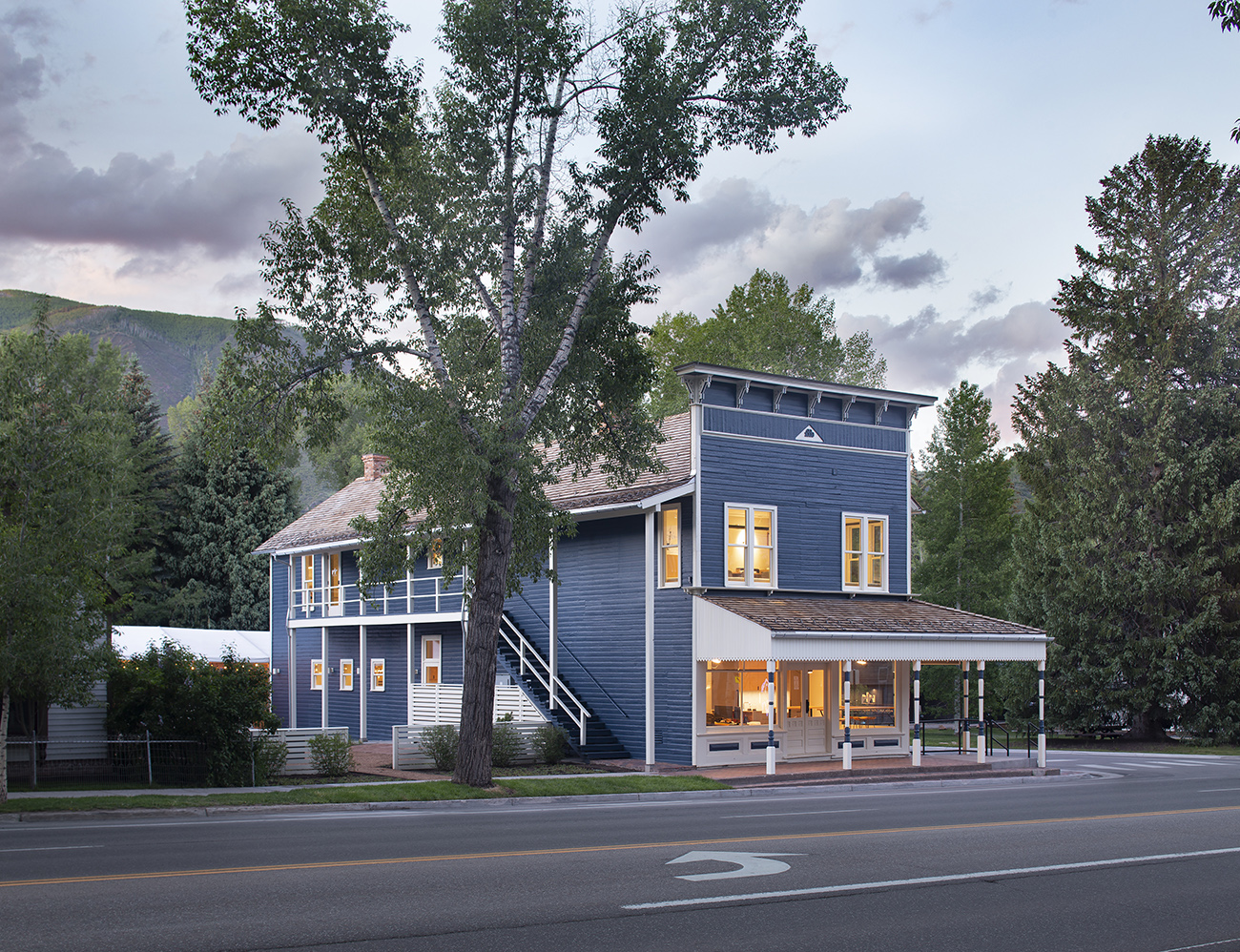
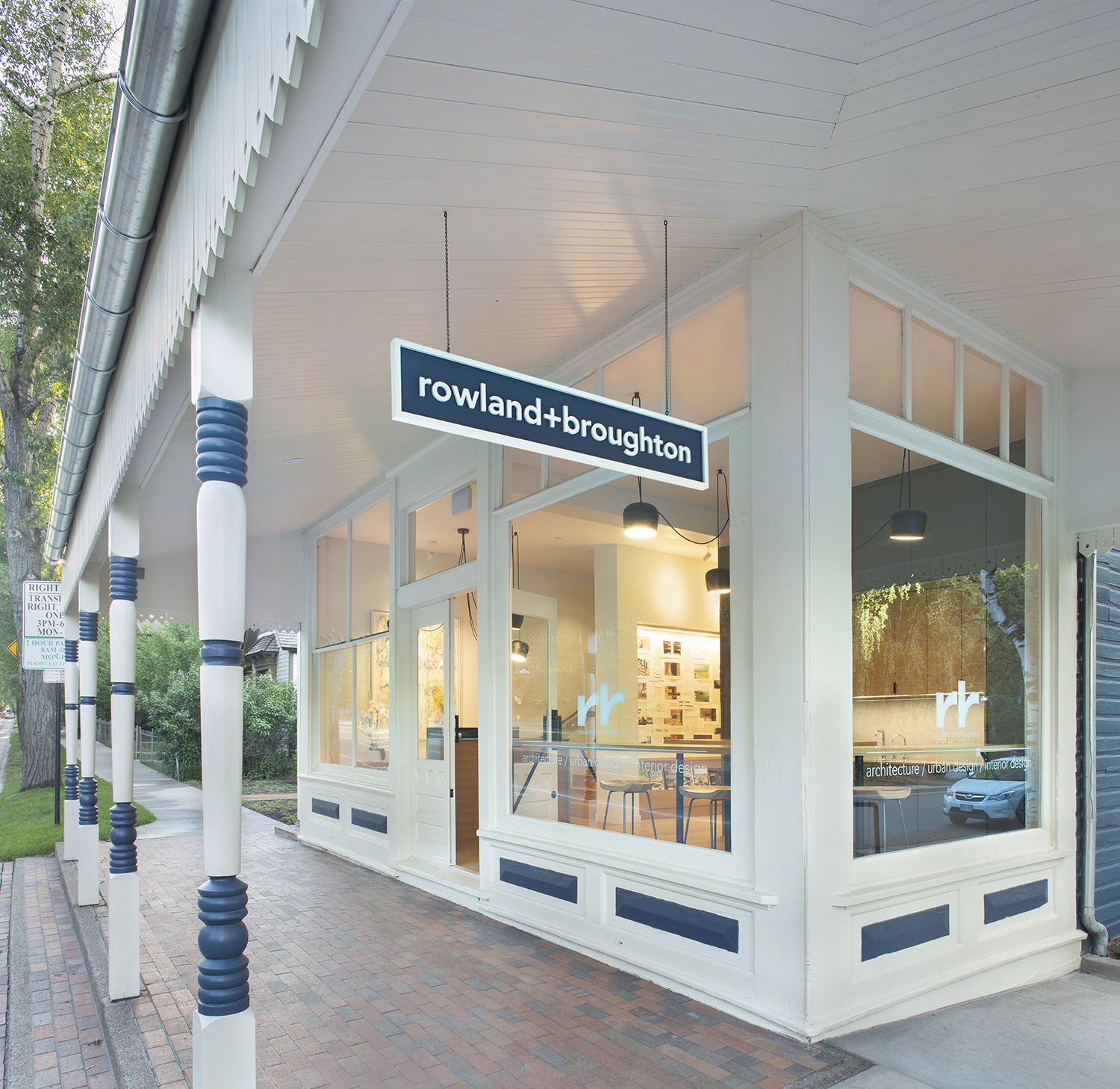
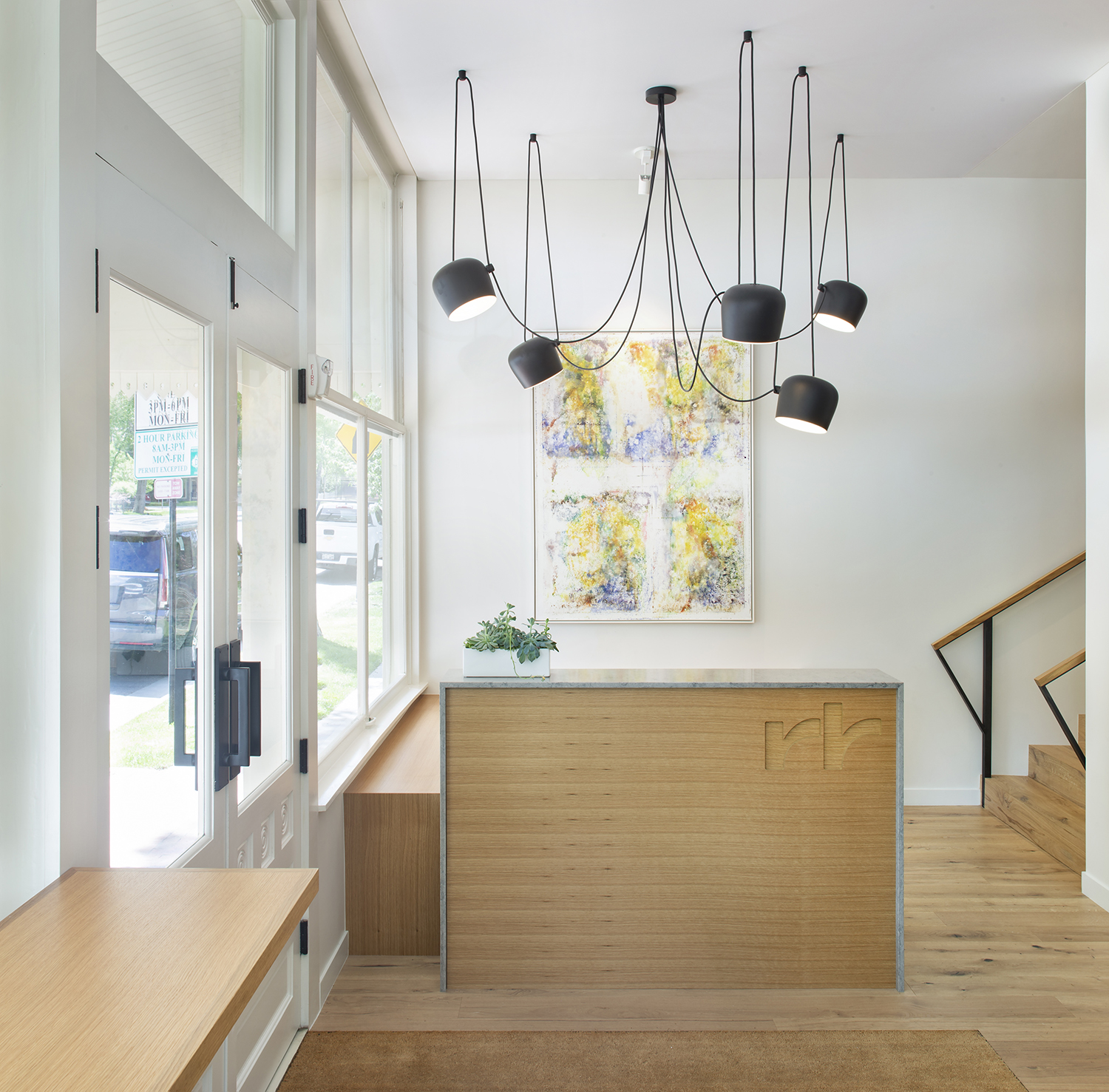
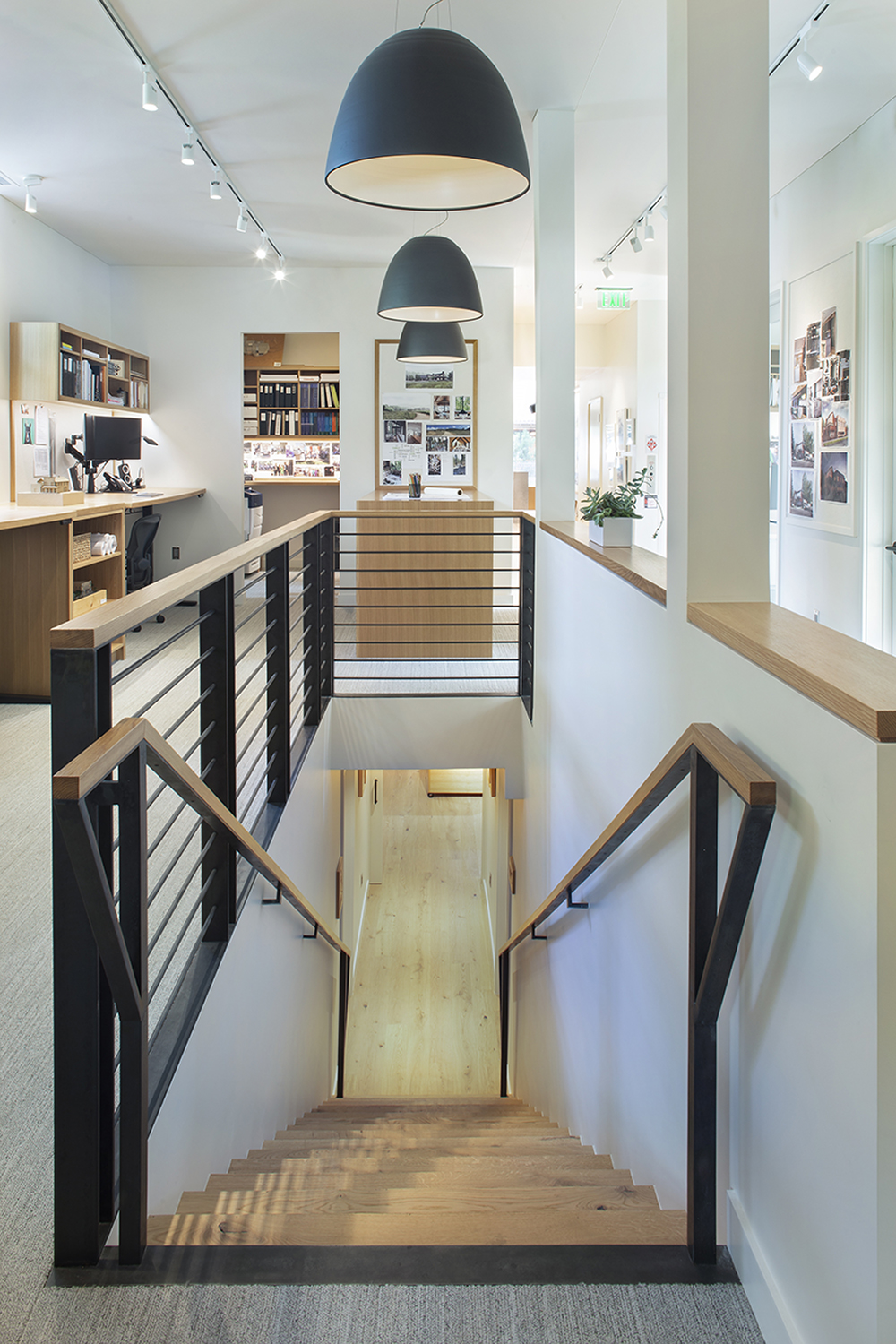
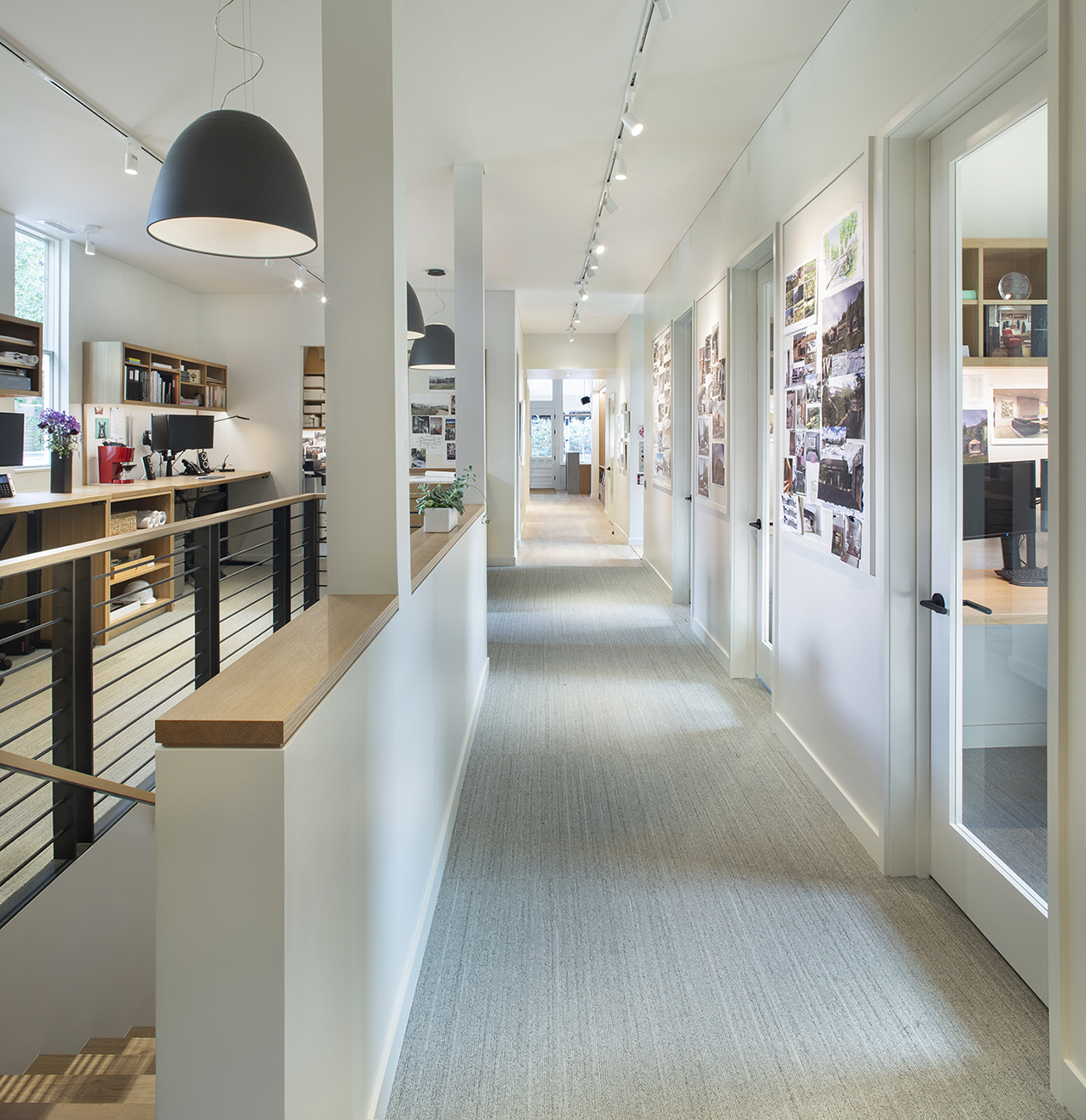
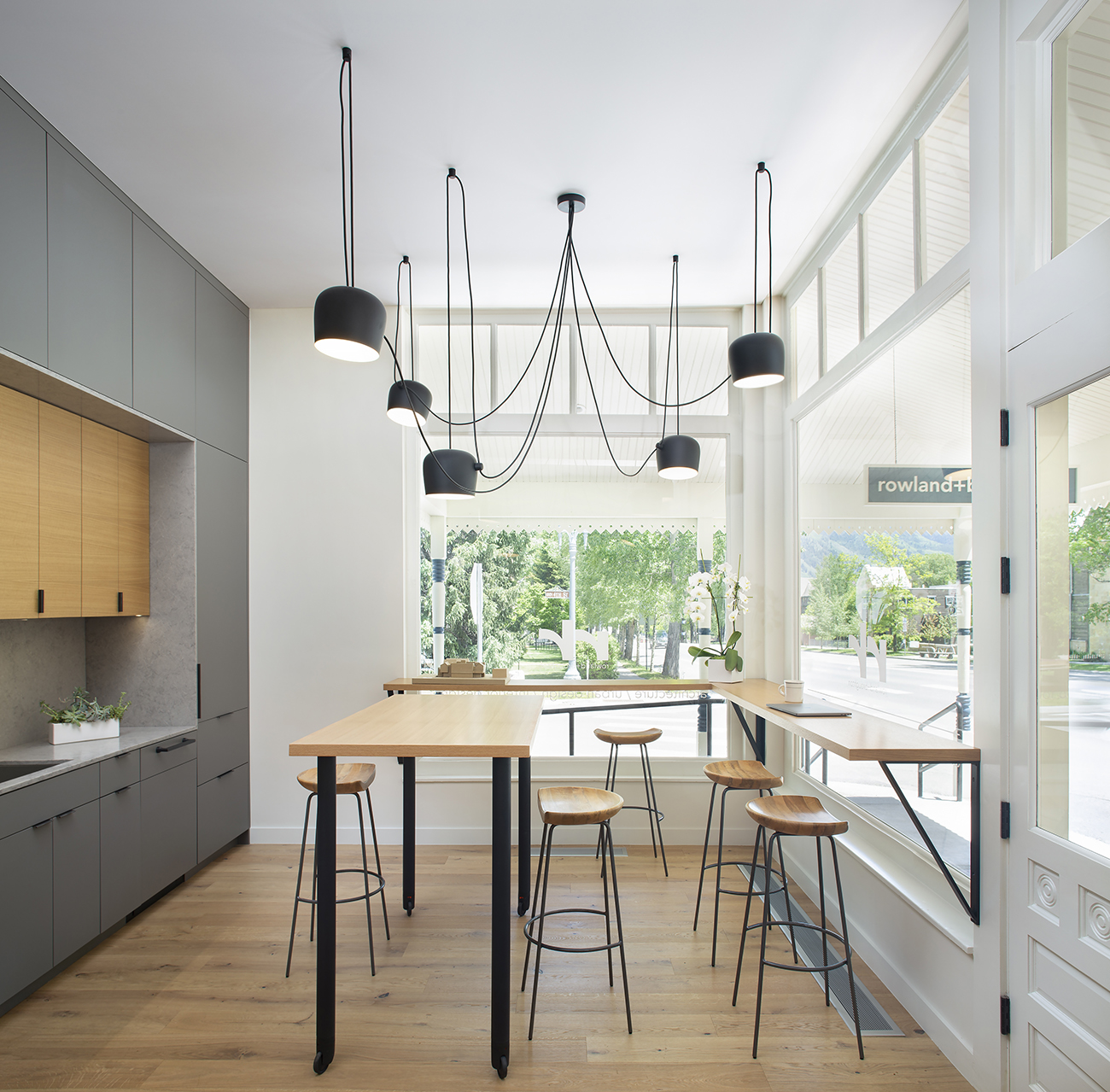
Mesa Building
The historic Mesa Store, located on Main Street at the entrance to Aspen, is the new home of R+B’s Aspen studio and our national headquarters. Designated and registered with the City of Aspen Historic Preservation Commission, the 1888 Mesa Store has long enjoyed a distinct vantage point at the top of Aspen’s Main Street, the mesa. The street dips down into the commercial core, leaving the building prominent on the site.
Restoration efforts included removing all non-historic proportioned windows and replacing them with replicas as researched in historic photos. The non-historic, covered entry roof fascia was removed and the historic detailing that had been covered up was restored and preserved. The non-historic exterior covered stair and deck was restored per the historic photos. All new plumbing, electrical, data, security, and fire protection prepared the property for the next century, further preserving Aspen’s authenticity and historical heritage. Accessibility was enhanced by adding an elevator that connects all three levels, as well as accessible park and entry. New landscaping and gardens complement the historic patterns of Main Street, while providing a modern aesthetic and accommodating a storm water infrastructure.
The sustainably designed tri-level interior is modern and bright, featuring white painted walls, white oak millwork and character grade oak flooring accented with black hardware and guardrails. In addition, all ceilings are white acoustic fabric by WhisperSpan.
The entry is surrounded by an enormous historic glass storefront that once saw uses as a bakery, general store and retail. This inspired the design team to respectfully place a welcome desk and kitchen that encourages the spirit of the hospitality of the past.
The driving concept was to create highly collaborative work and circulation spaces that are surrounded by individual work zones at the perimeter. Uplift desktops and built-ins were custom designed to maximize comfort and efficiency.
The Mesa Store has been our favorite Main Street building since the day Sarah Broughton and I first came into town, and shepherding it into the future is something we don’t take lightly. Building on the legacy of our firm while acting as the faithful stewards of this important property is humbling. As we embrace the opportunity to control our own destiny, it’s an honor and a privilege to call the Mesa Store our studio and R+B home! – Principal, John Rowland, AIA
Project Completion
2019
Project Size
4,578 SF
Publications
-
Aspen Times Weekly, July 2019
-
InspireDesign, March 2019
-
Colorado Construction & Design, Winter 2019
-
Aspen Peak, Winter 2018
-
5280.com, August 2017
R+B Services
-
Architecture
-
Interior Design
-
Public Process
-
Master Planning
-
Due Diligence
-
Renderings
Collaborators
-
Landscape Consultant: Busy Beavers Gardening
-
Landscape Architect: Stan Clauson Associates, Inc.
-
Structural Engineer: KL&A
-
Mechanical Engineer: BG Buildingworks
-
Civil Engineer: High Country Engineering
-
Audio/Visual: Paragon
-
Photographer: Lisa Romerein
-
Photographer: Brent Moss
-
Contractor: Schlumberger Scherer Construction
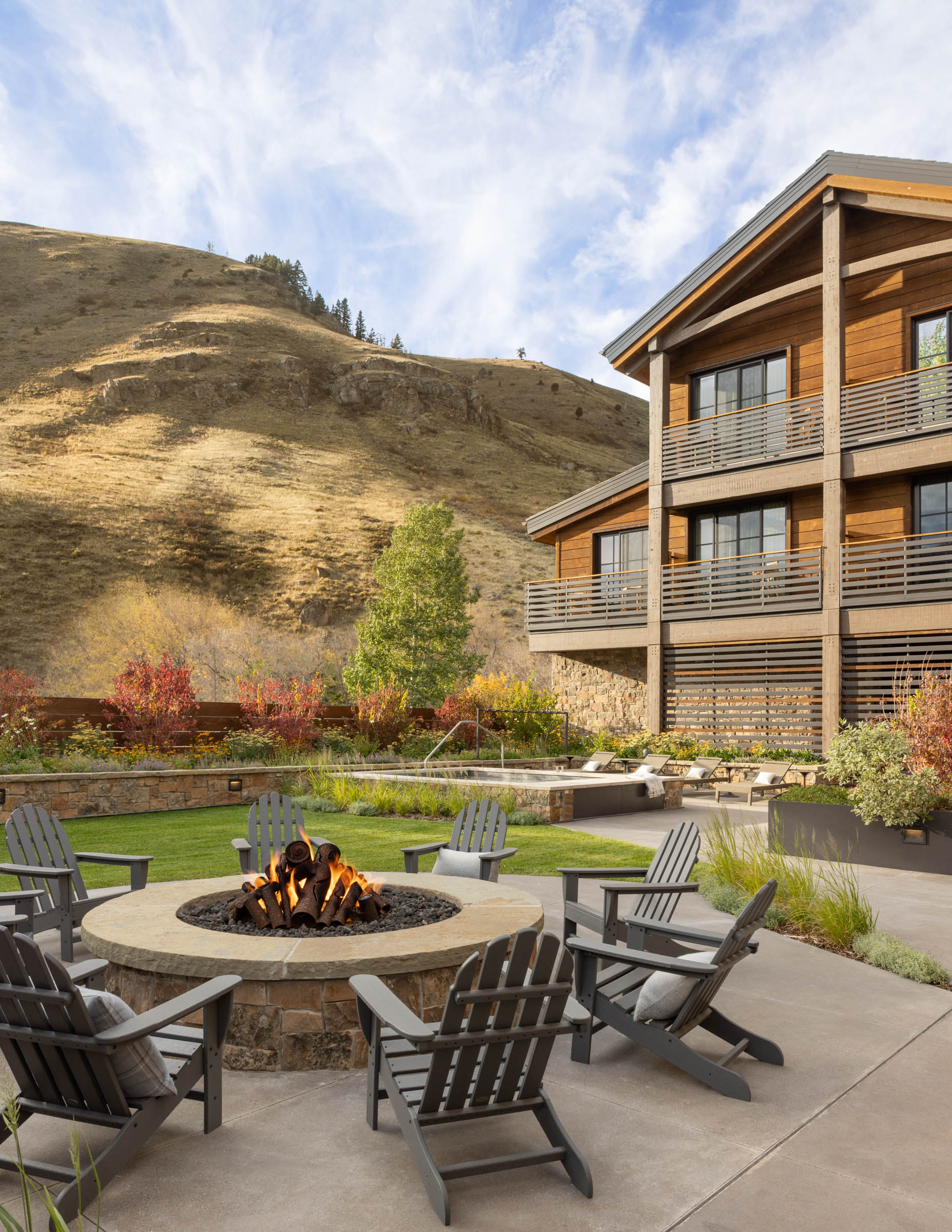
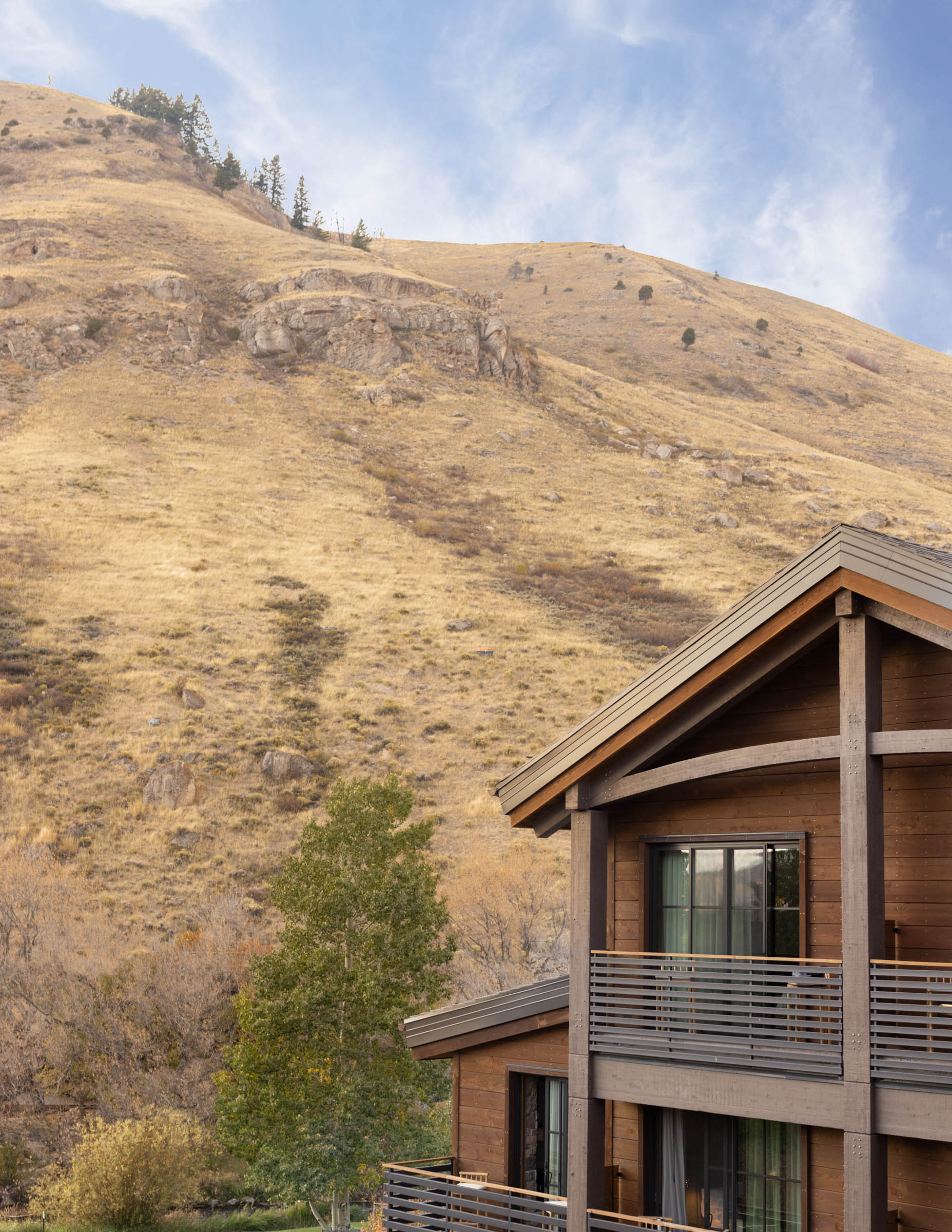
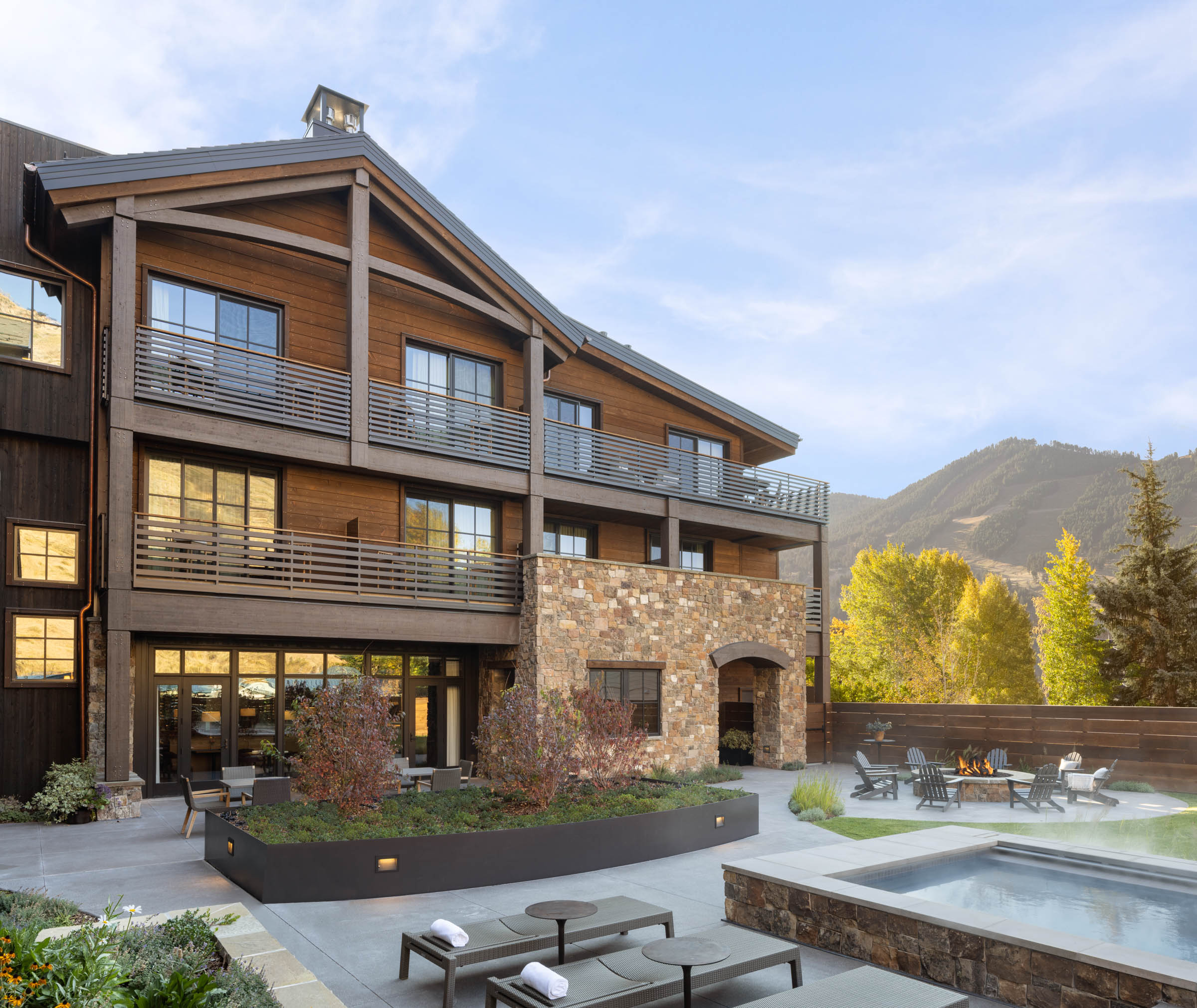
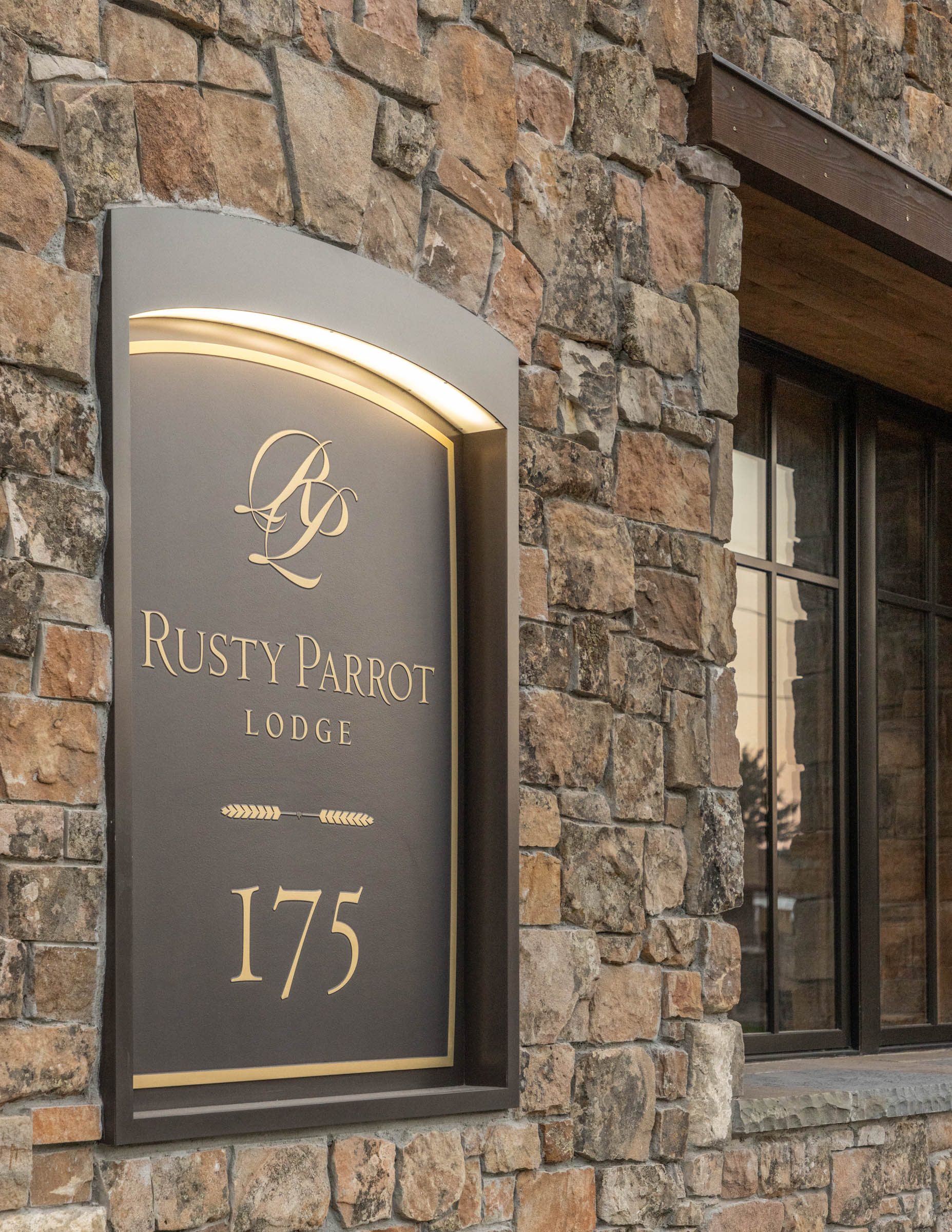
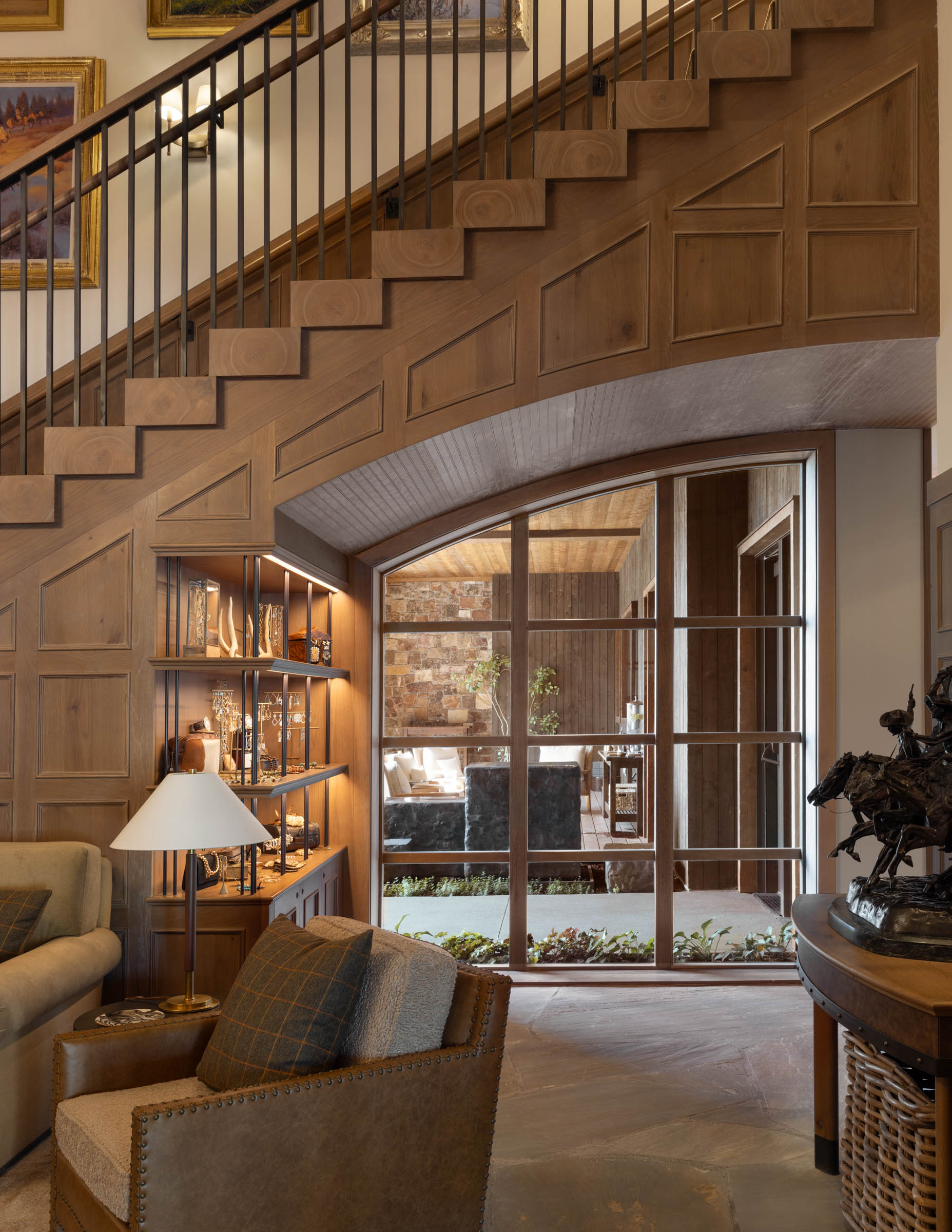
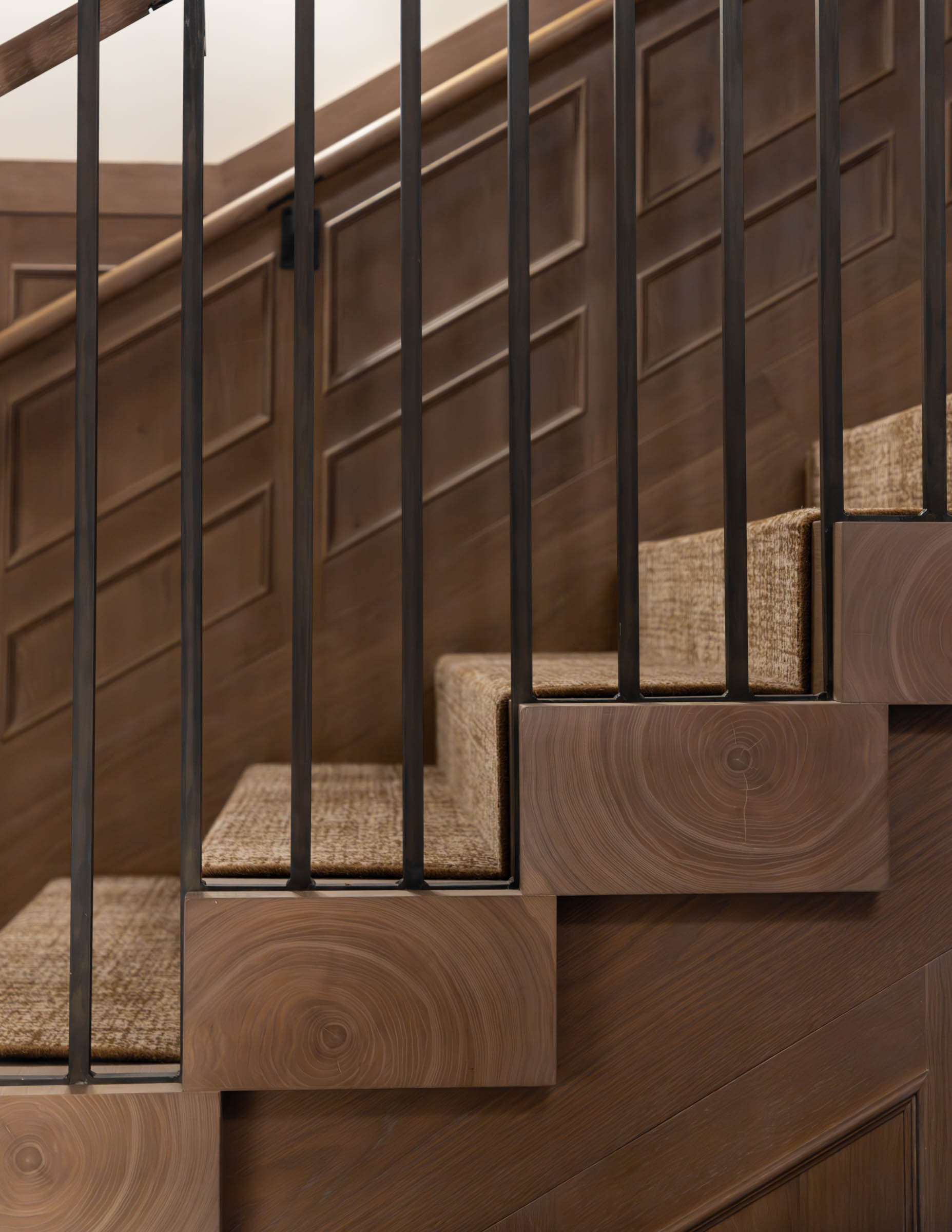
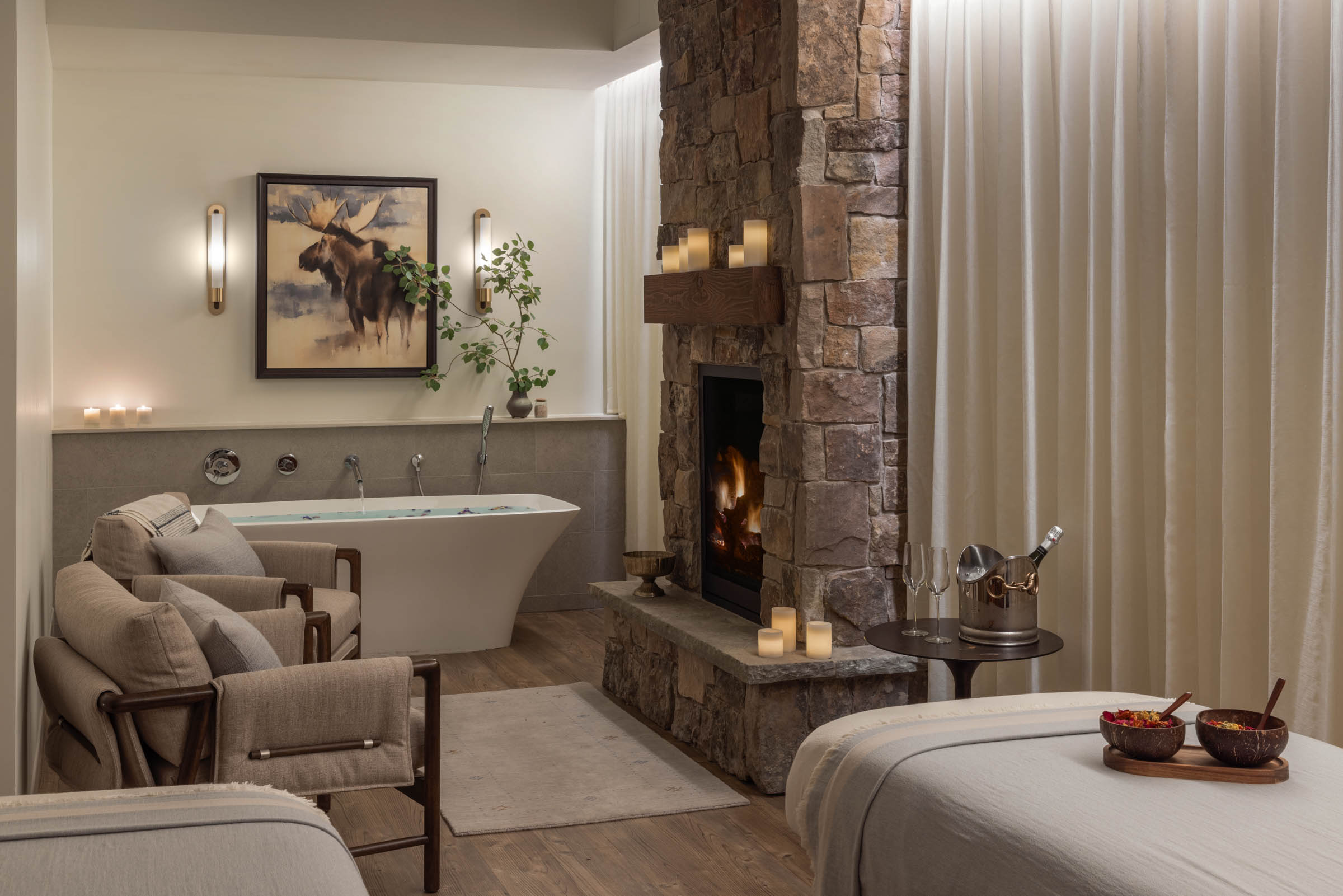
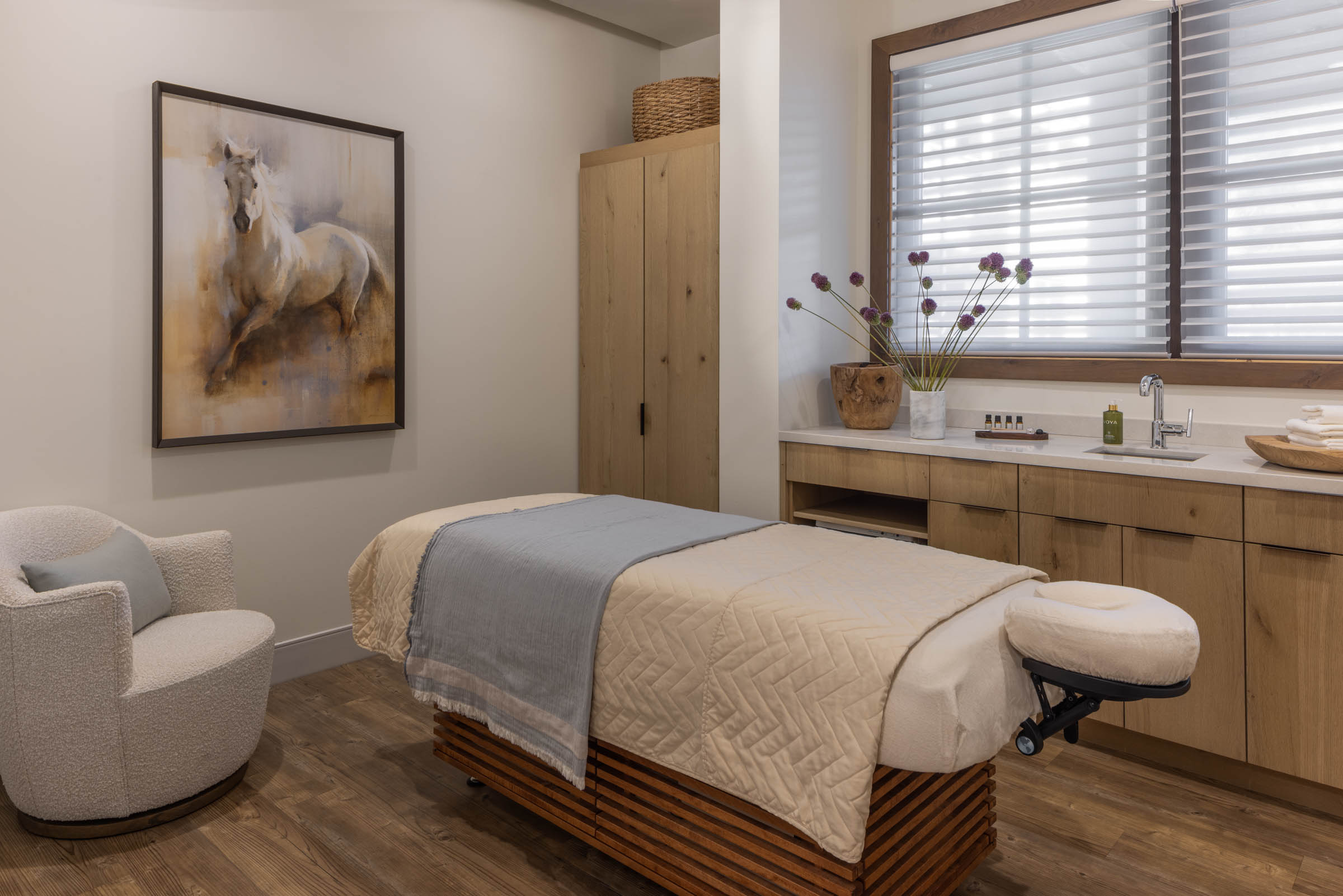
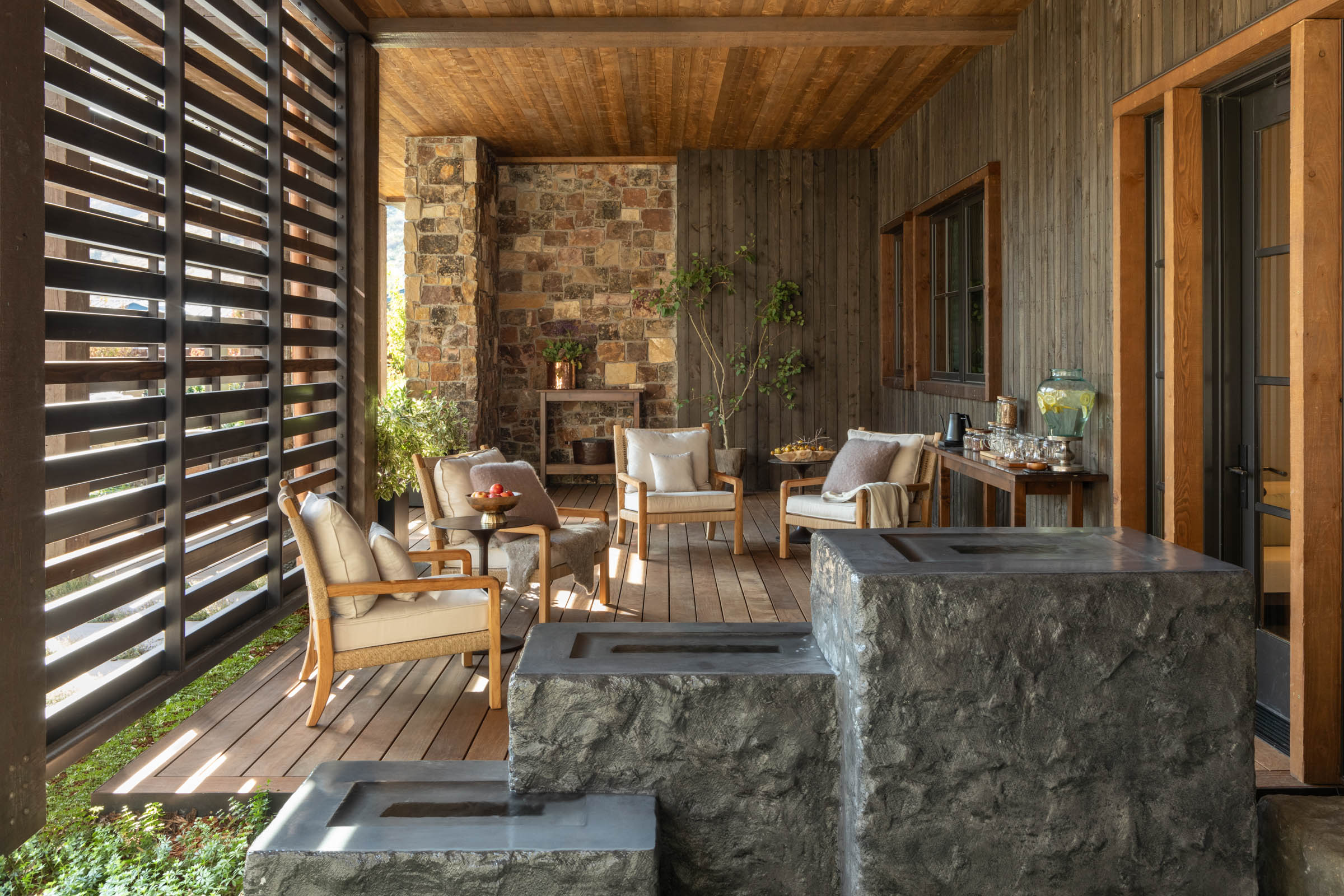
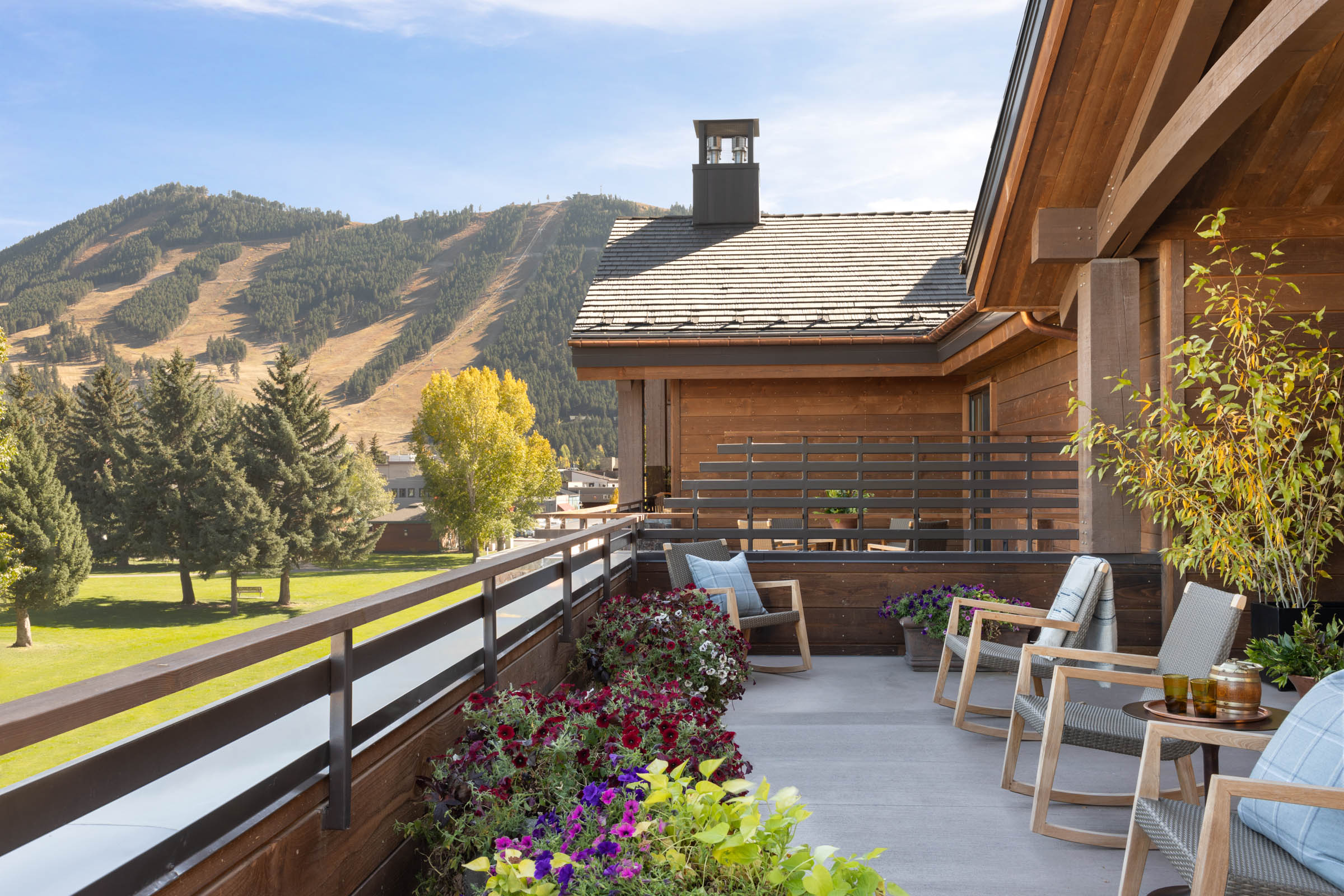
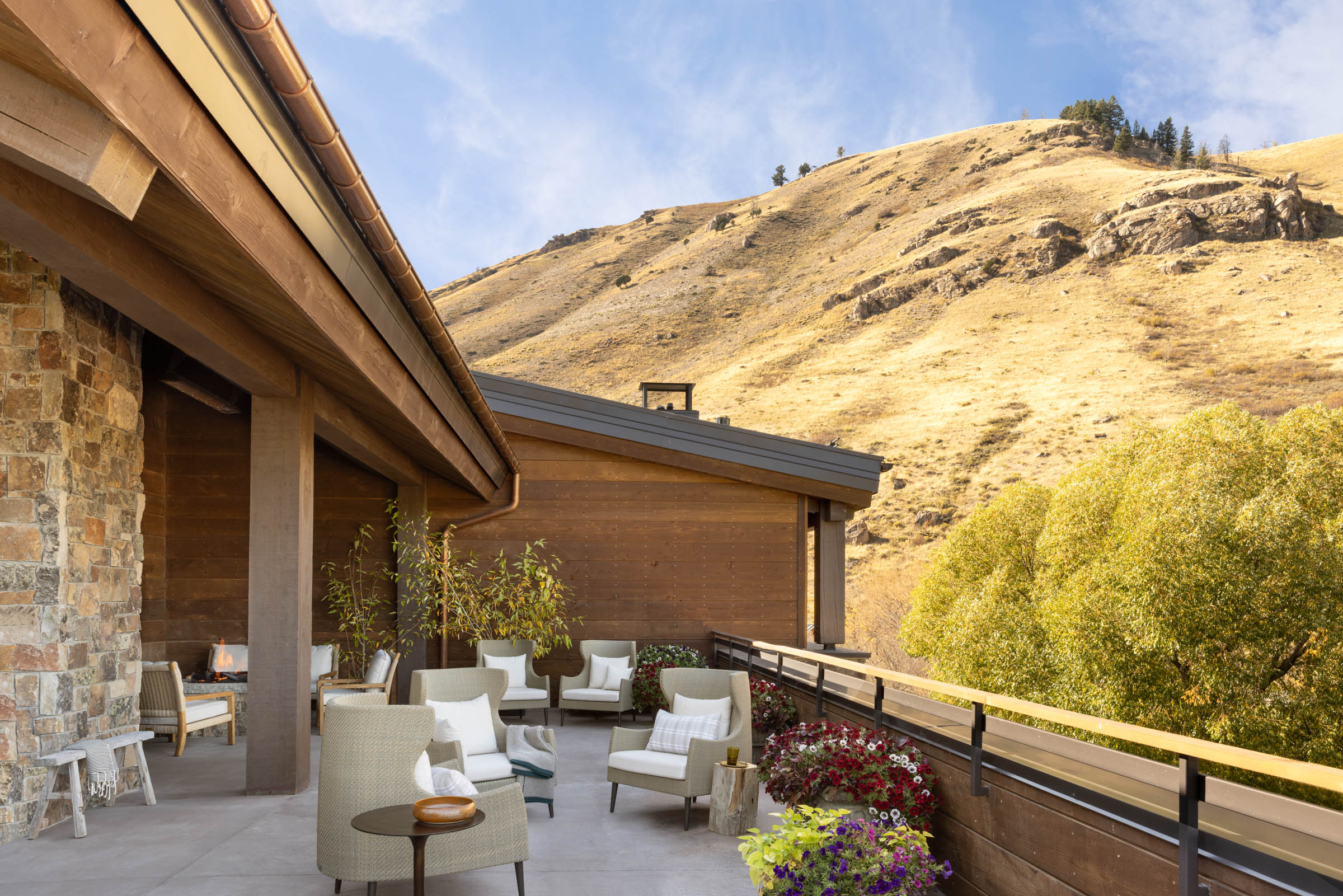
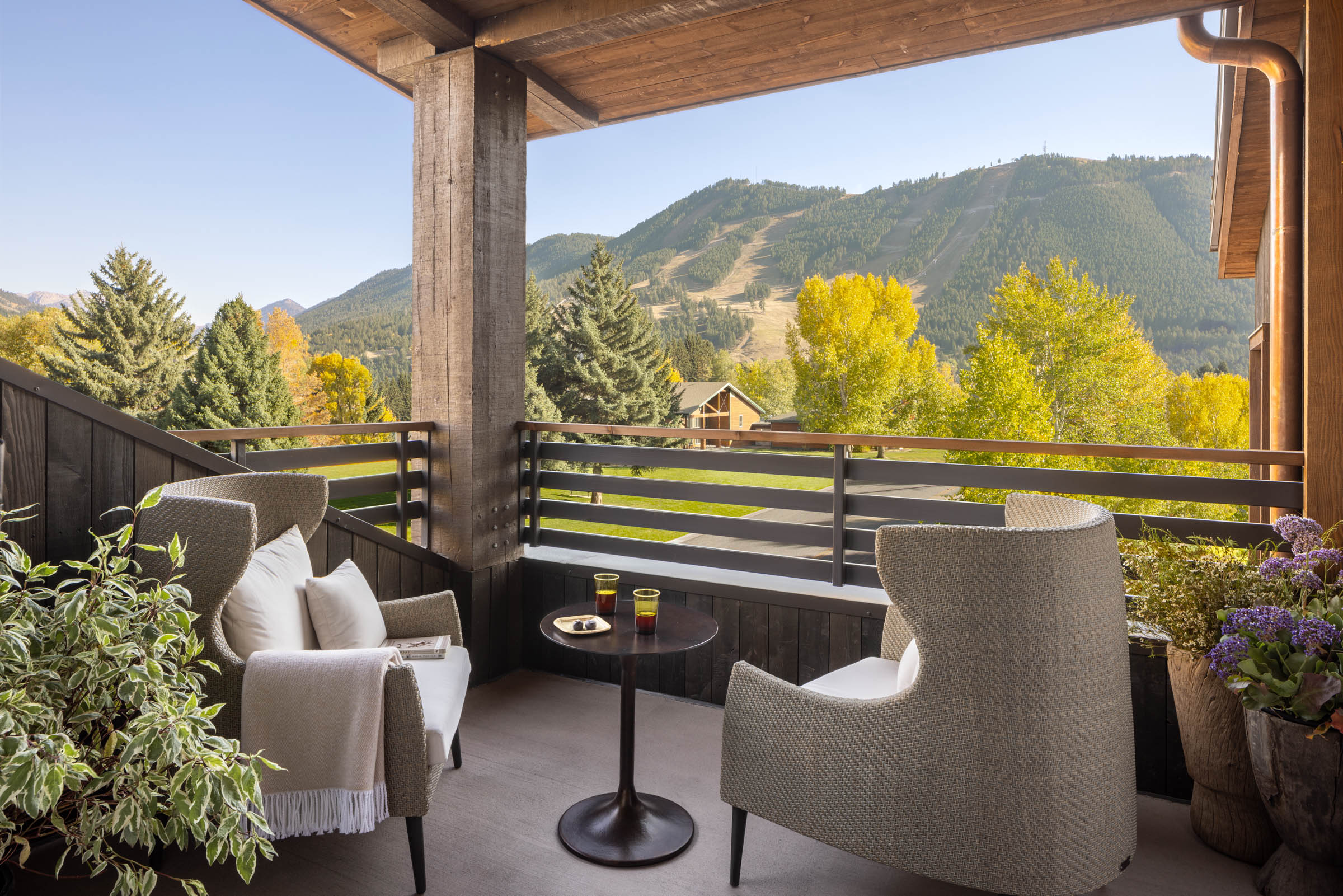
Rusty Parrot Lodge
Replacing a beloved building with a new version – one that doesn’t disappoint those who remember, and were fans of, the original – remains one of the most interesting, and tricky, of design opportunities. How do you protect and preserve and, at the same time, advance and innovate? That was the challenge when R+B was selected to resurrect the Rusty Parrot Lodge, an iconic Jackson, Wyoming luxury inn that had been destroyed by fire. The owners were determined to recapture the eccentric flavor that popularized the original – even as they recognized the need to contemporize the design (and make it code-compliant), improve the lodge’s amenities, and render the entirety a model of sustainability.
The site, at the convergence of the town grid and its rural surroundings, suggested a complementary architecture, at once urban and indebted to regional traditions. Inspired by the great lodges of the historic west, the wooden, three-story gabled structure emerges from low stone walls suggestive of a preexisting artifact, a seductive interweaving of past and present. Compliance with the town’s zoning standards influenced the inclusion of private porches and communal balconies – the latter named The Perch and the Wildlife Deck – which allow the building to taper in mass and scale while generating an undulating rhythm of solids and voids that, not least, affords an embrace of a spectacular setting comprised of mountains, valleys, wildlife, and parklands.
On the exterior, the inclusion of a porte-cochère ensures that arriving guests enter the lodge while entirely protected from the region’s inclement weather. Within, the owners expressed a commitment to preserving the old Parrot’s warm domestic character, famously reinforced by the seductive scent of on-site baking. In response, R+B crafted a commanding grand stair – the new interior’s defining feature – which, in addition to connecting the lodge’s three floors and encouraging collective conviviality, draws the aromas upward, infusing the entirety with the pleasurable presence of home cooking.
R+B’s embrace of sustainable practice includes an open-loop ground-source heat pump, geothermal cooling via a subterranean natural aquifer, and advantageous siting driven by optimal solar access. Subterranean parking reduces the site’s visual footprint, and enabled the construction of a tranquil south-facing garden revealing panoramic views and warmed by the sun.
A central theme of the project was a sense of discovery, a philosophical underpinning of the original lodge. Accordingly, a series of ‘found moments,’ which encourage guests to explore the environment in comfort, are nested in the design; the experience is reinforced by a new spa, the gourmet Wild Sage restaurant (featuring a homespun open kitchen), and a double-sided fireplace shared by the domestic-scale lobby and barroom. Natural and local materials, migrated from the exterior into the décor, craft a subtle merging of the lodge and its surroundings.
The new Rusty Parrot bridges old and new, urban and rural, rustic and refined, and home and hospitality. The outcome brings back a lost legacy and – better still – sets the stage for the making of new memories.
Project Completion
2024
Project Size
50,500 SF
Publications
R+B Services
Architecture
Project Team Members
-
Landscape Architect: Agrostis
-
Structural Engineer: KLAA
-
Mechanical Engineer: Energy 1
-
Civil Engineer: Y2 Consultants
-
Photographer: Lisa Romerein
-
Renderings: Motiv
-
Contractor: ZCM
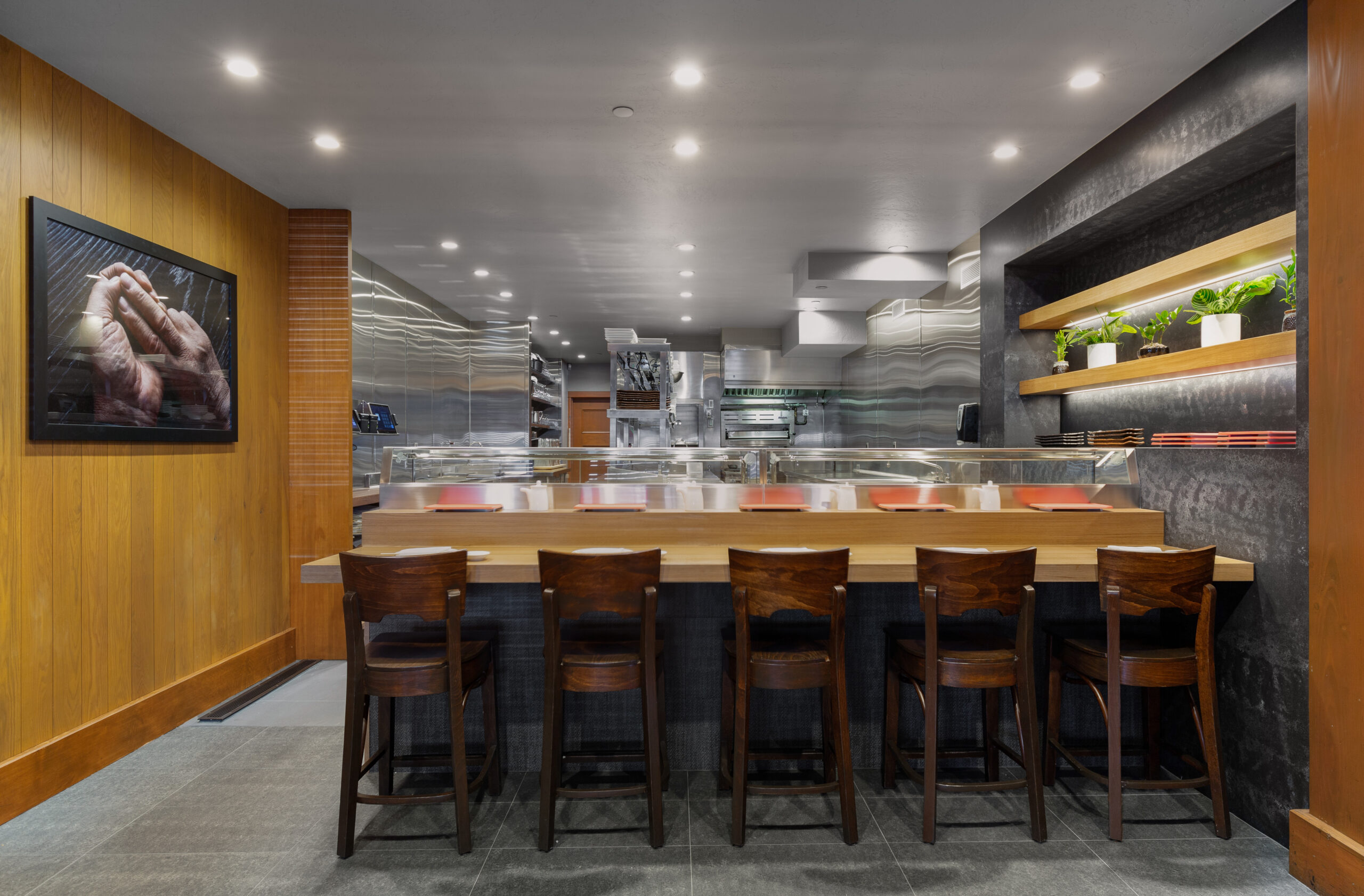
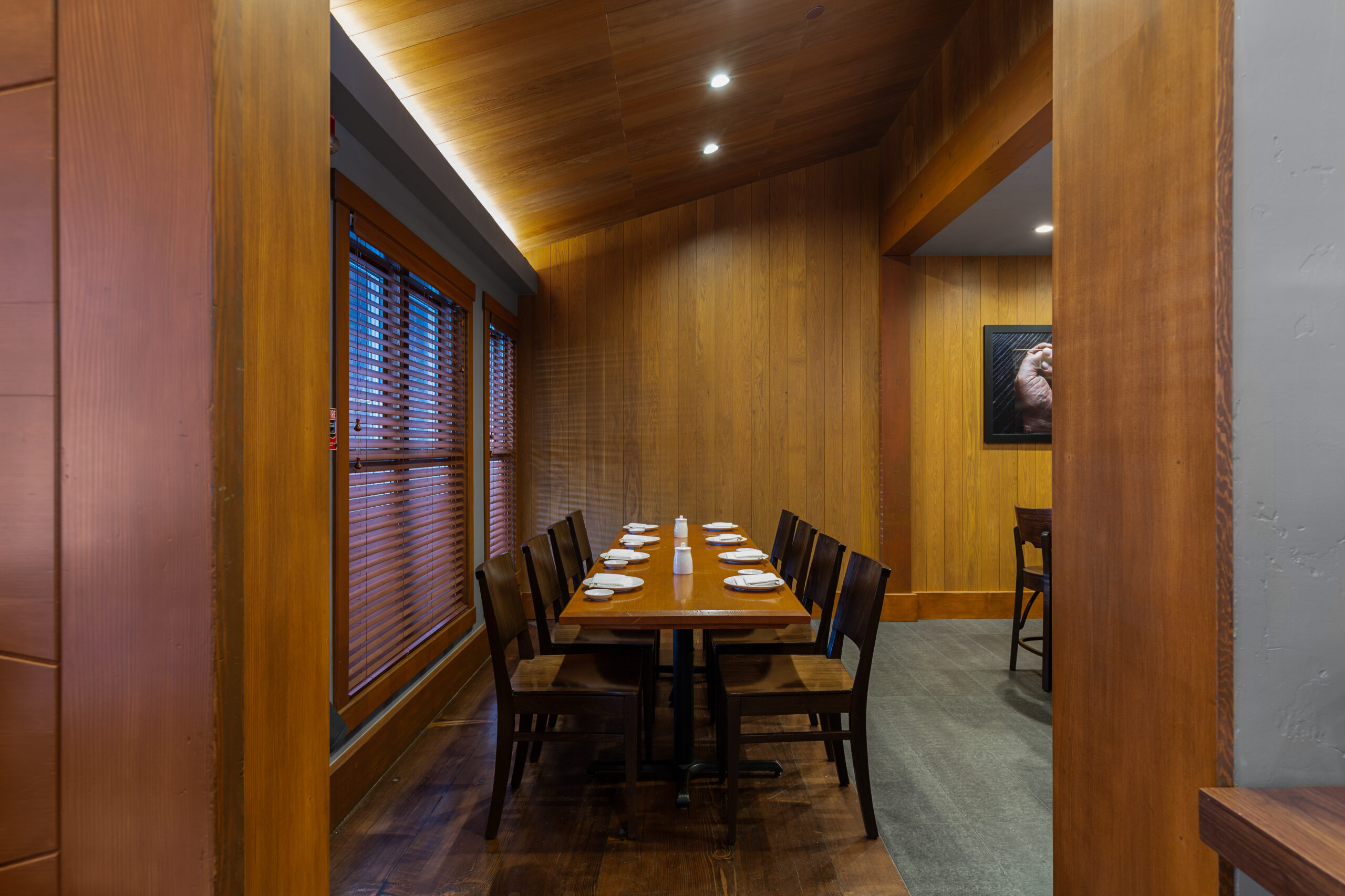
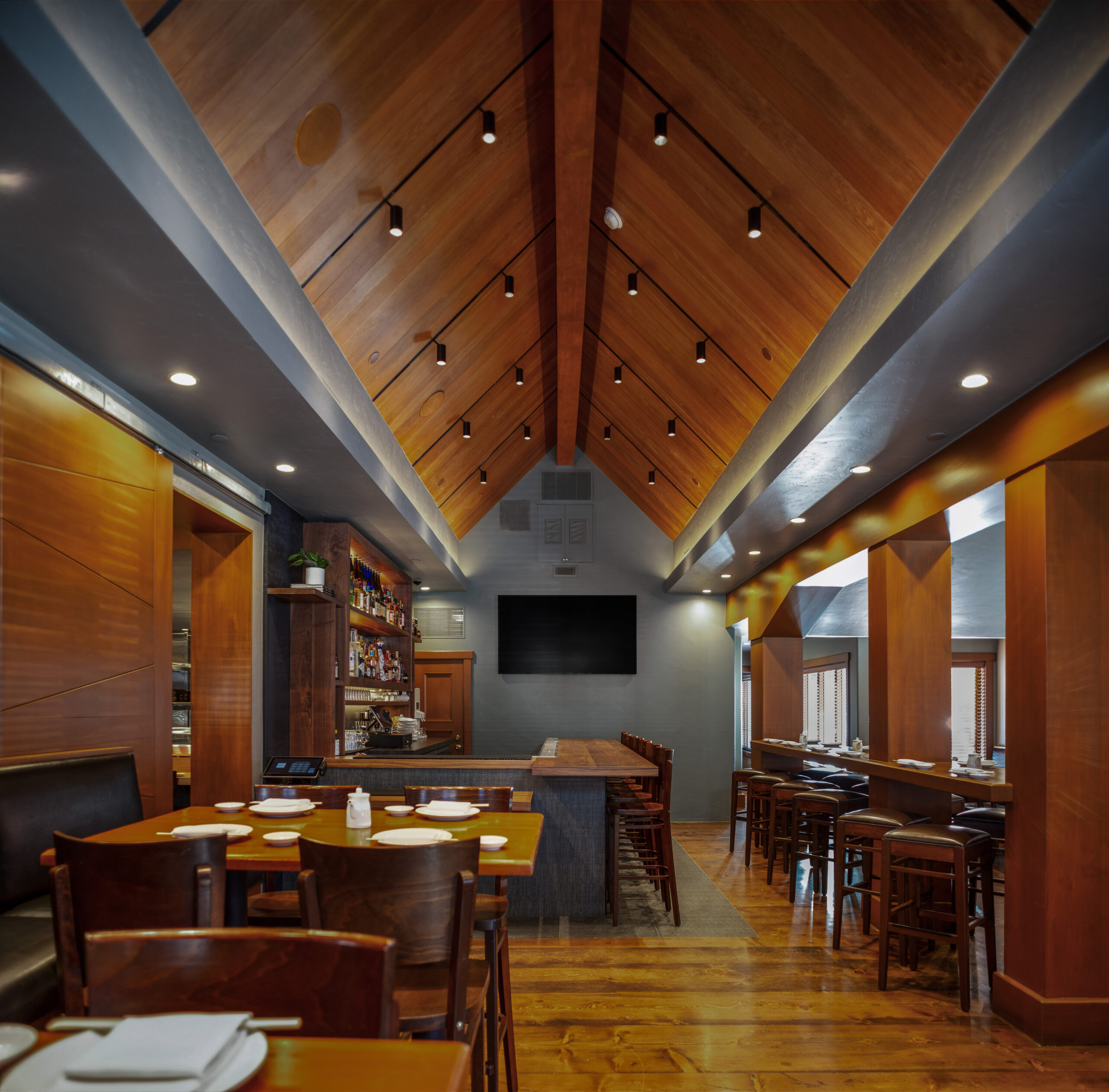
Matsuhisa
Matsuhisa Aspen is located in a small Victorian building located in right off Main Street of Aspen, CO. Nestled amidst other period homes, constructed in the early 1900s, the property retains many original features such as its wood siding, period windows, and gabled roofline, all contributing to its character as a significant local landmark. The design approach respects the building’s history while introducing subtle, modern interventions that will allow for the functionality required of a contemporary restaurant.
The design of the restaurant has been thoughtfully crafted to create a harmonious environment where the focus remains squarely on the food, enhancing the culinary experience without overpowering it. Inspired by the principles of Japanese design, the interior is intentionally minimalist and restrained, with clean lines, natural materials, and a neutral color palette that provides a serene backdrop. Every element in the space is carefully chosen to complement, rather than compete with, the artistry of the dishes. The use of wood, stone, and soft lighting creates a warm, inviting atmosphere, while the uncluttered spaces allow the vibrant colors and delicate presentation of the food to take center stage.
This project was subject to a strict, three-month timeline for construction, with the goal of completing the remodel during Aspen’s off-season period. Given the seasonal nature of the area, it was critical that the restaurant opens promptly in time for the holiday rush, when Aspen’s peaks with its seasoned visitors. Every phase of the project, from demolition to final finishing touches, is being carefully planned to maximize efficiency without compromising quality
The opportunity to contribute to the creation of a space that aligns with the chef’s exceptional culinary vision has been a privilege. The restaurant now stands as a beautiful reflection of both the chef’s artistry and the timeless charm of Aspen, and we are proud to have played a role in bringing this unique dining experience to life. We look forward to seeing it flourish as a new cultural touchstone for the community and a destination for guests from around the world.
Project Completion
2023
Project Size
1,725 SF
Publications
Purist, 2024
R+B Services
-
Architecture
-
Renderings
Collaborators
-
Lighting Designer: Elumenate
-
Structural + Mechanical Engineer: REG
-
Photographer: Brad Yamamoto
-
Contractor: Viking Construction
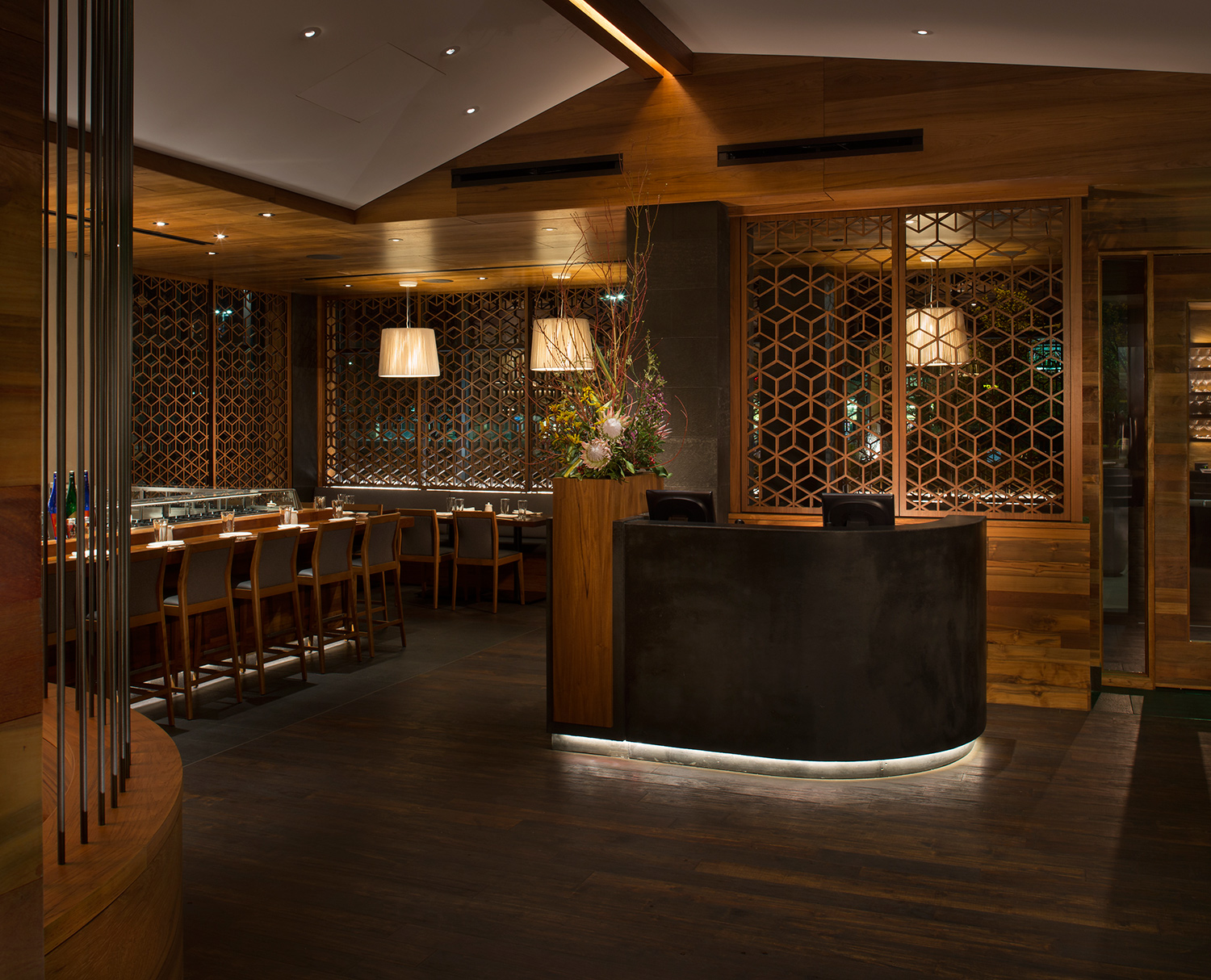
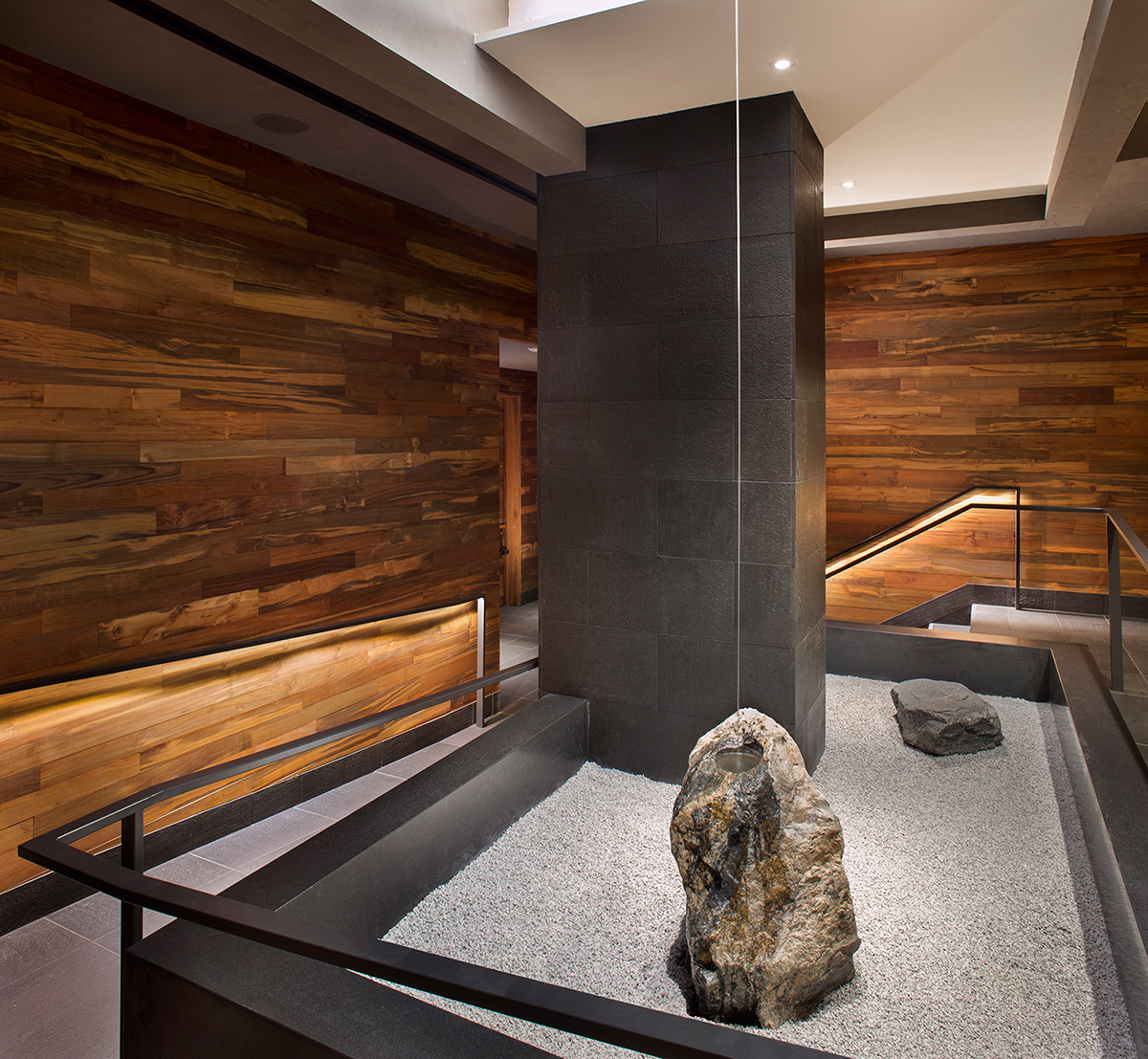
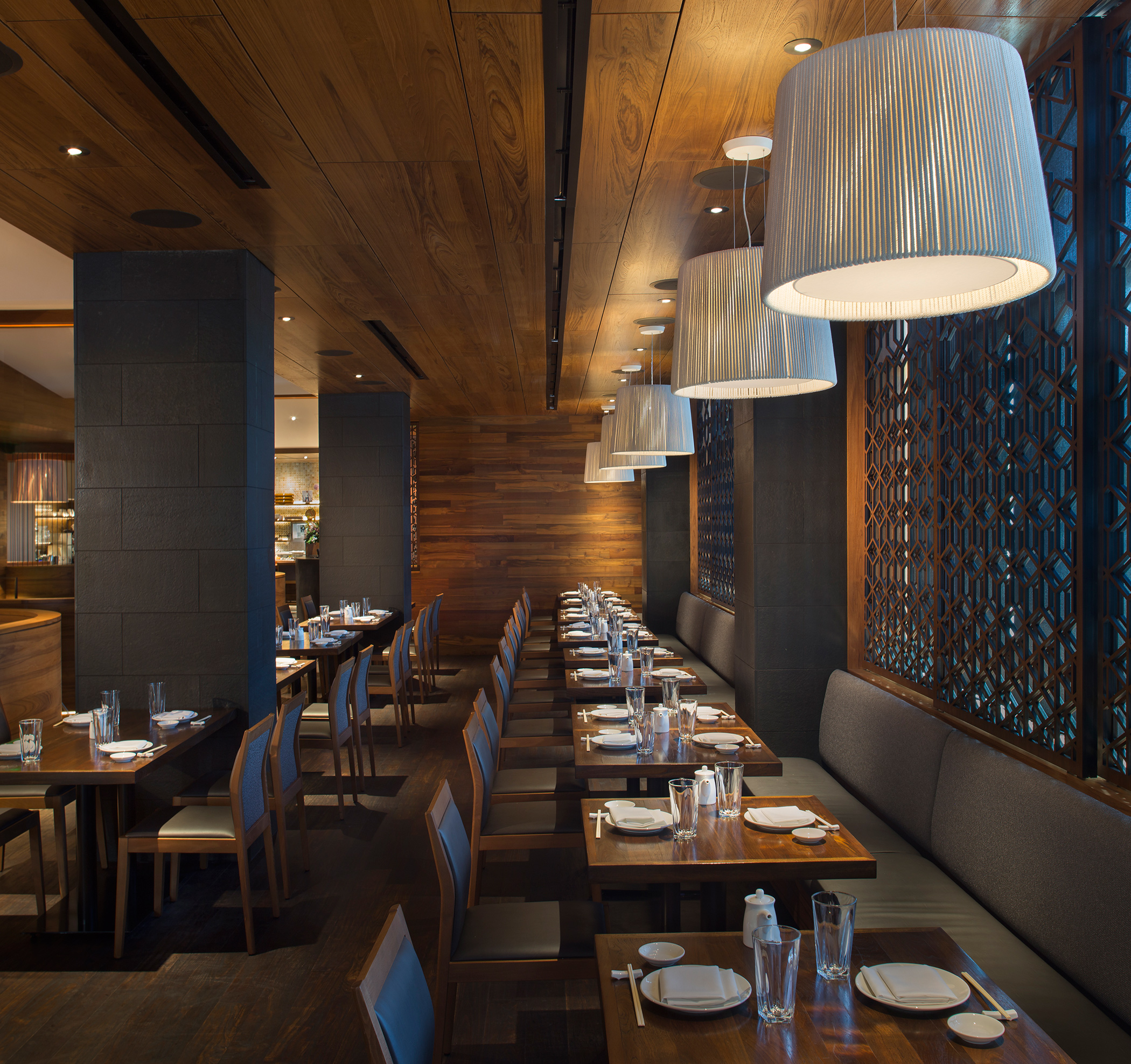
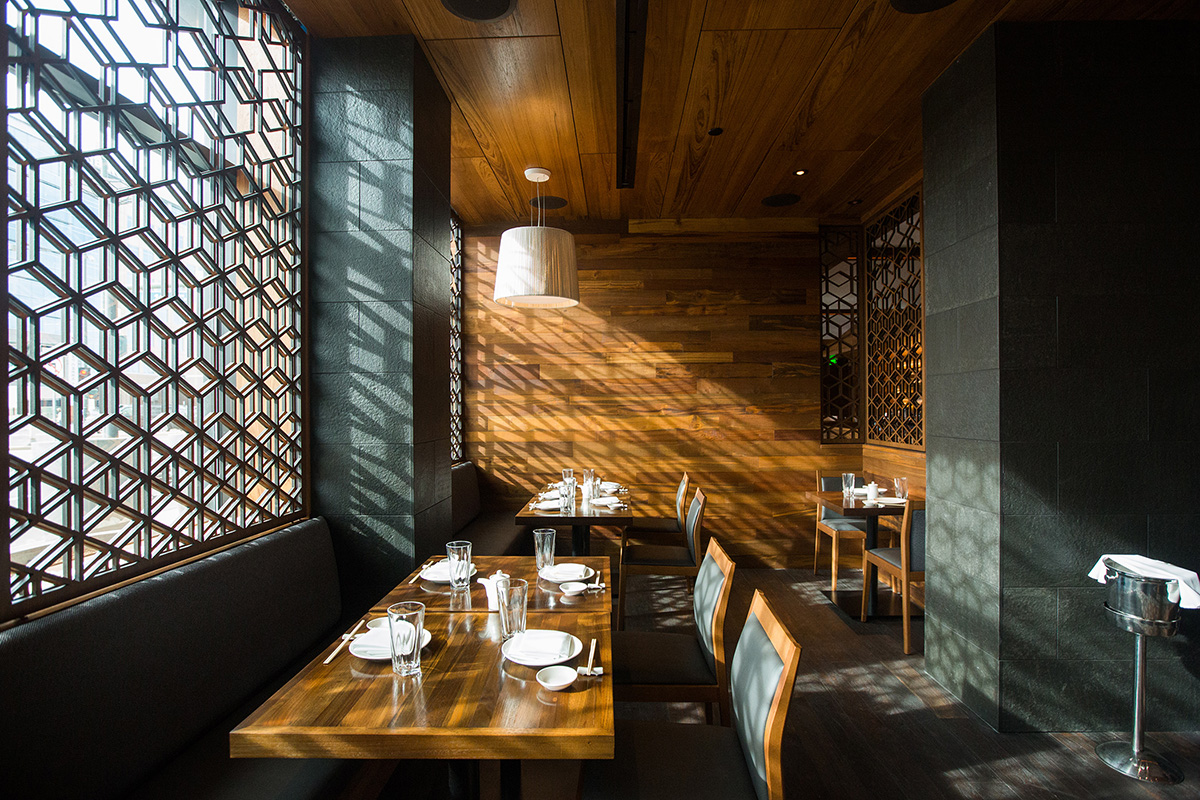
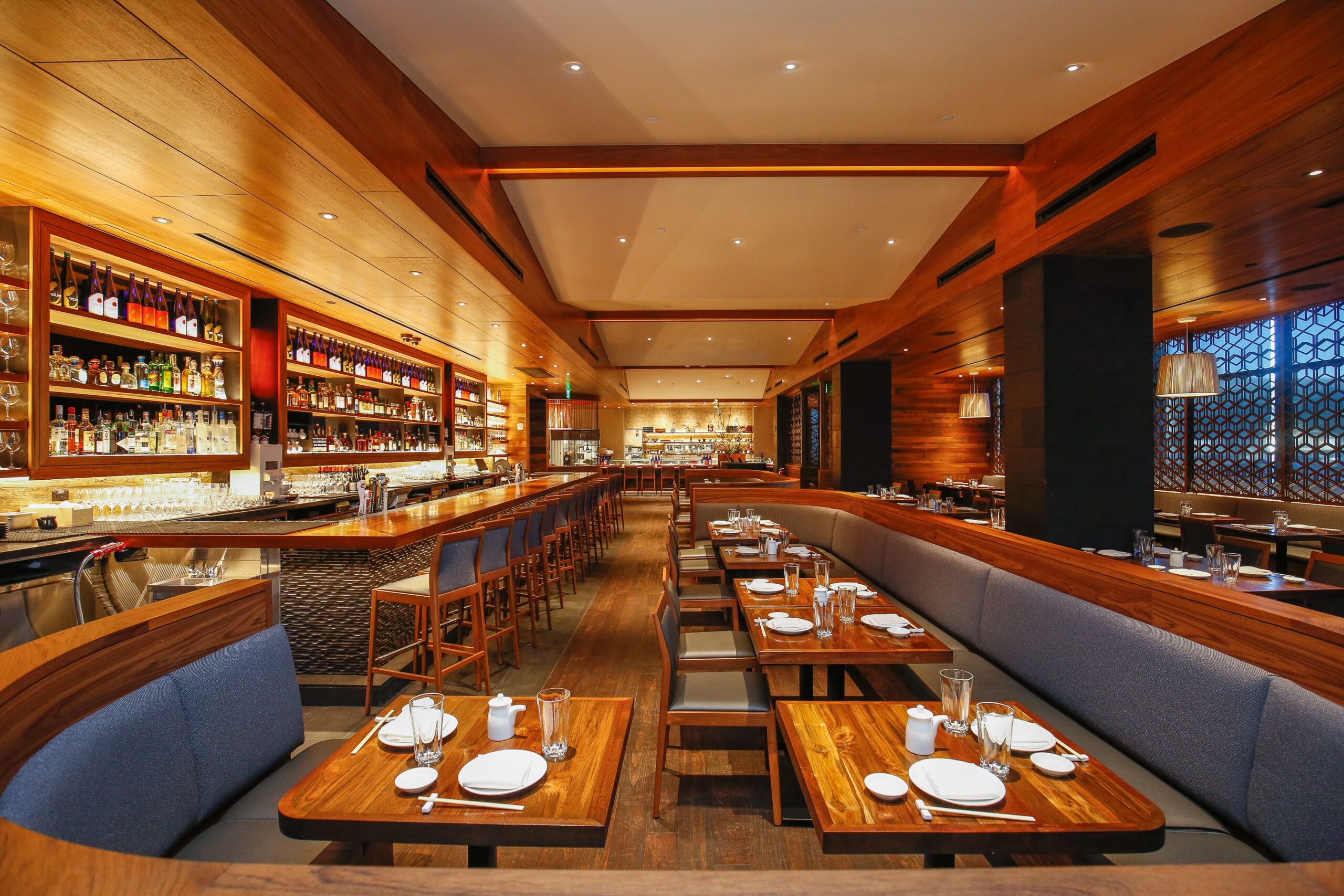

Matsuhisa
Alongside Nobu Matsuhisa and the ownership team, R+B set out to create a space that continues to evolve the concept of the Matsuhisa culture. Reflecting on their Japanese travel experience, R+B Principals created a clear design concept that is centered on traditional Japanese culture: thoughtful, unique, humble and purposeful. The dining experience is elevated with exquisitely detailed materials of a muted, natural palette.
I really enjoyed the process from beginning to end with the entire design team of very talented people. Great job! We all created a killer restaurant for thousands of people to enjoy for many years to come. – Todd Clark, Matsuhisa Partner and Director of Operations
Project Completion
2016
Project Size
7,800 SF
Project Awards
-
2018 ASID Crystal Award – Hospitality
-
2018 ASID – Judges Merit Award
-
2018 NEWH Rocky Mountain Chapter – TopID Award
-
2017 NEWH Rocky Mountain Chapter – TopID Award
-
2016 IIDA BESTaward – EAT&DRINK
Publications
-
NEWH Magazine, Fall 2017
-
Building Dialogue, September 2016
-
ENR, August 2016
-
Interiors Colorado, Summer 2016
-
Colorado Real Estate Journal, May 2016
-
Denver Eater, April 2016
-
Hospitality Design, April 2015
R+B Services
-
Architecture
-
Interior Design
Collaborators
-
Design Collaborator: Yoshi Kida
-
Lighting Designer: Element Architectural Lighting Design
-
Structural Engineer: Monroe & Newell
-
Mechanical Engineer: Boulder Engineering
-
Audio/Visual: Xssentials
-
Photographer: Brent Moss
-
Photographer: Adam Larkey
-
Photographer: Danielle Lirette
-
Contractor: Haselden Construction
Bad Harriet
An Aspen landmark for over 125 years, Hotel Jerome has been thoughtfully expanded while remaining loyal to its revered history and authentic character. As part of a recent multi-programmed project, which also included the design of a three-story, multiple-suite and gathering place addition, the design team restored the adjoining historic Aspen Times Building, the highlight of which is the new underground speakeasy bar, Bad Harriet.
Named after the wife of early Aspen developer Jerome B. Wheeler, who built the hotel and after whom the Hotel Jerome is named, Bad Harriet bridges Aspen’s past and future through the conversion of the historic 1904 Aspen Times Newspaper Building. Inspired by the Victorian period in which the building was constructed, and in collaboration with TAL Studio, the same interior design firm the team worked with during the 2012 full interior renovation of the Hotel Jerome, the interior palette, millwork, finishes and furnishings also take their cue from the original hotel. Mirrored wall panels with polished accents pair with painted wood trim to create a sultry atmosphere for the intimate, 55-seat space, while a Bruna Terra Leather stone bar adds a solid contemporary edge.
The restoration of the historic Aspen Times Building provides a timeless addition to the Hotel Jerome. Extraneous exterior additions were removed, and a steel super-structure was installed to allow the original building to once again stand on its own. Original wood siding was preserved and re-detailed. Historic windows that had once been hidden or removed were replaces with new wood windows. A new metal roof was added to reflect the historic vernacular. A new sliding barn door system was added to the original garden-facing wall to create permeability or enclosure as needed.
Project Completion
2018
Project Size
1,218 SF
Project Awards
-
2019 AIA Colorado Award of Distinction & Honorable Mention
-
2013 Hospitality Design Award Finalist
Publications
R+B Services
-
Architecture
-
Interior Architecture
Collaborators
-
Interior Designer: TAL Studio
-
Photographer: Shawn O’Connor
-
Contractor: Haselden Construction

